Jun 2012
Praying for Rain
30/06/12 04:35
It has been hot around here. The warmest day this week was Tuesday, when the temperatures topped 100 degrees throughout the hills. Then it was cooler Wednesday with the highs in the last couple of days reaching into the ‘90’s. That is to be expected. The end of June and the beginning of July are summer around here. And we really have nothing to complain about. The temperatures are a lot hotter elsewhere and the fires in Colorado, Wyoming, Montana and Utah are more intense and far more dangerous than what we’ve got going in the hills right now.
Still it is hot. And we’ve got fires in familiar places. And we keep sniffing the air and wishing for rain and thinking of cooler days.
I know that different people have different metabolisms, but I seem to be of northern European descent and I feel like I was made for winter. I enjoy living in a place with all four seasons, but I’m not a big fan of the warmest days. I prefer the other three seasons to summer, if the truth is told. If it weren’t for the short days all winter long, I think I could tolerate places farther north just fine. Say Jasper, in Canada. There is a place with a climate that I could get used to. As it is, I am grateful to live in this place. It has a climate that suits me fine.
I wouldn’t mind it if it got a bit cooler at night right now, however.
The tomatoes, on the other hand like this weather just fine, thank you very much. As long as I keep them watered, they’re thriving and I’m starting to think about the taste of that first garden tomato. Mmm. There’s nothing like that.

Our friends, Mitch and Jeri Behringer were riding their motorcycle home from a picnic Wednesday night and they stopped by Sheridan Lake. Sheridan Lake is my favorite boating spot in the hills. They took a picture of the Dakota fire burning on the shores of the lake. The fire is now nearing containment, but the lake remains closed to boating. The road, however, was opened to public travel yesterday, so I may slip up to take a look sometime this weekend.
We’re in no danger. That fire is ten miles from us. The homes that were placed on evacuation notice have all been successfully defended and there were no actual evacuations required by this fire. Actually we’re lucky. The area where most of the fire was concentrated has been cleared of the bark beetle infested trees and was a pretty fire-safe area. Because the trees had been thinned, the fire remained on the ground for the most part and many trees will survive the burn.
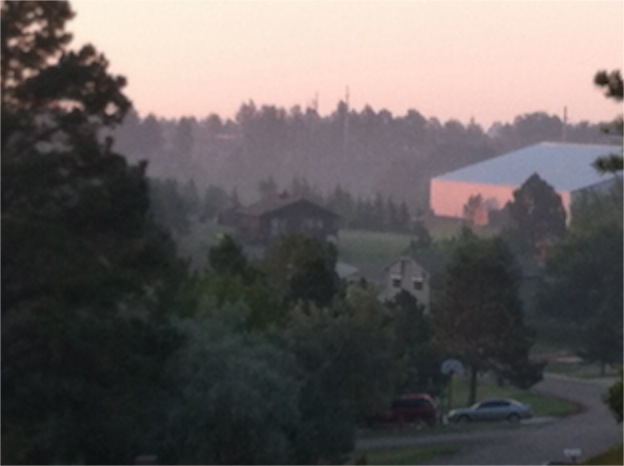 The fire has meant that our mornings are pretty smoky around here. You can smell and see the smoke hanging in the dense air before the wind picks up in the morning. I’m sure that all of that smoke is a problem for some people, especially those who suffer from allergies or asthma. Fortunately, I haven’t noticed any ill effects to the smoke, but breathing all of that junk can’t be good for anyone.
The fire has meant that our mornings are pretty smoky around here. You can smell and see the smoke hanging in the dense air before the wind picks up in the morning. I’m sure that all of that smoke is a problem for some people, especially those who suffer from allergies or asthma. Fortunately, I haven’t noticed any ill effects to the smoke, but breathing all of that junk can’t be good for anyone.
The upside of all of the smoke is that it makes for gorgeous sunrises and sunsets. The sun gets a particular shade of orange when it is low in the sky that is not matched by any other conditions. I know the look of a smoky sunrise or sunset.
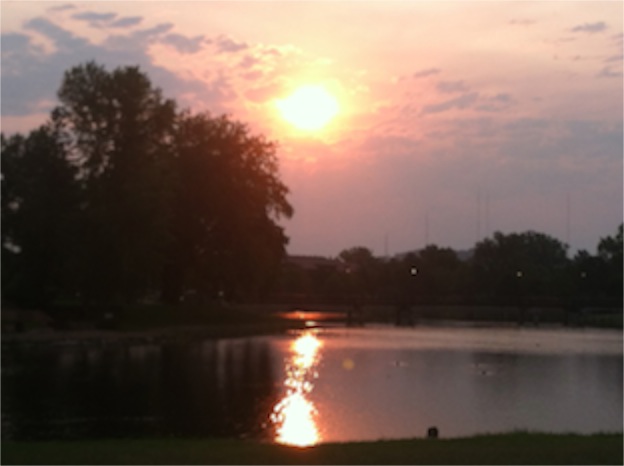 With the fire burning at Sheridan Lake, I decided to row in Canyon Lake this morning. Canyon Lake is very small. As soon as I get going in one direction, it is time to turn. But I am not a skilled rower and I’m mostly getting in a bit of practice in advance of the official launching of the new rowboat. We’ll have some kind of formal launch party when our daughter and son-in-law are here next week.
With the fire burning at Sheridan Lake, I decided to row in Canyon Lake this morning. Canyon Lake is very small. As soon as I get going in one direction, it is time to turn. But I am not a skilled rower and I’m mostly getting in a bit of practice in advance of the official launching of the new rowboat. We’ll have some kind of formal launch party when our daughter and son-in-law are here next week.
Today we have a baptism in the morning. Military deployments are not scheduled around the convenience of families and we simply could not find a Sunday when all of the grandparents could get together and the father is facing deployment, so Saturday it will be. I love baptisms, but so does the congregation, so having most of them miss out on the event is a bit sad. I’m working with a lay minister who is a member of our congregation to forge a service that is meaningful and where the presence of the congregation can be felt, even though most of them will be elsewhere.
There is a committal service in Belle Fourche in the afternoon, so the day will be full. Still, I’m, getting this blog published early so that I will be able to go row a bit before all of the activities begin. Rowing is good exercise and I’m gaining skill with each stroke. A few years ago Richard Bode wrote a wonderful little book: “First You Have to Row a Little Boat: Reflections on Life & Living.” I can’t help but think of him as I sit in my little boat with the oars in my hands. “For the truth is that I already know as much about my fate as I need to know. The day will come when I will die. So the only matter of consequence before me is what I will do with my allotted time. I can remain on shore, paralyzed with fear, or I can raise my sails and dip and soar in the breeze.”
He’s got it right. So I choose not to remain on shore. I try to dive deeply into life each day and to feel the rise and fall of the swells and know the cool of the breeze on my face.
On hot days being out on the lake on a cool morning is a blessing. Of course the freedom of a hand-made, person-powered boat is a blessing at any time. It only takes a glance at the paper to be reminded that I’ve got it really lucky. So as I paddle, I’ll be praying for those who have lost their homes in the fires. And if I get around to praying for rain, I’ll pray for rain for Colorado. We need the rain, but we’ll wait if need be.
Still it is hot. And we’ve got fires in familiar places. And we keep sniffing the air and wishing for rain and thinking of cooler days.
I know that different people have different metabolisms, but I seem to be of northern European descent and I feel like I was made for winter. I enjoy living in a place with all four seasons, but I’m not a big fan of the warmest days. I prefer the other three seasons to summer, if the truth is told. If it weren’t for the short days all winter long, I think I could tolerate places farther north just fine. Say Jasper, in Canada. There is a place with a climate that I could get used to. As it is, I am grateful to live in this place. It has a climate that suits me fine.
I wouldn’t mind it if it got a bit cooler at night right now, however.
The tomatoes, on the other hand like this weather just fine, thank you very much. As long as I keep them watered, they’re thriving and I’m starting to think about the taste of that first garden tomato. Mmm. There’s nothing like that.

Our friends, Mitch and Jeri Behringer were riding their motorcycle home from a picnic Wednesday night and they stopped by Sheridan Lake. Sheridan Lake is my favorite boating spot in the hills. They took a picture of the Dakota fire burning on the shores of the lake. The fire is now nearing containment, but the lake remains closed to boating. The road, however, was opened to public travel yesterday, so I may slip up to take a look sometime this weekend.
We’re in no danger. That fire is ten miles from us. The homes that were placed on evacuation notice have all been successfully defended and there were no actual evacuations required by this fire. Actually we’re lucky. The area where most of the fire was concentrated has been cleared of the bark beetle infested trees and was a pretty fire-safe area. Because the trees had been thinned, the fire remained on the ground for the most part and many trees will survive the burn.

The upside of all of the smoke is that it makes for gorgeous sunrises and sunsets. The sun gets a particular shade of orange when it is low in the sky that is not matched by any other conditions. I know the look of a smoky sunrise or sunset.

Today we have a baptism in the morning. Military deployments are not scheduled around the convenience of families and we simply could not find a Sunday when all of the grandparents could get together and the father is facing deployment, so Saturday it will be. I love baptisms, but so does the congregation, so having most of them miss out on the event is a bit sad. I’m working with a lay minister who is a member of our congregation to forge a service that is meaningful and where the presence of the congregation can be felt, even though most of them will be elsewhere.
There is a committal service in Belle Fourche in the afternoon, so the day will be full. Still, I’m, getting this blog published early so that I will be able to go row a bit before all of the activities begin. Rowing is good exercise and I’m gaining skill with each stroke. A few years ago Richard Bode wrote a wonderful little book: “First You Have to Row a Little Boat: Reflections on Life & Living.” I can’t help but think of him as I sit in my little boat with the oars in my hands. “For the truth is that I already know as much about my fate as I need to know. The day will come when I will die. So the only matter of consequence before me is what I will do with my allotted time. I can remain on shore, paralyzed with fear, or I can raise my sails and dip and soar in the breeze.”
He’s got it right. So I choose not to remain on shore. I try to dive deeply into life each day and to feel the rise and fall of the swells and know the cool of the breeze on my face.
On hot days being out on the lake on a cool morning is a blessing. Of course the freedom of a hand-made, person-powered boat is a blessing at any time. It only takes a glance at the paper to be reminded that I’ve got it really lucky. So as I paddle, I’ll be praying for those who have lost their homes in the fires. And if I get around to praying for rain, I’ll pray for rain for Colorado. We need the rain, but we’ll wait if need be.
Copyright © 2012 by Ted Huffman. I wrote this. If you want to copy it, please ask for permission. There is a contact me button at the bottom of this page. If you want to share my blog a friend, please direct your friend to my web site.
Teaching or Misleading?
29/06/12 04:37
Different people can certainly draw different conclusions from the same source. I’ve known this for a long time. My brothers and I might describe a shared experience in an entirely different manner. I can read a book and think I know what it said and then find someone else who claims the books says something else. There is nothing unusual about this at all.
Conflict arises, however, when someone claims that his or her interpretation of a particular piece of evidence is the absolute truth. Accident investigators discover quickly that an eyewitness can be absolutely convinced of a “fact,” only to find another eyewitness who is absolutely convinced of a different “fact.” The courts are filled with lots of “he said – she said” arguments.
So it should come as no surprise that Christians have developed differing views on the meaning of the Bible over the centuries. Charles Darwin thought that his theories of evolution pointed to the greatness of God and the power of the Creator. Others deemed him to be a heretic and his views to be anti-Biblical. These days most people who argue against Darwin’s theories have never read “origin of the species.” Sometimes I wonder if they have read the Bible. That is, obviously an overstatement, but the conclusions they draw from the Bible do sometimes amaze me.
 The textbook “Biology 1099” produced by Accelerated Christian Education curriculum says that Scotland’s mythical Loch Ness monster is real. It states that the monster has been recorded on sonar and described by eyewitnesses. It states that the beast is a living dinosaur, a plesiosaur. This, the book claims, proves that dinosaurs and humans have lived together on the planet and that scientific evidence about the dating of dinosaur fossils is wrong. The argument, they claim, “proves” that the earth is not as old as claimed by science, but rather was created in six days of 24 hours each in their literal interpretation of the Book of Genesis.
The textbook “Biology 1099” produced by Accelerated Christian Education curriculum says that Scotland’s mythical Loch Ness monster is real. It states that the monster has been recorded on sonar and described by eyewitnesses. It states that the beast is a living dinosaur, a plesiosaur. This, the book claims, proves that dinosaurs and humans have lived together on the planet and that scientific evidence about the dating of dinosaur fossils is wrong. The argument, they claim, “proves” that the earth is not as old as claimed by science, but rather was created in six days of 24 hours each in their literal interpretation of the Book of Genesis.
There is much about the argument that I do not understand. I am a devoted student of the Bible and try to live my life according to Biblical principles. My study of the Bible has led me to the conclusion that God’s time and the human way of measuring time are quite distinct. God is eternal. As the Psalmist states, “A thousand years in God’s sight are but as a watch in the night.” The eternal God doesn’t use human definitions for time. What length is a day to God? To believe that it is 24-hours demands that the believer also believe that God only cares about one planet: earth. I don’t think it is the case, but I wonder if those people also believe that God made only one planet.
Instead of looking for God in every element of the universe, they seem to be confining God to just a very narrow corner. The argument seems to be for an image of God that is much smaller than my belief in a God of all time and all space. Each discovery of history being longer than previously discovered, each description of the universe being larger than previously known seems, to me to be an exciting affirmation that God is larger than we imagined and eternity is longer than our brains can comprehend.
This doesn’t seem to be the view of the ACE curriculum. Instead of allowing science to discover more and more about the nature of God’s creation, they seem to want to confine scientific discovery to their narrow set of Biblical interpretations. Then they present their conclusions as absolute facts – as if their point of view is the only one acceptable for a Christian.
Even if you embrace their view of history, however, I do not understand how they come to the conclusion that a myth that has been associated with hoax after hoax over the years is fact. I don’t understand how they claim some of the hoaxes to be fact. There is no corroborated sonar mapping of any monster in Loch Ness. There are plenty of unveiled hoaxes that claimed to be eyewitness accounts. If they are interested in Biblical Truth, why do they claim the existence of a creature that is not mentioned in the Bible? Yes the Bible does mention gigantic sea creatures. In Hebrew Leviathan is named. However, the creature could be a whale or any number of other sea creatures. The assumption that it is a dinosaur seems to be far fetched since there was no human knowledge of dinosaurs at the time of the writing of the Bible.
I am sure that someone who was involved in the development of the textbook could present an argument for their point of view and cite biblical verses to support the book’s claims. The existence or non-existence of the Loch Ness monster, however, doesn’t seem to be addressed in the Bible. And Loch Ness is hardly an ocean.
More frightening to me, is that such teaching, presented in textbooks will lead, I am afraid, to many students who begin to doubt the veracity of all religious teaching. When they discover the mistakes of this textbook, how are they to discern if any religious teaching is authentic? There are plenty of agnostics and atheists who have discovered false teaching from religious authorities and used it as an excuse to discredit all religious teaching.
I once said to a friend that my biggest fear about incorporating Biblical teaching into the school is that I wanted my children to have high quality faith education and that I feared that the school wouldn’t be in a place to make good decisions about what beliefs to teach. It is one thing to have your child exposed to mistaken scientific theory. It is another matter entirely, in my mind, to have them exposed to bad theology. But then my standards for theology are high. I believe that theology is, as has been historically taught, the “queen of the sciences.” Good theology is subject to the most rigorous of scientific inquiries, not exempt from examination and testing.
So, I won’t be endorsing the Accelerated Christian Education curriculum, despite its common use among Christian homeschoolers. It is not just inaccurate science. It is mistaken Biblical interpretation and lazy theology. I don’t expect, however, for my opinion to deter any of the writers, publishers, or customers of the books.
Conflict arises, however, when someone claims that his or her interpretation of a particular piece of evidence is the absolute truth. Accident investigators discover quickly that an eyewitness can be absolutely convinced of a “fact,” only to find another eyewitness who is absolutely convinced of a different “fact.” The courts are filled with lots of “he said – she said” arguments.
So it should come as no surprise that Christians have developed differing views on the meaning of the Bible over the centuries. Charles Darwin thought that his theories of evolution pointed to the greatness of God and the power of the Creator. Others deemed him to be a heretic and his views to be anti-Biblical. These days most people who argue against Darwin’s theories have never read “origin of the species.” Sometimes I wonder if they have read the Bible. That is, obviously an overstatement, but the conclusions they draw from the Bible do sometimes amaze me.

There is much about the argument that I do not understand. I am a devoted student of the Bible and try to live my life according to Biblical principles. My study of the Bible has led me to the conclusion that God’s time and the human way of measuring time are quite distinct. God is eternal. As the Psalmist states, “A thousand years in God’s sight are but as a watch in the night.” The eternal God doesn’t use human definitions for time. What length is a day to God? To believe that it is 24-hours demands that the believer also believe that God only cares about one planet: earth. I don’t think it is the case, but I wonder if those people also believe that God made only one planet.
Instead of looking for God in every element of the universe, they seem to be confining God to just a very narrow corner. The argument seems to be for an image of God that is much smaller than my belief in a God of all time and all space. Each discovery of history being longer than previously discovered, each description of the universe being larger than previously known seems, to me to be an exciting affirmation that God is larger than we imagined and eternity is longer than our brains can comprehend.
This doesn’t seem to be the view of the ACE curriculum. Instead of allowing science to discover more and more about the nature of God’s creation, they seem to want to confine scientific discovery to their narrow set of Biblical interpretations. Then they present their conclusions as absolute facts – as if their point of view is the only one acceptable for a Christian.
Even if you embrace their view of history, however, I do not understand how they come to the conclusion that a myth that has been associated with hoax after hoax over the years is fact. I don’t understand how they claim some of the hoaxes to be fact. There is no corroborated sonar mapping of any monster in Loch Ness. There are plenty of unveiled hoaxes that claimed to be eyewitness accounts. If they are interested in Biblical Truth, why do they claim the existence of a creature that is not mentioned in the Bible? Yes the Bible does mention gigantic sea creatures. In Hebrew Leviathan is named. However, the creature could be a whale or any number of other sea creatures. The assumption that it is a dinosaur seems to be far fetched since there was no human knowledge of dinosaurs at the time of the writing of the Bible.
I am sure that someone who was involved in the development of the textbook could present an argument for their point of view and cite biblical verses to support the book’s claims. The existence or non-existence of the Loch Ness monster, however, doesn’t seem to be addressed in the Bible. And Loch Ness is hardly an ocean.
More frightening to me, is that such teaching, presented in textbooks will lead, I am afraid, to many students who begin to doubt the veracity of all religious teaching. When they discover the mistakes of this textbook, how are they to discern if any religious teaching is authentic? There are plenty of agnostics and atheists who have discovered false teaching from religious authorities and used it as an excuse to discredit all religious teaching.
I once said to a friend that my biggest fear about incorporating Biblical teaching into the school is that I wanted my children to have high quality faith education and that I feared that the school wouldn’t be in a place to make good decisions about what beliefs to teach. It is one thing to have your child exposed to mistaken scientific theory. It is another matter entirely, in my mind, to have them exposed to bad theology. But then my standards for theology are high. I believe that theology is, as has been historically taught, the “queen of the sciences.” Good theology is subject to the most rigorous of scientific inquiries, not exempt from examination and testing.
So, I won’t be endorsing the Accelerated Christian Education curriculum, despite its common use among Christian homeschoolers. It is not just inaccurate science. It is mistaken Biblical interpretation and lazy theology. I don’t expect, however, for my opinion to deter any of the writers, publishers, or customers of the books.
Copyright © 2012 by Ted Huffman. I wrote this. If you want to copy it, please ask for permission. There is a contact me button at the bottom of this page. If you want to share my blog a friend, please direct your friend to my web site.
Relationships that Endure
28/06/12 05:28
Susan and I recently celebrated our 39th wedding anniversary. It seems surprising to me how quickly the years have passed. Somehow we have become elders to quite a few folks. That is not a bad thing. Yesterday we once again had the joy of meeting with a couple who is planning their wedding. We still have quite a few weddings at the church each year. A single member of our church staff officiates at most weddings and we divide them up, so no one person has to officiate at more than four or five a year. Once in a while we will co-officiate with two or more pastors taking part in the liturgy. At that pace, I really enjoy weddings. The best part of the process for me is working with the couples. As we plan the ceremonies, I get an opportunity to know the couples better and to hear the reasons why they are willing to make a commitment.
 Of course, their commitment is not a guarantee. In the United States the overall divorce rate has remained right at 50% for the duration of our careers. The divorce rate had a brief spurt after World War II, followed by a decline, then started rising in the 1960’s and even more quickly in the 1970’s. It then leveled off in the 1980’s and there has been a slight decline in the statistics. The statistics of divorce, however, don’t quite tell the whole story. At the same time that the divorce rate has stabilized, the usual lifestyle for young adults is to live together for a period of time in a sort of informal trial marriage. These relationships frequently do not last. And the breakups of some of these relationships are as painful and complicated as many divorces. There are many people who have experienced difficult breakups in relationships that are not included in the statistics. Also of note is the fact that the average age of first marriage is approaching ten years older than was the case at the end of World War II. This change means that the average couple is more mature at the point of marriage. Additionally, there is a growing number of committed couples who live in common-law relationship rather than marriage. This is quite common among elder couples who fear reduction in pension or social security payments or who want to avoid the complexities of new estate planning and asset management.
Of course, their commitment is not a guarantee. In the United States the overall divorce rate has remained right at 50% for the duration of our careers. The divorce rate had a brief spurt after World War II, followed by a decline, then started rising in the 1960’s and even more quickly in the 1970’s. It then leveled off in the 1980’s and there has been a slight decline in the statistics. The statistics of divorce, however, don’t quite tell the whole story. At the same time that the divorce rate has stabilized, the usual lifestyle for young adults is to live together for a period of time in a sort of informal trial marriage. These relationships frequently do not last. And the breakups of some of these relationships are as painful and complicated as many divorces. There are many people who have experienced difficult breakups in relationships that are not included in the statistics. Also of note is the fact that the average age of first marriage is approaching ten years older than was the case at the end of World War II. This change means that the average couple is more mature at the point of marriage. Additionally, there is a growing number of committed couples who live in common-law relationship rather than marriage. This is quite common among elder couples who fear reduction in pension or social security payments or who want to avoid the complexities of new estate planning and asset management.
So the real number of divorces is hard to determine. What I know from experience is that it happens. A significant number of the couples at whose marriages I have officiated have become divorced over the years. I suppose that the statistics on marriage are similar to those of the wider culture, though it seems to me the divorce rate among couples married in our church is slightly lower. This is born out by the Bana Report that attempted to determine variation in divorce rates among Christian faith groups. The report showed a higher divorce rate among non-denominational and evangelical Christians and Baptists, about the same divorce rate among mainline Protestants and Mormons, and slightly lower divorce rates among Catholics. This study, however has a major flaw in that it did not evaluate the church relationship prior to or at the time of divorce. It only counted the number of divorced persons in the particular communions. It is likely that a few divorced persons move away from the Catholic Church because of its teachings on divorce. It is likely that some divorced persons are attracted to congregations that are a bit less judgmental about divorce. I know of no study that has accurate statistics about these things.
What I do know is that a relatively high percentage of our population has experienced divorce. And I also know that divorce occurs even when there is a high level of commitment.
On the other hand, there does seem to be a culture of low commitment about a whole lot of things in our society. People seem to be quite willing to leave relationships. And marriage is not the only relationship that people leave. Studies have illustrated that people will move away from neighborhood problems. They will move to change school districts. People are fickle in their shopping and brand loyalties and make frequent changes. And the pattern of life-long commitment to a particular church is largely becoming a thing of the past. While we do have some very dedicated church members, it seems that commitment is lower than it used to be.
This decrease in commitment is seen in part by people leaving the church. But we also witness a decrease in the level of involvement. People are less likely to give their time and energy to their churches. They come with an expectation of what the church might offer to them, but with little willingness to offer much to the church.
The problem with this is that the church, like many other things in life, is a place where you get more out of it when you put more into it. It is a relationship. And the relationship is not one of consumption, but rather of shared ministry.
We need to be about the business of helping people to form faith that encourages long-term commitments. A relationship with a church has some parallels with a marriage. There is a wonderful and beautiful adrenalin surge of a new relationship. In the beginning, new members are often enthusiastic and exhibit lots of energy for church activities and events. They are excited to come to church and eager to share this newfound discovery with others.
When the relationship goes well, the adrenaline surge gives way to a deeper, quieter core. At the core of the relationship is a trust and a commitment that demonstrates that the parties in the relationship can endure hardship and remain connected. The experience of going through trials together can strengthen the relationship. What remains may seem less energetic, but is no less fulfilling.
 When we work with couples planning a marriage, we often speak of the joy of a relationship that has endured. We even talk about the joy of growing old together. We emphasize the truth that the future is not predictable and that a marriage is a relationship that has to be able to grow into new circumstances and new realities.
When we work with couples planning a marriage, we often speak of the joy of a relationship that has endured. We even talk about the joy of growing old together. We emphasize the truth that the future is not predictable and that a marriage is a relationship that has to be able to grow into new circumstances and new realities.
Perhaps a similar conversation would be in order for new church members. Instead of just speaking about what the church has to offer, perhaps we need to also ask, “What commitment do you bring to this relationship?”
Our society would benefit from more learning about how to forge relationships that endure.

So the real number of divorces is hard to determine. What I know from experience is that it happens. A significant number of the couples at whose marriages I have officiated have become divorced over the years. I suppose that the statistics on marriage are similar to those of the wider culture, though it seems to me the divorce rate among couples married in our church is slightly lower. This is born out by the Bana Report that attempted to determine variation in divorce rates among Christian faith groups. The report showed a higher divorce rate among non-denominational and evangelical Christians and Baptists, about the same divorce rate among mainline Protestants and Mormons, and slightly lower divorce rates among Catholics. This study, however has a major flaw in that it did not evaluate the church relationship prior to or at the time of divorce. It only counted the number of divorced persons in the particular communions. It is likely that a few divorced persons move away from the Catholic Church because of its teachings on divorce. It is likely that some divorced persons are attracted to congregations that are a bit less judgmental about divorce. I know of no study that has accurate statistics about these things.
What I do know is that a relatively high percentage of our population has experienced divorce. And I also know that divorce occurs even when there is a high level of commitment.
On the other hand, there does seem to be a culture of low commitment about a whole lot of things in our society. People seem to be quite willing to leave relationships. And marriage is not the only relationship that people leave. Studies have illustrated that people will move away from neighborhood problems. They will move to change school districts. People are fickle in their shopping and brand loyalties and make frequent changes. And the pattern of life-long commitment to a particular church is largely becoming a thing of the past. While we do have some very dedicated church members, it seems that commitment is lower than it used to be.
This decrease in commitment is seen in part by people leaving the church. But we also witness a decrease in the level of involvement. People are less likely to give their time and energy to their churches. They come with an expectation of what the church might offer to them, but with little willingness to offer much to the church.
The problem with this is that the church, like many other things in life, is a place where you get more out of it when you put more into it. It is a relationship. And the relationship is not one of consumption, but rather of shared ministry.
We need to be about the business of helping people to form faith that encourages long-term commitments. A relationship with a church has some parallels with a marriage. There is a wonderful and beautiful adrenalin surge of a new relationship. In the beginning, new members are often enthusiastic and exhibit lots of energy for church activities and events. They are excited to come to church and eager to share this newfound discovery with others.
When the relationship goes well, the adrenaline surge gives way to a deeper, quieter core. At the core of the relationship is a trust and a commitment that demonstrates that the parties in the relationship can endure hardship and remain connected. The experience of going through trials together can strengthen the relationship. What remains may seem less energetic, but is no less fulfilling.

Perhaps a similar conversation would be in order for new church members. Instead of just speaking about what the church has to offer, perhaps we need to also ask, “What commitment do you bring to this relationship?”
Our society would benefit from more learning about how to forge relationships that endure.
Copyright © 2012 by Ted Huffman. I wrote this. If you want to copy it, please ask for permission. There is a contact me button at the bottom of this page. If you want to share my blog a friend, please direct your friend to my web site.
Discerning God's Call
27/06/12 05:36
What is it that God is calling us to do? That is the question for our congregation. It has always been a part of the life of this congregation. Towards the end of the 1870’s, as the congregation was being organized in a frontier town in the midst of an often-violent shift of cultures as immigrant people flooded into what had previously been the exclusive territory of indigenous tribes, the question was in part answered by the simple fact that the new congregation was the only Christian congregation in the new town. Serving all of the people, regardless of their faith background was essential. The congregation was not formed in agreement on the fine points of theological doctrine. It wasn’t founded on the need for all of the people to agree. It was founded on a principal of unity amidst diversity.
The service to which the congregation has been called has varied over the years. In the 1970’s as the congregation neared its centennial, it was called to work with other congregations to bring relief and support to those most affected by a devastating flash flood. No longer could the congregation rely on a position of exclusivity. We weren’t the only church in town, and hadn’t been for a long time. We were called to work together with other congregations and Church Response was formed in the process.
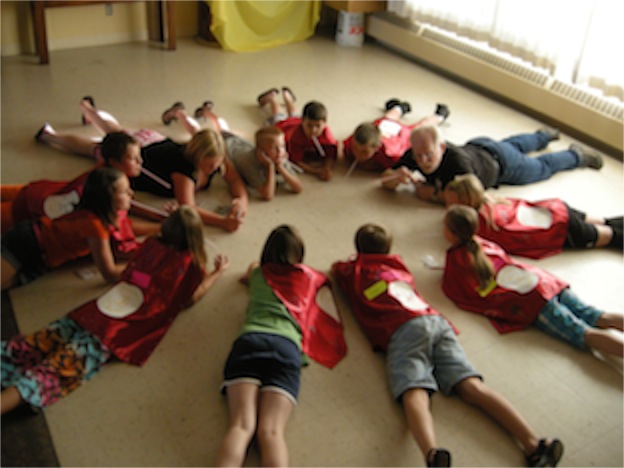 Today we find ourselves in the midst of a community with declining church population and growing numbers of churches. There is increasing pressure to view ministry in market terms. Cooperation between congregations is not high in our community as each sees another as a threat in an increasingly competitive rush to obtain members for the purpose of sustaining institutions. In too many congregations the focus has shifted from “What is God calling us to do?” to “What must we do in order to survive?” Apparently Jesus’ teaching hasn’t quite found a home: “Whoever seeks to save his own life will surely lose it.”
Today we find ourselves in the midst of a community with declining church population and growing numbers of churches. There is increasing pressure to view ministry in market terms. Cooperation between congregations is not high in our community as each sees another as a threat in an increasingly competitive rush to obtain members for the purpose of sustaining institutions. In too many congregations the focus has shifted from “What is God calling us to do?” to “What must we do in order to survive?” Apparently Jesus’ teaching hasn’t quite found a home: “Whoever seeks to save his own life will surely lose it.”
Exciting answers to the question of what God is calling us to do are emerging every day. Emerging ministries in our congregation range from a firewood projects to conversations about partnerships with a non-denominational emerging church. We have quilters and crafters and artists who use our building to produce their work and contribute to the ministries of the congregation. We have become a gathering point for new ideas and creative people.
The question isn’t just a corporate question. It is also a question of the individuals who participate in our congregation. “What is God calling you to do?” From the perspective of faith formation, everything in a congregation’s life is an opportunity for spiritual growth. God doesn’t count success and failure in the terms of our culture. God sees the opportunity for spiritual growth in projects that are labeled failure by some.
As a pastor, all of this demands that I keep looking for the opportunities for spiritual growth for the people that I serve. Equipping the saints for their ministries means not just finding leaders for the position that the church has created, but more importantly, discovering what positions have to offer individuals in terms of opportunities for growth. It can be a tricky match. Because our congregation works with an effective nominating committee, I am not the one making the choices. I do, however, have a responsibility to assist the nominating committee in finding a prayerful process that focuses on faith instead on institutional maintenance. That is a real challenge.
As the Bible teaches, the Spirit blows where it will. It resists our human efforts at control. Pastors who try to manipulate people or the calling of God rarely are effective in leading congregations. What is needed is not manipulation, but the art of recognizing and identifying the Spirit’s work within the congregation.
Sometimes, when a crisis or a problem comes to my attention, it is an invitation of the Spirit. People grow and learn and change from the challenges of life. Grief can be a teacher, if it is allowed to do its work. Spiritual direction doesn’t come only from formal counseling sessions. It can come from carefully crafted prayers, from formal liturgy and from music. It can also come from genuine listening, supportive fellowship and informal conversation. It blows where it will.
One might think that practice would make one better at discerning God’s calling. This may be true. There may be some wise individuals who are more accomplished at the process than others. But I have always found it to be difficult to know for sure what God is calling. After 59 years of living and 34 years of ordained ministry, I still have trouble discerning the difference between what God wants and what I want. I form visions in my mind and I become attached to those visions. I can even convince myself that those visions are from God. What I have learned, however, is that I need the fellowship of other faithful people to discern just what God is calling me to do. Others who are honest with their opinions and feedback can help me to see where God is calling me to be and what God is calling me to do.
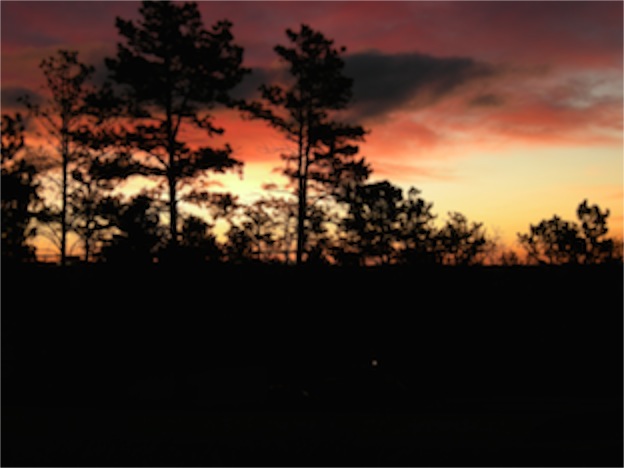 As I think about this summer at our church and ponder the directions that God is calling us to go, I know that my role in the congregation is shifting slightly. I have enough years with this congregation to have become part of the established structure. As God calls us to new ministries and a new future, I need to become practiced at humility and more careful about listening to new voices. I am positive that God has a future for this congregation beyond my time as its pastor. The church that God is preparing for the next 50 years and the next century is vastly different than the existing institution. Of course, God can accomplish divine purposes without my assistance. God can accomplish what God wants even if I’m headed in the wrong direction.
As I think about this summer at our church and ponder the directions that God is calling us to go, I know that my role in the congregation is shifting slightly. I have enough years with this congregation to have become part of the established structure. As God calls us to new ministries and a new future, I need to become practiced at humility and more careful about listening to new voices. I am positive that God has a future for this congregation beyond my time as its pastor. The church that God is preparing for the next 50 years and the next century is vastly different than the existing institution. Of course, God can accomplish divine purposes without my assistance. God can accomplish what God wants even if I’m headed in the wrong direction.
But isn’t it nice to be a part of God’s plan? Isn’t it good when at least I’m not working against God’s purposes?
The questions are too big for one blog. They keep rolling around in the back of my mind. As we have been taught over and over again, “God has yet more truth and light.”
The service to which the congregation has been called has varied over the years. In the 1970’s as the congregation neared its centennial, it was called to work with other congregations to bring relief and support to those most affected by a devastating flash flood. No longer could the congregation rely on a position of exclusivity. We weren’t the only church in town, and hadn’t been for a long time. We were called to work together with other congregations and Church Response was formed in the process.

Exciting answers to the question of what God is calling us to do are emerging every day. Emerging ministries in our congregation range from a firewood projects to conversations about partnerships with a non-denominational emerging church. We have quilters and crafters and artists who use our building to produce their work and contribute to the ministries of the congregation. We have become a gathering point for new ideas and creative people.
The question isn’t just a corporate question. It is also a question of the individuals who participate in our congregation. “What is God calling you to do?” From the perspective of faith formation, everything in a congregation’s life is an opportunity for spiritual growth. God doesn’t count success and failure in the terms of our culture. God sees the opportunity for spiritual growth in projects that are labeled failure by some.
As a pastor, all of this demands that I keep looking for the opportunities for spiritual growth for the people that I serve. Equipping the saints for their ministries means not just finding leaders for the position that the church has created, but more importantly, discovering what positions have to offer individuals in terms of opportunities for growth. It can be a tricky match. Because our congregation works with an effective nominating committee, I am not the one making the choices. I do, however, have a responsibility to assist the nominating committee in finding a prayerful process that focuses on faith instead on institutional maintenance. That is a real challenge.
As the Bible teaches, the Spirit blows where it will. It resists our human efforts at control. Pastors who try to manipulate people or the calling of God rarely are effective in leading congregations. What is needed is not manipulation, but the art of recognizing and identifying the Spirit’s work within the congregation.
Sometimes, when a crisis or a problem comes to my attention, it is an invitation of the Spirit. People grow and learn and change from the challenges of life. Grief can be a teacher, if it is allowed to do its work. Spiritual direction doesn’t come only from formal counseling sessions. It can come from carefully crafted prayers, from formal liturgy and from music. It can also come from genuine listening, supportive fellowship and informal conversation. It blows where it will.
One might think that practice would make one better at discerning God’s calling. This may be true. There may be some wise individuals who are more accomplished at the process than others. But I have always found it to be difficult to know for sure what God is calling. After 59 years of living and 34 years of ordained ministry, I still have trouble discerning the difference between what God wants and what I want. I form visions in my mind and I become attached to those visions. I can even convince myself that those visions are from God. What I have learned, however, is that I need the fellowship of other faithful people to discern just what God is calling me to do. Others who are honest with their opinions and feedback can help me to see where God is calling me to be and what God is calling me to do.

But isn’t it nice to be a part of God’s plan? Isn’t it good when at least I’m not working against God’s purposes?
The questions are too big for one blog. They keep rolling around in the back of my mind. As we have been taught over and over again, “God has yet more truth and light.”
Copyright © 2012 by Ted Huffman. I wrote this. If you want to copy it, please ask for permission. There is a contact me button at the bottom of this page. If you want to share my blog a friend, please direct your friend to my web site.
Homeward Bound
26/06/12 03:36
We finished with the UCC National Musicians Network meetings yesterday in time to get on the road and travel a bit towards home. We’re camped at Onawa, Iowa this morning, which makes the trip home an easy day’s drive. We’ll arrive in time to check in and be ready for our usual activities tomorrow. It has been a good trip and last night, we were treated to a beautiful sunset over Blue Lake as we set up our camper. 
It was a beautiful ending to a long and busy day. As an added treat our campground has lots of fireflies. Since we don’t have fireflies at home, they are a special treat for us.
The days of the conference have been long and very busy. With a few exceptions, the program ran from 9 a.m. to 9 p.m. with breaks for meals, but little else. There were worship services, keynote presentations, workshops and more. Between events, we were busy networking with colleagues, rehearsing for worship and preparing workshop presentations. Even though I had done my workshop preparation before leaving for the conference, there were changes and adjustments that I made in response to the activities of the conference. I always like to add little references to other presentations of the conference and I wanted to customize the presentation after I learned more about the specific participants.
The drive up from Kansas City wasn’t too stressful once we had navigated out way through the city. We don’t do a lot of city driving these days, so we needed to be careful as we threaded our camper through the busy streets. The only small tragedy of the trip so far is that the left outside mirror was smashed yesterday. We discovered it when we got in the pickup to leave the church. I was able to get it adjusted and I can see through it, but it is filled with cracks and will need to be replaced. All of the cracks meant a bit of a distorted image and I had to get used to it right away to drive through the city and negotiate the freeway. In a pickup with a camper in the back, the outside mirrors are essential to safe driving.
No worries, however, we traveled safely from the city, guided by our GPS, which is even patient with detours and driver error. The voice simply says, “Recalculating,” and calmly transitions to a new set of instructions.
I have a briefcase full of notes and ideas. I also have a package of sample music for our choir director. One of the conference supporters was JW Pepper Music, a supplier we often use for choir music. They have a store in Kansas City and put together packets of sample anthems for our group. We had a music reading session in which we sang through the new anthems to get a feel for them and think about how they might be used in worship. The music and notes will need to be sorted through and shared with our worship planning team. That can wait for a few days. I have plenty of regular business that will need my attention in the next couple of days. There are meetings tomorrow, Thursday and Friday, worship bulletins to prepare and a host of other activities that need attention when we get back in the office.
This morning I am thinking back on the experience, and not just on the events of the conference. Every time I travel, I discover unique and interesting things about this wonderful world and the amazingly diverse people who populate it. There are plenty of people memories to sift and sort as I think of our time.
 It was, of course, wonderful to see our daughter and son-in-law. We got to see them both on Saturday and on Sunday. We were able to share dinner with them both days, so there was time to catch up a little. There was also time to meet their puppy, Zeus. We hadn’t met the dog, yet. I like dogs, and I enjoy the dog our daughter and son-in-law have chosen. But even more fun than the pets themselves, is the joy of watching our children interact with them. Pets demand responsibility, care and consistency from their owners. Our daughter and son-in-law are very responsible dog owners, walking their dog daily, training him, and attending to his vet care and proper feeding. The dog has a beautiful coat and is well behaved. Of course, as a puppy, he still needs regular feedback from his people, but he is a fortunate dog to have been adopted into such a home.
It was, of course, wonderful to see our daughter and son-in-law. We got to see them both on Saturday and on Sunday. We were able to share dinner with them both days, so there was time to catch up a little. There was also time to meet their puppy, Zeus. We hadn’t met the dog, yet. I like dogs, and I enjoy the dog our daughter and son-in-law have chosen. But even more fun than the pets themselves, is the joy of watching our children interact with them. Pets demand responsibility, care and consistency from their owners. Our daughter and son-in-law are very responsible dog owners, walking their dog daily, training him, and attending to his vet care and proper feeding. The dog has a beautiful coat and is well behaved. Of course, as a puppy, he still needs regular feedback from his people, but he is a fortunate dog to have been adopted into such a home.
Sunday evening, the conference schedule ended early and we were free at dinner time to spend some time with Rachel and Michael, so we met them at a restaurant for dinner. Being so close to Kansas City meant that our choice was Barbecue. Kansas City is famous for Barbecue and the Kansas City style is excellent, emphasizing dry rubs for the meats, long, slow smoking and sauces served on the side or added after the meat is cooked. The meat was tender and delicious and melted in our mouths. It was tempting to eat more than we needed and we ended up taking a bit of our generous portions home to enjoy later.
 Since I like airplanes, I did notice the airplane mounted to the roof of the building next door to the restaurant. It was a Piper Tomahawk, a basic two-seat trainer that was popular a few decades ago. This particular one had a fresh, new paint job, but I suspect that it had other major problems that prevented its use as a training airplane. So it has a new job as a static display on the roof of the building. Its job, no doubt, is to attract attention to the building. It works. I noticed it right away. I do not, however, remember what the purpose of the building is or what business is located in it. I think it might have been another restaurant. So much for effective advertising! Airplane nuts go for the plane. I can remember the make and model and color of the airplane. I just can’t remember what it was advertising.
Since I like airplanes, I did notice the airplane mounted to the roof of the building next door to the restaurant. It was a Piper Tomahawk, a basic two-seat trainer that was popular a few decades ago. This particular one had a fresh, new paint job, but I suspect that it had other major problems that prevented its use as a training airplane. So it has a new job as a static display on the roof of the building. Its job, no doubt, is to attract attention to the building. It works. I noticed it right away. I do not, however, remember what the purpose of the building is or what business is located in it. I think it might have been another restaurant. So much for effective advertising! Airplane nuts go for the plane. I can remember the make and model and color of the airplane. I just can’t remember what it was advertising.
In a little while, we’ll pack up our camper and head for home. Tomorrow’s blog will come from my home space and perhaps I can return to a routine of writing about the spiritual adventures of a pastor. Sometimes our real world adventures provide the context for spiritual growth and new connections with God.

It was a beautiful ending to a long and busy day. As an added treat our campground has lots of fireflies. Since we don’t have fireflies at home, they are a special treat for us.
The days of the conference have been long and very busy. With a few exceptions, the program ran from 9 a.m. to 9 p.m. with breaks for meals, but little else. There were worship services, keynote presentations, workshops and more. Between events, we were busy networking with colleagues, rehearsing for worship and preparing workshop presentations. Even though I had done my workshop preparation before leaving for the conference, there were changes and adjustments that I made in response to the activities of the conference. I always like to add little references to other presentations of the conference and I wanted to customize the presentation after I learned more about the specific participants.
The drive up from Kansas City wasn’t too stressful once we had navigated out way through the city. We don’t do a lot of city driving these days, so we needed to be careful as we threaded our camper through the busy streets. The only small tragedy of the trip so far is that the left outside mirror was smashed yesterday. We discovered it when we got in the pickup to leave the church. I was able to get it adjusted and I can see through it, but it is filled with cracks and will need to be replaced. All of the cracks meant a bit of a distorted image and I had to get used to it right away to drive through the city and negotiate the freeway. In a pickup with a camper in the back, the outside mirrors are essential to safe driving.
No worries, however, we traveled safely from the city, guided by our GPS, which is even patient with detours and driver error. The voice simply says, “Recalculating,” and calmly transitions to a new set of instructions.
I have a briefcase full of notes and ideas. I also have a package of sample music for our choir director. One of the conference supporters was JW Pepper Music, a supplier we often use for choir music. They have a store in Kansas City and put together packets of sample anthems for our group. We had a music reading session in which we sang through the new anthems to get a feel for them and think about how they might be used in worship. The music and notes will need to be sorted through and shared with our worship planning team. That can wait for a few days. I have plenty of regular business that will need my attention in the next couple of days. There are meetings tomorrow, Thursday and Friday, worship bulletins to prepare and a host of other activities that need attention when we get back in the office.
This morning I am thinking back on the experience, and not just on the events of the conference. Every time I travel, I discover unique and interesting things about this wonderful world and the amazingly diverse people who populate it. There are plenty of people memories to sift and sort as I think of our time.

Sunday evening, the conference schedule ended early and we were free at dinner time to spend some time with Rachel and Michael, so we met them at a restaurant for dinner. Being so close to Kansas City meant that our choice was Barbecue. Kansas City is famous for Barbecue and the Kansas City style is excellent, emphasizing dry rubs for the meats, long, slow smoking and sauces served on the side or added after the meat is cooked. The meat was tender and delicious and melted in our mouths. It was tempting to eat more than we needed and we ended up taking a bit of our generous portions home to enjoy later.

In a little while, we’ll pack up our camper and head for home. Tomorrow’s blog will come from my home space and perhaps I can return to a routine of writing about the spiritual adventures of a pastor. Sometimes our real world adventures provide the context for spiritual growth and new connections with God.
Copyright © 2012 by Ted Huffman. I wrote this. If you want to copy it, please ask for permission. There is a contact me button at the bottom of this page. If you want to share my blog a friend, please direct your friend to my web site.
Dreaming of Airshows
25/06/12 04:32
Summertime is air show time. There are a lot of different air shows and over the years I have spent a fair amount of time walking among the static displays and looking up at the sky. Most US Air Bases host a regular air show and offer opportunities to see both military and civilian aircraft on display on the ground as well as flying demonstrations in the air.
An air show is a good place to get a sunburn. It usually involves hours on a hot tarmac ramp looking up at the sky. But for those of us who enjoy airplanes, it is worth the discomfort to watch them fly.

I grew up around airplanes and pilots. I’ve heard talk of air shows from the time that I was little. We had simple fly-ins in our part of the country. When I was young, I enjoyed the annual Montana Flying Farmers meetings. The event usually involved a fly in breakfast, short take off and landing contests, some flour bombing and other fun competitions to test the flying skills of pilots who would never own or fly the fancy and expensive airplanes flown by business and military pilots.
For our crowd, the big air show each year was AirVenture, held at Oshkosh, Wisconsin on the third weekend of July each year. I’ve never made it to that air show, but I’ll probably go once. The show is hosted by the Experimental Aviation Association and is the largest gathering of home-built aircraft. It is also a gathering place for those who enjoy vintage and restored airplanes. There is a great aviation museum at Oshkosh that we’ve visited and enjoyed. But during AirVenture, the entire airport is filled with rows and rows of one-of-a-kind airplanes. There are daily air shows and fly bys that show off the skills of some of the best pilots in the world.
But the granddaddy of all air shows is not even held in the United States. It is the Farnborough Air Show held in England each July. Pilots talk of that event the way devout Muslims talk of a trip to Mecca. It is considered a once-in-a-lifetime experience for many, but there are a few who get to go over and over again. Farnborough is another event that I’ve never attended, but I pay attention when it is coming around and I enjoy reading articles about it. These days there are plenty of opportunities to watch videos of the flying demonstrations. Some events are easier to watch on the computer than they would be in person. Many of airplanes are really fast and all you get at the show is a glimpse.

Farnborough is the place where you feel like you are getting a preview of the future. The world’s largest aviation companies like to use Farnborough as a place to roll out new ideas. Mock-ups of airplanes that have not yet become available are often displayed. Sometimes there will be a prototype airplane that a company hopes to bring into production at sometime in the future. There are lots of pictures and drawings and ideas that get shared. Sharing ideas is essential to the process of moving from an idea to a real airplane. The aircraft of the future are projects that will require a lot of collaboration and cooperation to move from an idea to a real airplane.
For years before it became a reality, there were drawings and ideas of what a commercial space vehicle might look like. Dreamers drew drawings and sketched out ideas of how such a vehicle could be financed and brought into production in a way that would allow financial success. This year the Virgin Galactic Space Ship 2 will be on display at Farnborough – an actual commercial space ship that holds the promise of financial success for its developers and investors. Ideas on their way to becoming realities are exciting and part of the attraction of an air show.

If I were to make it to Farnborough this year one of the things I’d like to see are some of the concept drawings of proposed new supersonic passenger aircraft. So far planes that fly faster than the speed of sound have been flown only for military purposes, with one notable exception. The Concorde was built by a consortium of British and French companies and saw limited use as a commercial airliner. The Concorde has significant problems, not the least of which was that it make a loud sonic boom, something that meant that trips had to be planned so that the noise took place far from urban areas. Commercial airlines have to serve urban areas in order to be successful. The other problem with the Concorde was that it was so expensive to produce that it really never was anything more than a family of experimental aircraft that got used as airliners, but always were operated at a significant financial loss on each trip.
The new generation of supersonic airlines is being designed for a specific market – the trip from London, England to Sydney, Australia. Right now, that is one long flight. There are no airlines that operate a direct flight. The usual trip involves a stop in Singapore and takes more than a day – about 26 hours of which about 23 hours are spent actually flying. Quantas has visions of using an Airbus A-380 for the run. The airplane would take about 22 hours to make the trip and would require a specially built airplane with extra fuel capacity and lowered passenger and freight capacity. But it is only a concept at this point. At Farnborough this year will be concept plans for an airliner that could fly between the two cities in about four hours and, the promoters claim, make a profit for the airlines.
A joint project of Boeing, Lockheed-Martin and Gulfstream with help from NASA hopes to produce supersonic airplanes that are lighter, faster and a lot quieter than anything now available. The hope is that the sonic boom will be more like a pop or a puff. The project, called X-54 isn’t expected to fly until 2020 and probably won’t be in regularly scheduled service before 2030. But there will be drawings at Farnborough this year.

Air shows are all about looking up. It is a literal reality and a figurative description. I’ll probably never fly on an X-54. But in my imagination the trip seems possible. The excitement of an air show is seeing the results of what happens when people take imagination and turn it into reality.
An air show is a good place to get a sunburn. It usually involves hours on a hot tarmac ramp looking up at the sky. But for those of us who enjoy airplanes, it is worth the discomfort to watch them fly.

I grew up around airplanes and pilots. I’ve heard talk of air shows from the time that I was little. We had simple fly-ins in our part of the country. When I was young, I enjoyed the annual Montana Flying Farmers meetings. The event usually involved a fly in breakfast, short take off and landing contests, some flour bombing and other fun competitions to test the flying skills of pilots who would never own or fly the fancy and expensive airplanes flown by business and military pilots.
For our crowd, the big air show each year was AirVenture, held at Oshkosh, Wisconsin on the third weekend of July each year. I’ve never made it to that air show, but I’ll probably go once. The show is hosted by the Experimental Aviation Association and is the largest gathering of home-built aircraft. It is also a gathering place for those who enjoy vintage and restored airplanes. There is a great aviation museum at Oshkosh that we’ve visited and enjoyed. But during AirVenture, the entire airport is filled with rows and rows of one-of-a-kind airplanes. There are daily air shows and fly bys that show off the skills of some of the best pilots in the world.
But the granddaddy of all air shows is not even held in the United States. It is the Farnborough Air Show held in England each July. Pilots talk of that event the way devout Muslims talk of a trip to Mecca. It is considered a once-in-a-lifetime experience for many, but there are a few who get to go over and over again. Farnborough is another event that I’ve never attended, but I pay attention when it is coming around and I enjoy reading articles about it. These days there are plenty of opportunities to watch videos of the flying demonstrations. Some events are easier to watch on the computer than they would be in person. Many of airplanes are really fast and all you get at the show is a glimpse.

Farnborough is the place where you feel like you are getting a preview of the future. The world’s largest aviation companies like to use Farnborough as a place to roll out new ideas. Mock-ups of airplanes that have not yet become available are often displayed. Sometimes there will be a prototype airplane that a company hopes to bring into production at sometime in the future. There are lots of pictures and drawings and ideas that get shared. Sharing ideas is essential to the process of moving from an idea to a real airplane. The aircraft of the future are projects that will require a lot of collaboration and cooperation to move from an idea to a real airplane.
For years before it became a reality, there were drawings and ideas of what a commercial space vehicle might look like. Dreamers drew drawings and sketched out ideas of how such a vehicle could be financed and brought into production in a way that would allow financial success. This year the Virgin Galactic Space Ship 2 will be on display at Farnborough – an actual commercial space ship that holds the promise of financial success for its developers and investors. Ideas on their way to becoming realities are exciting and part of the attraction of an air show.

If I were to make it to Farnborough this year one of the things I’d like to see are some of the concept drawings of proposed new supersonic passenger aircraft. So far planes that fly faster than the speed of sound have been flown only for military purposes, with one notable exception. The Concorde was built by a consortium of British and French companies and saw limited use as a commercial airliner. The Concorde has significant problems, not the least of which was that it make a loud sonic boom, something that meant that trips had to be planned so that the noise took place far from urban areas. Commercial airlines have to serve urban areas in order to be successful. The other problem with the Concorde was that it was so expensive to produce that it really never was anything more than a family of experimental aircraft that got used as airliners, but always were operated at a significant financial loss on each trip.
The new generation of supersonic airlines is being designed for a specific market – the trip from London, England to Sydney, Australia. Right now, that is one long flight. There are no airlines that operate a direct flight. The usual trip involves a stop in Singapore and takes more than a day – about 26 hours of which about 23 hours are spent actually flying. Quantas has visions of using an Airbus A-380 for the run. The airplane would take about 22 hours to make the trip and would require a specially built airplane with extra fuel capacity and lowered passenger and freight capacity. But it is only a concept at this point. At Farnborough this year will be concept plans for an airliner that could fly between the two cities in about four hours and, the promoters claim, make a profit for the airlines.
A joint project of Boeing, Lockheed-Martin and Gulfstream with help from NASA hopes to produce supersonic airplanes that are lighter, faster and a lot quieter than anything now available. The hope is that the sonic boom will be more like a pop or a puff. The project, called X-54 isn’t expected to fly until 2020 and probably won’t be in regularly scheduled service before 2030. But there will be drawings at Farnborough this year.

Air shows are all about looking up. It is a literal reality and a figurative description. I’ll probably never fly on an X-54. But in my imagination the trip seems possible. The excitement of an air show is seeing the results of what happens when people take imagination and turn it into reality.
Copyright © 2012 by Ted Huffman. I wrote this. If you want to copy it, please ask for permission. There is a contact me button at the bottom of this page. If you want to share my blog a friend, please direct your friend to my web site.
Inspiration
24/06/12 03:39
Inspiration: for most people the word involves sensing the holy in their lives and experiences. People come to the church to be inspired. In a sense that I my job: to inspire folks. There is a problem with that expectation, however. It isn’t with the people in the church. People have a right to expect inspiration from their church. They have felt it so many times before. Perhaps it is a song that touches them deeply. Perhaps it is the right combination of words, spoken with love and care. Perhaps it is the powerful moment of prayer. Perhaps it is the experience of sacrament. There are many possibilities for inspiration in worship. We worship to offer ourselves to God and we have learned that God will not disappoint us. There will be inspiration in worship, if we allow the holy to enter our lives.
Here is where the problem with the expectation comes. I do not control the Holy Spirit. No one does. The bible teaches that the Holy Spirit blows where it chooses. There is nothing that I can do that will make inspiration to happen.
When I was in school, I thought that part of inspiration was academic preparation. If I were to read enough books, understand enough theology, gain enough knowledge of the bible . . . then I might be able to deliver an inspiring sermon that would touch people’s lives and help them to experience the power and awe of God’s work in our world. Whatever I used to think about academics and as much as I love school, I now know for certain that the Holy Spirit is not academic. It cannot be learned or taught or manipulated. It defies our efforts at control.
As I gained confidence in my preaching, I found that the art of preaching is more about allowing God’s spirit to flow through my words and my life than it is about finding exactly the right words. I know this about preaching from a manuscript. Sometimes the words come easily, as if I were simply being the scribe for thoughts that are bigger than me and ideas that flow through me. Sometimes, writing is a chore and each word seems to come at a high cost. When writing is that labored, I can count on the sermon being strained and difficult. This doesn’t mean that it won’t touch a life. I can’t count the number of times I have sat down convinced that my sermon was terrible and that I had wasted the time of my congregation to be greeted at the door with testimonies about how powerful and meaningful the sermon had been for someone in the congregation.
For a week-to-week job, however, it is difficult to admit that I have almost no control and very little ability to predict how the congregation will respond to my words. So I pray a lot. I study a lot. I read a lot of books. I talk to other preachers and I listen to good preaching whenever I have an opportunity.
And I sing the songs of our faith. When I am honest, I have to admit that perhaps I have experienced the inspiration of the Holy Spirit through music more often than I have through the spoken word. Maybe that is because I am a preacher. I’m working all the way through the sermon. When the choir sings an anthem or when we sing a hymn together, I can relax a bit. I can understand that I am not in control and I can allow the holy to enter into my life.
Then the song is finished and it is time for a prayer or a sermon and I feel once again that it is up to me to inspire the people who have invested so much time, energy, financial resources and love in the church that I serve. Furthermore, they pay my salary. I am a professional. I get paid to do this. I owe them inspiration.
But I do not cause inspiration. I do not control inspiration.
The best that I can offer is my own self as a conduit for God’s word. And part of allowing God’s Spirit to flow through my life is being attentive to my own spirit. So, from time to time, I need to be inspired. This weekend is a lot about inspiration for me. I am here at the United Church of Christ Musicians National Network Meeting because I was asked to present workshops for the musicians. I was grateful to accept the invitation because I feel so indebted to the musicians of our church. They need inspiration as well and if I can help make their event a success, it will be a good investment for the whole church. But I am also here because being inspired is an important part of what I need from the church.
Rev. Paul Hobson Sadler’s keynote this morning was inspirational. He was making a presentation, but he is by nature a preacher and his keynote was more sermon than anything else. Rev. Maren Tirabassi’s worsip and drama have also been truly inspirational. And this morning I am looking forward to a magnificent worship service with the choir of the musicians from around the country. We’ve also heard some wonderful piano music, a bit a jazz and much more to inspire us.
But I know that next week, when I return to our church there will be several people who will ask, “how did you enjoy your vacation?” And more than a few will wonder why the pastor takes so many weeks off each year. “If only I could find a job with that much vacation, they sometimes muse.” Of course there is no point in telling them that such a job comes with other perks, like working every weekend, being on call 24 hours a day, having to work on your days off and never being able to completely leave the job behind, even when you are on vacation. Add in wages that have to fit into a church’s budget and getting a bit of vacation from time to time seems to come at a relatively high cost. I don’t tell them these things because I don’t want to complain. I love my job. I love the people that God has given me to serve.
But unless I am attentive to seeking inspiration, I can’t be very inspiring to others. It is a challenge and a joy. This weekend is about inspiration. And music carries great power to inspire. Now, if my workshops can inspire a few musicians, perhaps they can continue to inspire their congregations in the weeks to come.
Here is where the problem with the expectation comes. I do not control the Holy Spirit. No one does. The bible teaches that the Holy Spirit blows where it chooses. There is nothing that I can do that will make inspiration to happen.
When I was in school, I thought that part of inspiration was academic preparation. If I were to read enough books, understand enough theology, gain enough knowledge of the bible . . . then I might be able to deliver an inspiring sermon that would touch people’s lives and help them to experience the power and awe of God’s work in our world. Whatever I used to think about academics and as much as I love school, I now know for certain that the Holy Spirit is not academic. It cannot be learned or taught or manipulated. It defies our efforts at control.
As I gained confidence in my preaching, I found that the art of preaching is more about allowing God’s spirit to flow through my words and my life than it is about finding exactly the right words. I know this about preaching from a manuscript. Sometimes the words come easily, as if I were simply being the scribe for thoughts that are bigger than me and ideas that flow through me. Sometimes, writing is a chore and each word seems to come at a high cost. When writing is that labored, I can count on the sermon being strained and difficult. This doesn’t mean that it won’t touch a life. I can’t count the number of times I have sat down convinced that my sermon was terrible and that I had wasted the time of my congregation to be greeted at the door with testimonies about how powerful and meaningful the sermon had been for someone in the congregation.
For a week-to-week job, however, it is difficult to admit that I have almost no control and very little ability to predict how the congregation will respond to my words. So I pray a lot. I study a lot. I read a lot of books. I talk to other preachers and I listen to good preaching whenever I have an opportunity.
And I sing the songs of our faith. When I am honest, I have to admit that perhaps I have experienced the inspiration of the Holy Spirit through music more often than I have through the spoken word. Maybe that is because I am a preacher. I’m working all the way through the sermon. When the choir sings an anthem or when we sing a hymn together, I can relax a bit. I can understand that I am not in control and I can allow the holy to enter into my life.
Then the song is finished and it is time for a prayer or a sermon and I feel once again that it is up to me to inspire the people who have invested so much time, energy, financial resources and love in the church that I serve. Furthermore, they pay my salary. I am a professional. I get paid to do this. I owe them inspiration.
But I do not cause inspiration. I do not control inspiration.
The best that I can offer is my own self as a conduit for God’s word. And part of allowing God’s Spirit to flow through my life is being attentive to my own spirit. So, from time to time, I need to be inspired. This weekend is a lot about inspiration for me. I am here at the United Church of Christ Musicians National Network Meeting because I was asked to present workshops for the musicians. I was grateful to accept the invitation because I feel so indebted to the musicians of our church. They need inspiration as well and if I can help make their event a success, it will be a good investment for the whole church. But I am also here because being inspired is an important part of what I need from the church.
Rev. Paul Hobson Sadler’s keynote this morning was inspirational. He was making a presentation, but he is by nature a preacher and his keynote was more sermon than anything else. Rev. Maren Tirabassi’s worsip and drama have also been truly inspirational. And this morning I am looking forward to a magnificent worship service with the choir of the musicians from around the country. We’ve also heard some wonderful piano music, a bit a jazz and much more to inspire us.
But I know that next week, when I return to our church there will be several people who will ask, “how did you enjoy your vacation?” And more than a few will wonder why the pastor takes so many weeks off each year. “If only I could find a job with that much vacation, they sometimes muse.” Of course there is no point in telling them that such a job comes with other perks, like working every weekend, being on call 24 hours a day, having to work on your days off and never being able to completely leave the job behind, even when you are on vacation. Add in wages that have to fit into a church’s budget and getting a bit of vacation from time to time seems to come at a relatively high cost. I don’t tell them these things because I don’t want to complain. I love my job. I love the people that God has given me to serve.
But unless I am attentive to seeking inspiration, I can’t be very inspiring to others. It is a challenge and a joy. This weekend is about inspiration. And music carries great power to inspire. Now, if my workshops can inspire a few musicians, perhaps they can continue to inspire their congregations in the weeks to come.
Copyright © 2012 by Ted Huffman. I wrote this. If you want to copy it, please ask for permission. There is a contact me button at the bottom of this page. If you want to share my blog a friend, please direct your friend to my web site.
A Unique Gathering
23/06/12 04:12
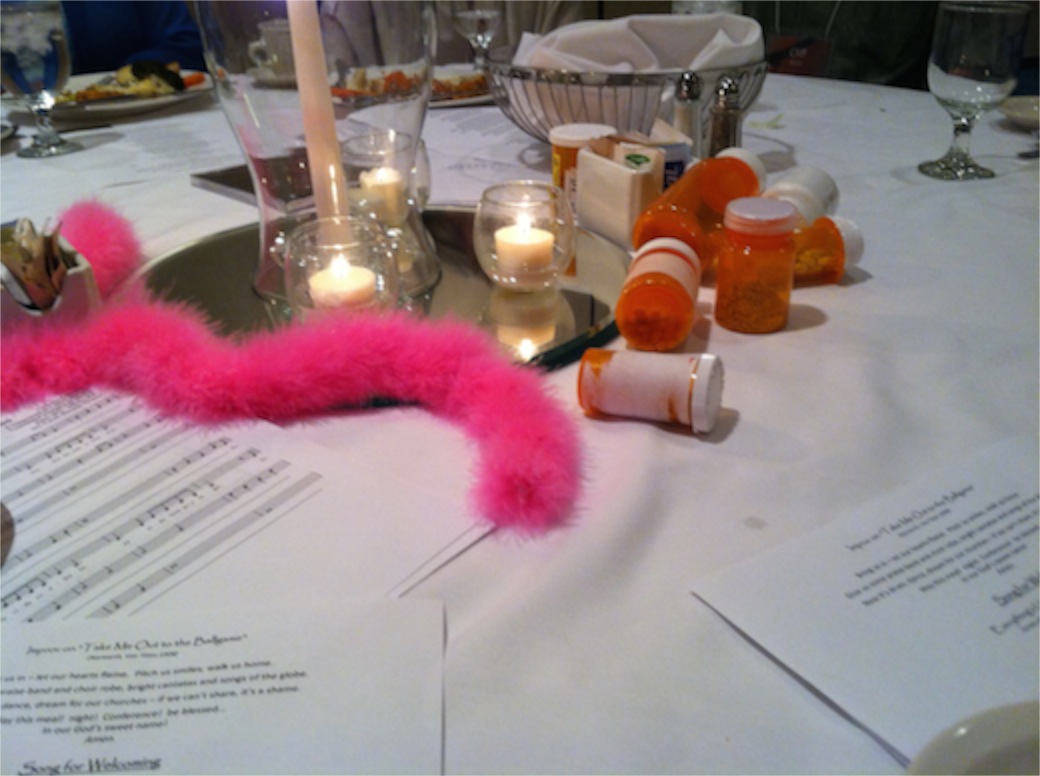
The United Church of Christ is a wonderfully diverse group of people. We say, “No mater who you are, or where you are on life’s journey, you are welcome here.” And we mean it. Our congregations are filed with people from all sorts of backgrounds, engaged in all sorts of ministries.
It should come as no surprise, then that the gathering of the United Church of Christ Musicians National Network would be a great place for those of us who enjoy people watching. Our musicians are old and young, male and female, paid and volunteer, classically-trained and play by ear. They are advocates for traditional hymns, praise music, jazz, and a host of other musical genres.
The event began with a banquet and the schedule circulated in advance of the event said, “feel free to dress up.” Those words already made it clear that there would be a variety of different outfits. I wore the kind of clothes I generally wear to church: a white shirt and tie and a blue blazer. Since it is summer and quite warm in Kansas City, I wore tan slacks instead of grey. Susan wore a black dress with a pink sweater. We could have gone to church or to a concert or out to dinner dressed that way. Since it was a banquet for church musicians, such attire seemed to be in order. Of course, I doubt that anyone else paid much attention to our clothes.
There were others who dressed similarly to our outfits. I wasn’t even the only person wearing a bow tie. But there were plenty of other clothing choices. As we sat in the hotel before the banquet, we observed a parade of folks in a wide variety of clothing. There were some shorts and t-shirts. There were jeans and sport coats. There were golf shirts and dress shirts and suits. I joked with another participant that I expected to see at least one tuxedo, since that is what musicians usually wear when they dress up. I didn’t notice any tuxedos. I couldn’t, however, fail to notice the gentlemen wearing sandals with striped socks, red slacks, a green shirt and a plaid jacket that would have been at home in the 1950’s. I’m thinking he chose his clothing with care. He has different tastes in clothing than I.
I don’t actually own a pair of bright red slacks. If I did, I doubt that I would wear them to a church meeting.
But, as I said, we are a wonderfully diverse group of people. We are not all the same. And that is one of the deep joys of the United Church of Christ.
One of the topics of conversation at our table was speculation about the meaning of the table decorations. In addition to the candles on a mirror in the center of our table, there were sheets of music, CD’s, pill bottles filled with rice and beans, and feather boas. The different items didn’t seem to fit together into a single theme. It was clear that the tables had been decorated with care, but I had trouble imagining how the various elements came together and what they had to do with the event.
Our worship leader told us a little about the tables before beginning the service. She noted that one of the event organizers had invited leaders to bring items that could be given away to participants. There will be packets of music for our reading sessions that will be used to introduce new anthems and songs. A publisher who wants us to take free copies home and share them with others in hopes that some of our choirs will order multiple copies supplied the music. We have already received tote bags and pens and there will be plenty of other items in the display area at the church tomorrow. The worship leader said that she didn’t have any merchandise samples to give away, so she asked her friends and colleagues for items that she could bring. There were CD’s from a church musician and minister who has recorded albums of her songs. There were copies of a new baptismal hymn that a colleague wrote for the baptism of a grandchild. There was a song that was written by participants in a gathering of Latin American church musicians as a gift to our group with an invitation that some of our group write a song for them.
Those things made sense, but pill bottles and feather boas. She went on to tell us that she does a lot of ministry in nursing homes and hospitals and that she has found that simple shakers are fun for people to use with music. They can add a little rhythm and participate in the music by shaking them. And, she said, whenever she uses pill bottles to make shakers by filling them with rice or beans, they always bring a smile to folks in health care institutions that are filled with all sorts of medications. And smiles are valuable in such places. The shakers got good use during the songs we sang in worship.
And the feather boas were gifts from the choir of the home church of our worship leader. They enjoy singing popular music and from time to time have concerts that are just for fun. Some of the members of the choir suggested that all church musicians need feather boas to “lighten up,” and remember how much fun it is to make music.
In our opening worship, we sang traditional hymns and new songs. We sang in Spanish and English. We sang a praise chorus and a meditational song. The songs were like the musicians assembled: each unique, each different, each wonderful in its own way. During the service, there were several opportunities to turn to someone else and share a story about how music had touched our lives. The stories were filled with emotion. Music is important to all of us.
Music is a joy that we share.
It promises to be a wonderful meeting and an opportunity to discover new resources for worship in our church.
But I don’t think I’m going to get any fashion tips. I’ll stick with what I’m used to wearing.
Copyright © 2012 by Ted Huffman. I wrote this. If you want to copy it, please ask for permission. There is a contact me button at the bottom of this page. If you want to share my blog a friend, please direct your friend to my web site.
Changing my opinions
22/06/12 04:14
I admit that I carry some biases in my mind that are inaccurate. I grew up in Montana. When Susan and I lived in Chicago, I used to long to cross the Missouri on my way home. My way of thinking was that I knew how to handle myself in the west. Were my car to break down, I would know what to do and how to get help. I was les confident as I drove to the east. In reality, my car broke down several times in those days and we always handled the problems without undue trauma. People did stop to help when we were stranded. Then I moved back west and some of my old biases remained.
When we travel with our camper, I prefer to go north and west from our home. I like camping in the mountains and I have also enjoyed some great trips in Canada. I have the general sense that the flat country of the Midwest isn’t the best place for camping. I fear thunderstorms and tornadoes and expect somewhat sleepless nights when we are camping in eastern South Dakota. It is a bias and one that is not entirely based in the truth.
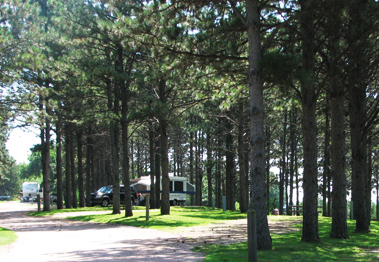 This morning we are camping in Union Grove State Park, a few miles south of Beresford, not far from the Southeastern corner of South Dakota. We are on our way to Kansas City for the United Church of Christ Musicians’ National Network meeting. Union Grove is one of the many treasures of the South Dakota State Parks system. It is located a few miles off of the interstate in gently rolling hills. There are lots of mature trees to provide shade and shelter. The campground is relatively small and quiet with plenty of spaces available during the middle of the week. It is a treasure.
This morning we are camping in Union Grove State Park, a few miles south of Beresford, not far from the Southeastern corner of South Dakota. We are on our way to Kansas City for the United Church of Christ Musicians’ National Network meeting. Union Grove is one of the many treasures of the South Dakota State Parks system. It is located a few miles off of the interstate in gently rolling hills. There are lots of mature trees to provide shade and shelter. The campground is relatively small and quiet with plenty of spaces available during the middle of the week. It is a treasure.
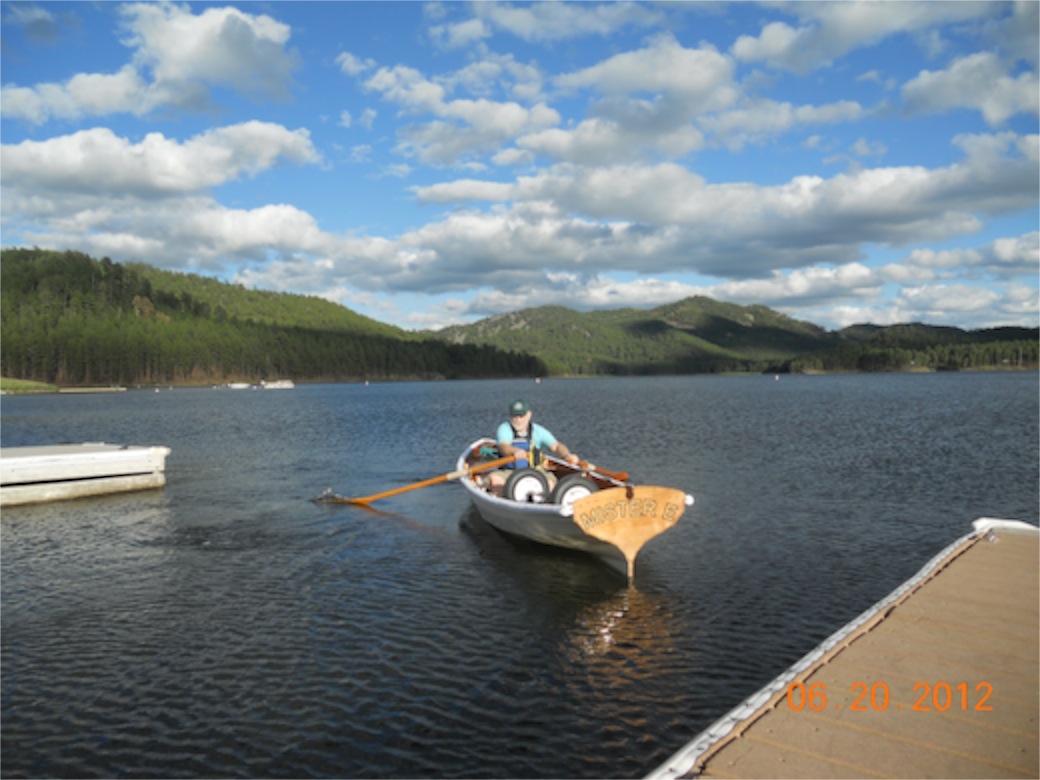
I had a small adventure earlier this week about which I haven’t yet written. During the winter and spring I have been working at building a small rowboat. I have been a fan of canoes and kayaks for many years, but decided that a somewhat larger and more stable boat might be better for a young grandson’s first boat adventures. In addition as I seek to stay fit, I know that rowing is better whole body exercise than paddling. So after studying a lot of different options, I selected the plans for a Chester Yawl from Chesapeake Light Craft and began building. The boat is plywood lapstrake and the construction method is called stitch and glue. The plywood panels are assembled by drilling small holes and putting them together with copper wire. They are then glued in place with epoxy before the wires are removed, the holes filled and filets of glue and sawdust added to complete the structure. It is time consuming, but the results are very nice.
After months of gluing and no small amount of sanding and varnishing, the boat was ready for sea trials this week. Of course I had a very busy week and I initially thought that the first trip to the water would have to be put off until I got back from this trip. However, we had some time on Wednesday evening and we took the little boat to Sheridan Lake for a short row and a picnic. The boat handled beautifully and as expected, but still reassuring, it had no leaks.
I did learn, however, that my rowing technique needs a bit of practice. I have relatively long spoon-bladed oars and I didn’t have the leathers in quite the right place. Fortunately, I devised a way to lace the leathers to the oars because I couldn’t bring myself to put nails or tacks into those new oars. This way I can adjust the leathers and get them where I want them to be.
The rest of the process, however, will just take time and practice. After a good pull on the oars, they need to be lifted from the water, feathered and pushed up for the next stroke. This will, I am sure, become automatic with practice. Right now, it is a bit of a mental struggle to remember everything. I occasionally drag an oar, which makes the little boat take a winding instead of a straight path. And my timing is a bit off, which slows progress.
Still, there is a wonderful feeling that comes with the launch of a handmade boat. The work of building a boat involves a fair amount of looking at the emerging shape and imagining how it might perform in the water. Being a daydreamer, I imagined the first launching many times before it occurred. Boats are made for the water. Boats that perform well in the water tend to also be beautiful. The same curves that enable a boat to slip through the water are pleasing to the eye. The little yawl has a striking wineglass-shaped transom that sets it off. It immediately settled into the water like it belonged.
Unlike a canoe, the rowboat is very stable in the water, which means that I can tie it up at a dock and stand up to get in and out. The awkwardness of stuffing myself into a kayak is absent from the process of rowing the boat. And it is fun to be able to take along a passenger without having to ask that person to pick up a paddle. Susan and I enjoy tandem paddling in our canoes, but it was a treat to be able to just have her take a seat and ride to our picnic place. We could have eaten our picnic in the boat, but chose to pull up to the shore.
My old bias was in favor of boats that are light enough for me to pick up and carry. At 110 pounds, this little one is a bit much for me to handle without some awkwardness. I have a small dolly that allows me to wheel it down to the lake and it rides on our trailer to get there. I’m thinking that a somewhat larger boat is a good idea for some adventures, however.
If I can change my opinions about boats, I can also change my opinions about camping in the flat country. This certainly is a lovely place to sleep. I suspect that we’ll be back again someday.
When we travel with our camper, I prefer to go north and west from our home. I like camping in the mountains and I have also enjoyed some great trips in Canada. I have the general sense that the flat country of the Midwest isn’t the best place for camping. I fear thunderstorms and tornadoes and expect somewhat sleepless nights when we are camping in eastern South Dakota. It is a bias and one that is not entirely based in the truth.
 This morning we are camping in Union Grove State Park, a few miles south of Beresford, not far from the Southeastern corner of South Dakota. We are on our way to Kansas City for the United Church of Christ Musicians’ National Network meeting. Union Grove is one of the many treasures of the South Dakota State Parks system. It is located a few miles off of the interstate in gently rolling hills. There are lots of mature trees to provide shade and shelter. The campground is relatively small and quiet with plenty of spaces available during the middle of the week. It is a treasure.
This morning we are camping in Union Grove State Park, a few miles south of Beresford, not far from the Southeastern corner of South Dakota. We are on our way to Kansas City for the United Church of Christ Musicians’ National Network meeting. Union Grove is one of the many treasures of the South Dakota State Parks system. It is located a few miles off of the interstate in gently rolling hills. There are lots of mature trees to provide shade and shelter. The campground is relatively small and quiet with plenty of spaces available during the middle of the week. It is a treasure.
I had a small adventure earlier this week about which I haven’t yet written. During the winter and spring I have been working at building a small rowboat. I have been a fan of canoes and kayaks for many years, but decided that a somewhat larger and more stable boat might be better for a young grandson’s first boat adventures. In addition as I seek to stay fit, I know that rowing is better whole body exercise than paddling. So after studying a lot of different options, I selected the plans for a Chester Yawl from Chesapeake Light Craft and began building. The boat is plywood lapstrake and the construction method is called stitch and glue. The plywood panels are assembled by drilling small holes and putting them together with copper wire. They are then glued in place with epoxy before the wires are removed, the holes filled and filets of glue and sawdust added to complete the structure. It is time consuming, but the results are very nice.
After months of gluing and no small amount of sanding and varnishing, the boat was ready for sea trials this week. Of course I had a very busy week and I initially thought that the first trip to the water would have to be put off until I got back from this trip. However, we had some time on Wednesday evening and we took the little boat to Sheridan Lake for a short row and a picnic. The boat handled beautifully and as expected, but still reassuring, it had no leaks.
I did learn, however, that my rowing technique needs a bit of practice. I have relatively long spoon-bladed oars and I didn’t have the leathers in quite the right place. Fortunately, I devised a way to lace the leathers to the oars because I couldn’t bring myself to put nails or tacks into those new oars. This way I can adjust the leathers and get them where I want them to be.
The rest of the process, however, will just take time and practice. After a good pull on the oars, they need to be lifted from the water, feathered and pushed up for the next stroke. This will, I am sure, become automatic with practice. Right now, it is a bit of a mental struggle to remember everything. I occasionally drag an oar, which makes the little boat take a winding instead of a straight path. And my timing is a bit off, which slows progress.
Still, there is a wonderful feeling that comes with the launch of a handmade boat. The work of building a boat involves a fair amount of looking at the emerging shape and imagining how it might perform in the water. Being a daydreamer, I imagined the first launching many times before it occurred. Boats are made for the water. Boats that perform well in the water tend to also be beautiful. The same curves that enable a boat to slip through the water are pleasing to the eye. The little yawl has a striking wineglass-shaped transom that sets it off. It immediately settled into the water like it belonged.
Unlike a canoe, the rowboat is very stable in the water, which means that I can tie it up at a dock and stand up to get in and out. The awkwardness of stuffing myself into a kayak is absent from the process of rowing the boat. And it is fun to be able to take along a passenger without having to ask that person to pick up a paddle. Susan and I enjoy tandem paddling in our canoes, but it was a treat to be able to just have her take a seat and ride to our picnic place. We could have eaten our picnic in the boat, but chose to pull up to the shore.
My old bias was in favor of boats that are light enough for me to pick up and carry. At 110 pounds, this little one is a bit much for me to handle without some awkwardness. I have a small dolly that allows me to wheel it down to the lake and it rides on our trailer to get there. I’m thinking that a somewhat larger boat is a good idea for some adventures, however.
If I can change my opinions about boats, I can also change my opinions about camping in the flat country. This certainly is a lovely place to sleep. I suspect that we’ll be back again someday.
Copyright © 2012 by Ted Huffman. I wrote this. If you want to copy it, please ask for permission. There is a contact me button at the bottom of this page. If you want to share my blog a friend, please direct your friend to my web site.
Farewell
21/06/12 05:37
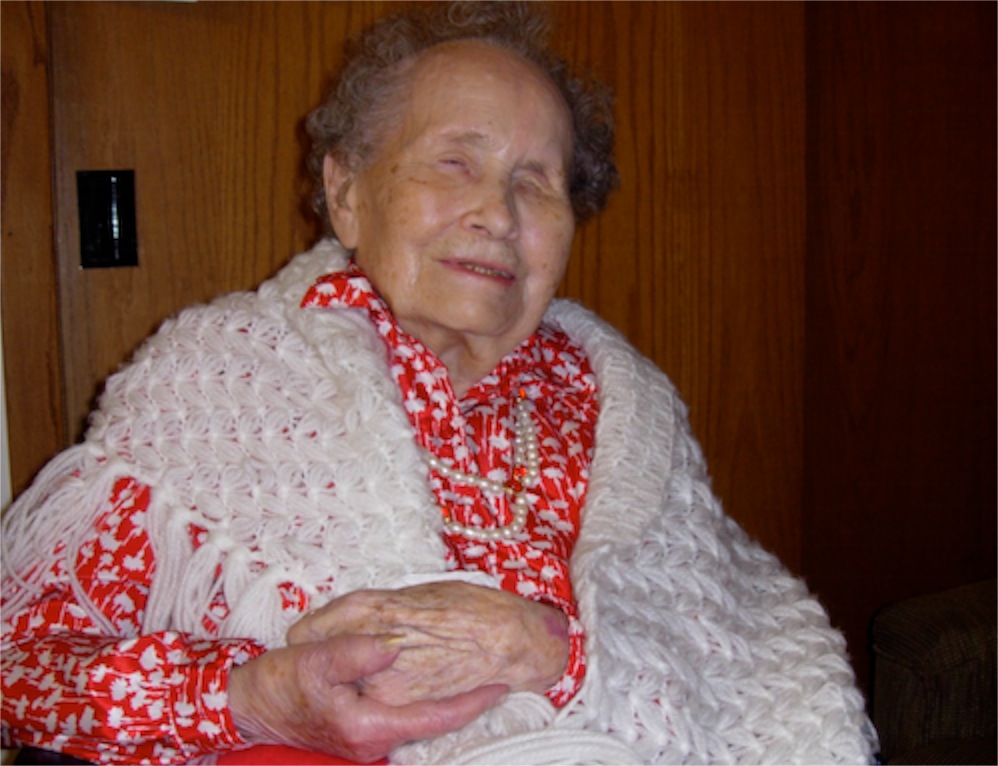
Min was 94 years old when I met her. She had been living in the retirement community for almost a decade at that point of her life. Her eyesight had failed her and she had companions who assisted here with daily living tasks, but she remained very active. She attended church regularly and came to the meetings of the women’s fellowship. At that point in her life, she was recognized as once of the elders of the church. We had a couple of members who had belonged to the church longer than she, as she didn’t join the church until she was 24 or 25 years old. Still, we didn’t have that many members who had belonged for 70 years. We hit it off in part because we both listened to the radio quite a bit. She told me I should start following the Lady Hardrockers, the women’s basketball team at South Dakota School of Mines and Technology. She also told me it was important that I visit the “old people” who live in nursing homes. I didn’t realize that one day she would hold the record as the person to whom I made the most visits while living in the nursing home.
Many years later, when we arranged for her to come to church in celebration of her 108th birthday she told me, “I think I should go to church on my birthday every year.” By then she was nearly deaf, and couldn’t understand the sermon or scripture readings, but she could feel the vibrations of the organ. She paid special attention to the organ repair and restoration project and was delighted to be able to come to church to hear the nearly completed instrument. We never worked it out for her to come to church again. The logistics were challenging. By then she used a wheelchair for mobility, was blind and nearly deaf, and needed a constant companion to help her get around. Her birthday was December 10 and the weather made it difficult for her to go outside. But she didn’t forget about church.
It was around that time that I noticed that she had a preference for a particular liturgy for communion. She was still able to get out of her room to participate in activities at the health care center, so we had small services with other residents. Sally Halley, another Rapid City pioneer, often joined us for those services. If I started to read a different liturgy, Min would loudly correct me. One of the advantages of being deaf is that you don’t sound loud to yourself. No one else has trouble hearing you, either. I realized that Min had the liturgy memorized. It makes sense. By that time she had taken communion more times than I had celebrated it. From that time on I always used the same liturgy and never left anything out when I celebrated with her each month.
Over the years I heard a lot of stories from Min. Her first husband was the owner of our city’s newspaper and she often found herself at the center of social gatherings. There were a lot of dignitaries who visited our city and were hosted in their home, including three Presidents of the United States.
Min had the focus of an editor when it came to a newspaper. Every word of our church’s monthly newsletter was read to her by one of her companions. When we made a mistake, we might get a phone call offering the correction. Sometimes Min would report the mistake when I came to visit. More than a few times, when I thought that she might not be paying attention, I discovered that she had been listening to every word with careful attention. She didn’t miss much even after we thought she might have stopped listening.
We didn’t lose Min all at once. She suffered little losses spread out over a long time. She lost her eyesight. She lost most of her hearing. She lost her mobility. She never lost her dignity.
In the last couple of years of her life, Min slept a lot. I often would arrive for a visit and it would be hard to wake her. Sometimes she would wake, but choose not to speak, so I couldn’t tell for sure if she knew I had come. I learned to recite the 23rd Psalm (King James Version) or the Lord’s Prayer (debts and debtors) and watch her lips. If she was awake, she’d say them with me.
She was awake, alert, dressed up, and excited for her 110th birthday party. She seemed to enjoy every minute, especially eating cake. When Al Pitts sang to her, she asked him to sing “I Love You Truly.” He complied. She beamed. It was a great day and I am glad I was there to witness it. A few days later, when I stopped by for a visit, she didn’t seem to wake up for me.
When she turned 111 last winter, we knew that it might be her last birthday. She had been more prone to infection than previously and seemed to catch every virus that came into the care center. She contacted MRSA and survived the treatment, but it left her weakened. Still she would acknowledge my presence when I visited and we shared communion. By mid-April, I was visiting almost every day. There seemed to be little change, though her breathing had slowed and her heart rate had increased. The doctor said that she could go at any time. I shared prayers. I anointed her with oil. I sat and held her hand.
It was a slow-motion process. After 111 years, four months and ten days, she just stopped breathing.
Her daughters, themselves not what people call young, decided not to have an immediate funeral, but rather a private graveside service at a later date. They chose not to run an obituary in the newspaper, though there was a news article about Min about 10 days after she died. It was very strange. She had been so much a part of the community for so many years that we didn’t know how to react. We had no opportunity to come together in our grief and share our stories. With love and respect for Min and for her family, however, we respected their wishes.
Today a small group of us will gather at the cemetery. I will be reading part of the service directly from the book of worship. I don’t want to miss a word. Even if Min cannot correct me, she has taught me to correct myself.
Min was always up for another adventure. She felt no need to rush the once-in-a-lifetime experience of dying. I have no doubt that she’s up for the adventure of what comes next.
Farewell, friend. We miss you.
Copyright © 2012 by Ted Huffman. I wrote this. If you want to copy it, please ask for permission. There is a contact me button at the bottom of this page. If you want to share my blog a friend, please direct your friend to my web site.
Bringing work home
20/06/12 05:34
There was another report released yesterday about the dangers of excessive use of electronic devices. This one was from the British Chartered Society of Physiotherapy. There is nothing particularly new in the report. It concludes that people need to learn to turn of electronic devices and take a break from constant connections.
 Businesses, however, should like the devices. The data from the study suggests that nearly two-thirds of workers now report continuing to work outside of office hours. The average is more than two hours of extra screentime every day. That is a lot of unpaid labor. Of course there are a lot of things other than work that can keep someone riveted to a digital screen. There are games to play, relationships to pursue with social media, and entertainment available on the devices.
Businesses, however, should like the devices. The data from the study suggests that nearly two-thirds of workers now report continuing to work outside of office hours. The average is more than two hours of extra screentime every day. That is a lot of unpaid labor. Of course there are a lot of things other than work that can keep someone riveted to a digital screen. There are games to play, relationships to pursue with social media, and entertainment available on the devices.
The report states, “While doing a bit of extra work at home may seem like a good short-term fix, if it becomes a regular part of your evening routine than it can lead to problems.” It goes on to say, “Excessive work levels are not good for anyone. Overworked employees are not only unlikely to be performing well at work, the stress an unmanageable workload causes is also likely to be making them ill. By the time someone is so overloaded they constantly feel the need to put in extra hours every night of the week at home, things have clearly got out of hand.”
The report goes on to detail physical problems caused by poor posture, primarily back and neck problems that have been connected with use of the device. I wondered if over use of the devices is also connected to a more sedentary lifestyle with less time devoted to healthy exercise. Perhaps some of the workers in the study would be just watching television if they weren’t engaged with their mobile computing devices.
 I had the study on my mind last night as I spoke with a young adult member of our congregation who is spending his summer working concrete. It is a good job for a college student. There are reasonable wages, steady work, and the opportunity to engage in physical labor. And, the student reported to me, his evenings are his own. Workdays begin at 6 a.m. and often continue until 5 p.m. with a few breaks. He averages 10 hours of work a day and often gets in 5 days a week. I guess it is good work for a younger man because I know that if I were working concrete 50 hours a week, I’d be spending most of my off hours sleeping.
I had the study on my mind last night as I spoke with a young adult member of our congregation who is spending his summer working concrete. It is a good job for a college student. There are reasonable wages, steady work, and the opportunity to engage in physical labor. And, the student reported to me, his evenings are his own. Workdays begin at 6 a.m. and often continue until 5 p.m. with a few breaks. He averages 10 hours of work a day and often gets in 5 days a week. I guess it is good work for a younger man because I know that if I were working concrete 50 hours a week, I’d be spending most of my off hours sleeping.
Of course a college student has less responsibility for yard care, family dynamics, household management and other tasks that are built into the lives of most other adults. The other advantage for the college student is the variety of his work. Nine months of the year his primary vocation is intellectual. He is reading and studying and preparing for his future vocation. For three months, his work is physical, outdoors and challenging. It is a nice balance. As I grow older, the attraction of a job that involves working just 9 months a year is more apparent to me. Of course, such a job would require careful planning about how to earn sufficient income to cover my expenses during the other three months each year.
I suspect that the problems of workers continuing to work at the end of regular hours has to do both with outside pressures and internal personality traits.
 There are plenty of outside pressures on workers today. With unemployment high, workers know that there is no such thing as a secure job. Employers know that it is easy to replace a worker and workers are willing to put in extra effort in order to keep their jobs. A decreased workforce also demands more of individual workers. High productivity is expected and in some jobs the demand for increasing productivity is incessant. The more that is accomplished, the more is demanded. The current economy is not employee friendly in Europe or the Americas.
There are plenty of outside pressures on workers today. With unemployment high, workers know that there is no such thing as a secure job. Employers know that it is easy to replace a worker and workers are willing to put in extra effort in order to keep their jobs. A decreased workforce also demands more of individual workers. High productivity is expected and in some jobs the demand for increasing productivity is incessant. The more that is accomplished, the more is demanded. The current economy is not employee friendly in Europe or the Americas.
More complex, and more difficult to assess, however, are the personality traits that result in workers continuing to push themselves once they are outside of the office. Some of us just aren’t suited to hourly jobs. Our minds do not stop thinking about our work because of a certain hour on the clock. Our passion for the work we do doesn’t require a particular location. If you are going to pour concrete, you need to be at the right place at the right time and continue to work until the concrete is finished. If you are solving problems, sometimes a walk can stimulate creative thinking. I know I’ve had ideas and solutions to problems come to me while I was taking a shower or mowing the lawn.
The report is another sign that the commandment about taking a Sabbath is still an important rule for a successful life. The Bible reminds us that even God rests. Taking a break from the work of creating is part of the normal rhythm of such work. And the book of Exodus presents the commandments as the pathway to freedom. “If you want to be free people,” Moses states, “follow these rules.” Had he lived in our time, he might well have added, “Free people do not become enslaved to electronic devices. Take a break from your e-mail!”
 Being a minister, I naturally downloaded the entire Bible onto my smartphone as soon as I obtained it. There are times when I’m reading or studying the bible with the screen in front of me. Like many other parts of my life, the distinction between working and not working is subtle. It is hard to know which activities constitute work and which are not work. If the concrete worker were reading his Bible on the job it would disrupt the workflow. If I am reading the Bible at work it is considered part of the job.
Being a minister, I naturally downloaded the entire Bible onto my smartphone as soon as I obtained it. There are times when I’m reading or studying the bible with the screen in front of me. Like many other parts of my life, the distinction between working and not working is subtle. It is hard to know which activities constitute work and which are not work. If the concrete worker were reading his Bible on the job it would disrupt the workflow. If I am reading the Bible at work it is considered part of the job.
I have no idea whether or not it is “work” for me to be reading reports about the effects of over use of electronic devices. I did, however, read the report on a portable computer brought home from work.

The report states, “While doing a bit of extra work at home may seem like a good short-term fix, if it becomes a regular part of your evening routine than it can lead to problems.” It goes on to say, “Excessive work levels are not good for anyone. Overworked employees are not only unlikely to be performing well at work, the stress an unmanageable workload causes is also likely to be making them ill. By the time someone is so overloaded they constantly feel the need to put in extra hours every night of the week at home, things have clearly got out of hand.”
The report goes on to detail physical problems caused by poor posture, primarily back and neck problems that have been connected with use of the device. I wondered if over use of the devices is also connected to a more sedentary lifestyle with less time devoted to healthy exercise. Perhaps some of the workers in the study would be just watching television if they weren’t engaged with their mobile computing devices.

Of course a college student has less responsibility for yard care, family dynamics, household management and other tasks that are built into the lives of most other adults. The other advantage for the college student is the variety of his work. Nine months of the year his primary vocation is intellectual. He is reading and studying and preparing for his future vocation. For three months, his work is physical, outdoors and challenging. It is a nice balance. As I grow older, the attraction of a job that involves working just 9 months a year is more apparent to me. Of course, such a job would require careful planning about how to earn sufficient income to cover my expenses during the other three months each year.
I suspect that the problems of workers continuing to work at the end of regular hours has to do both with outside pressures and internal personality traits.

More complex, and more difficult to assess, however, are the personality traits that result in workers continuing to push themselves once they are outside of the office. Some of us just aren’t suited to hourly jobs. Our minds do not stop thinking about our work because of a certain hour on the clock. Our passion for the work we do doesn’t require a particular location. If you are going to pour concrete, you need to be at the right place at the right time and continue to work until the concrete is finished. If you are solving problems, sometimes a walk can stimulate creative thinking. I know I’ve had ideas and solutions to problems come to me while I was taking a shower or mowing the lawn.
The report is another sign that the commandment about taking a Sabbath is still an important rule for a successful life. The Bible reminds us that even God rests. Taking a break from the work of creating is part of the normal rhythm of such work. And the book of Exodus presents the commandments as the pathway to freedom. “If you want to be free people,” Moses states, “follow these rules.” Had he lived in our time, he might well have added, “Free people do not become enslaved to electronic devices. Take a break from your e-mail!”

I have no idea whether or not it is “work” for me to be reading reports about the effects of over use of electronic devices. I did, however, read the report on a portable computer brought home from work.
Copyright © 2012 by Ted Huffman. I wrote this. If you want to copy it, please ask for permission. There is a contact me button at the bottom of this page. If you want to share my blog a friend, please direct your friend to my web site.
In the Middle
19/06/12 05:50
There is little doubt that our school district isn’t the only one struggling. Schools are under pressure from a lot of different directions. The political focus on standardized test scores has caused dramatic changes in classroom activities and curriculum design. There is much public debate about the effectiveness of the changes. US schools fall behind schools in other countries in terms of academic performance, but there is little agreement on how to change those results. In a climate of decreasing taxes, schools often fall victim to inadequate funding. In a culture of blame, teachers are often cited as the problem rather than the solution.
The debate about the problems of education will continue. And while they continue, children and youth will continue to try to make their way through the educational maze.
Like many others, my high school years weren’t a hallmark of academic performance. It is simplest to say that my attention was not centered on achieving grades, getting into college or any specific vocational direction. In other words I was typical. The area of the brain that controls impulse is the last to develop. Adolescents have a tendency to easily follow every distraction. Focus is often temporary. There are major developmental tasks yet to be accomplished for the majority of teens.
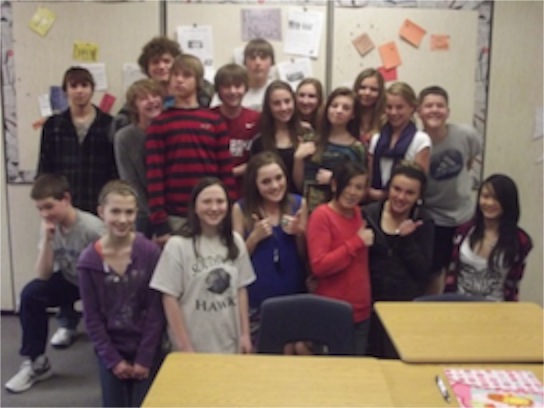 At the same time, physical development is accelerating. The age of onset of puberty continues to drop. Adolescents inhabit bodies that are strong and capable, yet their minds are not yet fully in control of their physical impulses.
At the same time, physical development is accelerating. The age of onset of puberty continues to drop. Adolescents inhabit bodies that are strong and capable, yet their minds are not yet fully in control of their physical impulses.
The traditional school response to the struggles of adolescence is to separate young teens from children and from older teens. The development of high schools was an acknowledgment of the difficulties of administering a single school for the entire educational span. After high schools became common, many school districts developed junior high schools. The typical configuration was grades 1 – 6 in elementary school, grades 7 - 9 in junior high and grades 10 – 12 in senior high. As public kindergarten became common school buildings were hard pressed to accommodate the need for additional classrooms. At the same time, the age of the onset of puberty was getting lower. Many school districts responded by re-configuring their age groupings. Common today are K – 5 in elementary, 6 – 8 in middle school, and 9 – 12 in high school, with many high schools creating a special wing or section for 9th graders to learn in a more controlled environment than the rest of the high school.
It is not difficult to see that the ages between 10 and 13 are socially awkward years. Increasingly research is indicating that they are also critical years for academic development. Middle school experiences are crucial in determining college and career outcomes. Attitudes towards school and learning are established in those years that are difficult to change.
From the perspective of the student, however, social and emotional development takes precedence over academics. Schools that ignore that ignore the culture of young adolescents cannot succeed. The development of critical thinking, organizational skills and moral judgment are more important to future academic success than are specific content items such as math, science and English.
Large urban school districts are experimenting with a lot of different possible solutions. In New York, 42 elementary schools have been reconfigured back into K – 8 configuration, eliminating middle schools entirely. An additional 38 schools have combined in the other direction, creating super high schools that teach grades 6 – 12.
 Here in Rapid City, the school board seems to be committed to sticking with a 6 – 8 Middle School model, at least for the time being. But funding cuts and other issues are transforming the middle school experience. In the fall students will have an early release on Wednesday. In theory this creates a concentrated block of time for extra-curricular activities. In reality it may create a large number of young adolescents who are either home alone or clustered in community afterschool programs. There are very few voices in our community who are touting the new plan as a solution to anything. Most are voicing frustration with the pressures of decreasing budget, increasing classroom size, and the time demands of extracurricular activities.
Here in Rapid City, the school board seems to be committed to sticking with a 6 – 8 Middle School model, at least for the time being. But funding cuts and other issues are transforming the middle school experience. In the fall students will have an early release on Wednesday. In theory this creates a concentrated block of time for extra-curricular activities. In reality it may create a large number of young adolescents who are either home alone or clustered in community afterschool programs. There are very few voices in our community who are touting the new plan as a solution to anything. Most are voicing frustration with the pressures of decreasing budget, increasing classroom size, and the time demands of extracurricular activities.
Parents are scrambling to figure out plans for transportation, activities and ways of providing safety and care for their students. Churches are re-thinking their Wednesday schedules of activities. Teachers are wondering if they have ended up losing an entire day of effective teaching due to the issues of re-engaging students after any interruption in their learning.
Life is not easy for middle school teachers. They need to develop skills in social management, academic teaching, and emotional support. They have to be able to interrupt a fistfight before the first punch is thrown. They need to be skilled at turning an insult into a vocabulary lesson. They have to be alert to drops in self-esteem that make it impossible for a student to engage in classroom activity. And they have to be adroit at handling surprises and unexpected turns in conversation. One thing about working with middle school students: just when you think you know an individual, she or he changes. Nothing stays the same in a middle school classroom. Life is unpredictable. The best teachers develop incredible flexibility and adaptability.
But too many of the best teachers are leaving middle school classrooms. Teacher turnover at the middle school level is the highest in our academic system. They wear out, burn out, move on, or move up. They switch careers. They switch school districts. They get tire of life in the middle.
This year will be a special challenge for all of us who care about the middle school youth of our community. Once again we need to find new energy and new resources to respond to changing and challenging conditions. As tough as it is for churches and schools, however, it is even tougher for the students, who have no choice but to give another year of their lives to an educational experiment while the community struggles to find out what might work.
Fortunately the adolescent brain is resilient. It can take an incredible amount of abuse and recover. Let’s hope that they get attention for their amazing creativity and resilience instead of the results of a lack of impulse control. It could be a short summer followed by a long school year in Rapid City.
The debate about the problems of education will continue. And while they continue, children and youth will continue to try to make their way through the educational maze.
Like many others, my high school years weren’t a hallmark of academic performance. It is simplest to say that my attention was not centered on achieving grades, getting into college or any specific vocational direction. In other words I was typical. The area of the brain that controls impulse is the last to develop. Adolescents have a tendency to easily follow every distraction. Focus is often temporary. There are major developmental tasks yet to be accomplished for the majority of teens.

The traditional school response to the struggles of adolescence is to separate young teens from children and from older teens. The development of high schools was an acknowledgment of the difficulties of administering a single school for the entire educational span. After high schools became common, many school districts developed junior high schools. The typical configuration was grades 1 – 6 in elementary school, grades 7 - 9 in junior high and grades 10 – 12 in senior high. As public kindergarten became common school buildings were hard pressed to accommodate the need for additional classrooms. At the same time, the age of the onset of puberty was getting lower. Many school districts responded by re-configuring their age groupings. Common today are K – 5 in elementary, 6 – 8 in middle school, and 9 – 12 in high school, with many high schools creating a special wing or section for 9th graders to learn in a more controlled environment than the rest of the high school.
It is not difficult to see that the ages between 10 and 13 are socially awkward years. Increasingly research is indicating that they are also critical years for academic development. Middle school experiences are crucial in determining college and career outcomes. Attitudes towards school and learning are established in those years that are difficult to change.
From the perspective of the student, however, social and emotional development takes precedence over academics. Schools that ignore that ignore the culture of young adolescents cannot succeed. The development of critical thinking, organizational skills and moral judgment are more important to future academic success than are specific content items such as math, science and English.
Large urban school districts are experimenting with a lot of different possible solutions. In New York, 42 elementary schools have been reconfigured back into K – 8 configuration, eliminating middle schools entirely. An additional 38 schools have combined in the other direction, creating super high schools that teach grades 6 – 12.

Parents are scrambling to figure out plans for transportation, activities and ways of providing safety and care for their students. Churches are re-thinking their Wednesday schedules of activities. Teachers are wondering if they have ended up losing an entire day of effective teaching due to the issues of re-engaging students after any interruption in their learning.
Life is not easy for middle school teachers. They need to develop skills in social management, academic teaching, and emotional support. They have to be able to interrupt a fistfight before the first punch is thrown. They need to be skilled at turning an insult into a vocabulary lesson. They have to be alert to drops in self-esteem that make it impossible for a student to engage in classroom activity. And they have to be adroit at handling surprises and unexpected turns in conversation. One thing about working with middle school students: just when you think you know an individual, she or he changes. Nothing stays the same in a middle school classroom. Life is unpredictable. The best teachers develop incredible flexibility and adaptability.
But too many of the best teachers are leaving middle school classrooms. Teacher turnover at the middle school level is the highest in our academic system. They wear out, burn out, move on, or move up. They switch careers. They switch school districts. They get tire of life in the middle.
This year will be a special challenge for all of us who care about the middle school youth of our community. Once again we need to find new energy and new resources to respond to changing and challenging conditions. As tough as it is for churches and schools, however, it is even tougher for the students, who have no choice but to give another year of their lives to an educational experiment while the community struggles to find out what might work.
Fortunately the adolescent brain is resilient. It can take an incredible amount of abuse and recover. Let’s hope that they get attention for their amazing creativity and resilience instead of the results of a lack of impulse control. It could be a short summer followed by a long school year in Rapid City.
Copyright © 2012 by Ted Huffman. I wrote this. If you want to copy it, please ask for permission. There is a contact me button at the bottom of this page. If you want to share my blog a friend, please direct your friend to my web site.
Changing Times
18/06/12 05:32
A number of years ago, while working on a project that produced a resource for confirmation preparation, I did a brief comparison of the charts that American Christian denominations used to illustrate church history. It was interesting how each denomination seemed to see itself as the natural culmination of all of church history. Major divisions in the church were charted as branches in a stream. Almost all of the diagrams used either trees or streams as an illustration and showed how history had progressed in such a way to make the particular denomination the natural outcome of the history of the church.
The real story is much different. The history of the Christian Church and of denominations, especially in the United States is filled with bitter divides and divisions over theology, polity and a host of other issues.
The great splits in the history of Christianity have resulted in major differences in various parts of the church. The Great Schism produced orthodox and catholic churches. The Protestant Reformation divided the church again.
 Our particular branch of Christianity has its roots in the split that divided the Church of England from the Roman Catholic Church. Not long after that division, Puritans in England sought further reforms in the church. They attempted a return to New Testament Christianity. The New Testament doesn’t provide much information about how churches should be organized or what specific policies should govern the lives of church members, so there were disagreements. One of the disagreements was over the issue of the appropriate age for baptism. Some cited the adult baptism of Jesus as the sole model. Others cited the baptism of entire families in Acts as evidence that child and infant baptism should be practiced. At the opening of the 17th Century, John Smyth was a leading advocate of adult baptism in England. In 1609 he re-baptized himself and others. He raised eyebrows because of the fact that he conducted his own baptism and because of his promotion of the re-baptism of himself and others, thus questioning the authenticity of baptisms already conducted in other churches.
Our particular branch of Christianity has its roots in the split that divided the Church of England from the Roman Catholic Church. Not long after that division, Puritans in England sought further reforms in the church. They attempted a return to New Testament Christianity. The New Testament doesn’t provide much information about how churches should be organized or what specific policies should govern the lives of church members, so there were disagreements. One of the disagreements was over the issue of the appropriate age for baptism. Some cited the adult baptism of Jesus as the sole model. Others cited the baptism of entire families in Acts as evidence that child and infant baptism should be practiced. At the opening of the 17th Century, John Smyth was a leading advocate of adult baptism in England. In 1609 he re-baptized himself and others. He raised eyebrows because of the fact that he conducted his own baptism and because of his promotion of the re-baptism of himself and others, thus questioning the authenticity of baptisms already conducted in other churches.
The Baptists, as his followers were soon called, were persecuted in England. Like the Pilgrims who founded our denomination in America, they left England and, under the leadership of Roger Williams, the first Baptist church in America was established at Providence, Rhode Island in 1638 after Williams was essentially driven out of the Massachusetts Bay Colony. The Baptists and Congregationalists had similar organizational structures derived from their shared history.
Emotional conversion, adult baptism, membership in a community and accountability to the communion became the hallmarks of American Baptists. The concept of separation of church and state as a principal of American Government was the result of the division. While the Congregationalists envisioned an America where their version of Christianity was dominant, supported and promoted by the government, the Baptists insisted on sufficient religious freedom for them to practice their version of the faith.
The Baptists and Congregationalists both grew and expanded through the 1700’s and early 1800’s, forming missionary societies, opening new congregations, and expanding ministries across the United States. The Congregationalists tended to be more dominant in the New England states while the Baptists grew more quickly in the south. By the 1830’s a major division was occurring within the Baptist Convention. Northern Baptists began to push for an end to slavery, while Southern Baptists maintained the Bible condoned the Slavery. The division became official in 1845 when the Baptist Home Mission Society declared that a person could not be a missionary and wish to keep slaves as property. This was intolerable to those in the south and they formed the Southern Baptist Convention as a separate church.
 The Southern Baptist Convention has tended to be more conservative and slower to change than the American Baptist Convention in the North. But change has occurred nonetheless. The Annual Meeting of the Southern Baptist Convention will open tomorrow in New Orleans, Louisiana. One of the votes that will occur is the election of a new president for the convention. Rev. Fred Luther is running unopposed and is expected to easily win the election. Rev. Fred Luther is an African-American. The Southern Baptist Convention is no longer pro-slavery. They no longer embrace the separation of races. Change comes to the whole church, even its most conservative communions.
The Southern Baptist Convention has tended to be more conservative and slower to change than the American Baptist Convention in the North. But change has occurred nonetheless. The Annual Meeting of the Southern Baptist Convention will open tomorrow in New Orleans, Louisiana. One of the votes that will occur is the election of a new president for the convention. Rev. Fred Luther is running unopposed and is expected to easily win the election. Rev. Fred Luther is an African-American. The Southern Baptist Convention is no longer pro-slavery. They no longer embrace the separation of races. Change comes to the whole church, even its most conservative communions.
Rev. Luther was a street preacher when the Southern Baptists were looking for someone to lead a struggling congregation in a transitional neighborhood in New Orleans. As African-Americans moved into the neighborhood, whites were leaving. The once-thriving Southern Baptist Church was empty and the building was offered by the Convention as a place to build up a new congregation, as long as that congregation remained affiliated with the Southern Baptist Convention. Rev. Luther and 50 people took on that challenge and they built the congregation to the thriving 5,000-member church that it is today. The church and neighborhood were devastated by the floods that followed Hurricane Katrina, but they rebuilt, replacing all of the furniture and expanding the church. Now their pastor is in line to be elected president of the Southern Baptist Convention.
The Southern Baptist Convention continues to enjoy calling itself conservative. They continue to look to the Bible as a guide to social issues. They continue to interpret it in ways that are distinct from other Christians. But it is fascinating to see how old issues have fallen away. In today’s culture of hot button issues, it is good to remember that the fight over slavery was bitter and divisive and that people on both sides of the debate claimed exclusive ownership of the Christian moral high ground. They cited their bibles and declared that their opponents were not worthy to be called Christian. By comparison with the debate over slavery, the current debate over the role of gay and lesbian pastors in the church is mild. It likely will not happen in our lifetime, but it seems quite likely that a day will come when the church is of one mind on that issue as well.
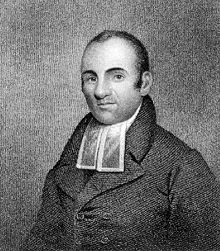 I’m not a Baptist. I’m not a Southern Baptist. My people followed different paths in those divisions of the church. But I celebrate with the Southern Baptist the election of their first African-American president. As a member of the denomination where the first African-American minister was ordained in 1785, and whose current African-American General Minister and President is not our first, I celebrate with the Southern Baptists this week in the election of their new President.
I’m not a Baptist. I’m not a Southern Baptist. My people followed different paths in those divisions of the church. But I celebrate with the Southern Baptist the election of their first African-American president. As a member of the denomination where the first African-American minister was ordained in 1785, and whose current African-American General Minister and President is not our first, I celebrate with the Southern Baptists this week in the election of their new President.
There is more to bind us together in our faith than there is to divide us.
The real story is much different. The history of the Christian Church and of denominations, especially in the United States is filled with bitter divides and divisions over theology, polity and a host of other issues.
The great splits in the history of Christianity have resulted in major differences in various parts of the church. The Great Schism produced orthodox and catholic churches. The Protestant Reformation divided the church again.

The Baptists, as his followers were soon called, were persecuted in England. Like the Pilgrims who founded our denomination in America, they left England and, under the leadership of Roger Williams, the first Baptist church in America was established at Providence, Rhode Island in 1638 after Williams was essentially driven out of the Massachusetts Bay Colony. The Baptists and Congregationalists had similar organizational structures derived from their shared history.
Emotional conversion, adult baptism, membership in a community and accountability to the communion became the hallmarks of American Baptists. The concept of separation of church and state as a principal of American Government was the result of the division. While the Congregationalists envisioned an America where their version of Christianity was dominant, supported and promoted by the government, the Baptists insisted on sufficient religious freedom for them to practice their version of the faith.
The Baptists and Congregationalists both grew and expanded through the 1700’s and early 1800’s, forming missionary societies, opening new congregations, and expanding ministries across the United States. The Congregationalists tended to be more dominant in the New England states while the Baptists grew more quickly in the south. By the 1830’s a major division was occurring within the Baptist Convention. Northern Baptists began to push for an end to slavery, while Southern Baptists maintained the Bible condoned the Slavery. The division became official in 1845 when the Baptist Home Mission Society declared that a person could not be a missionary and wish to keep slaves as property. This was intolerable to those in the south and they formed the Southern Baptist Convention as a separate church.

Rev. Luther was a street preacher when the Southern Baptists were looking for someone to lead a struggling congregation in a transitional neighborhood in New Orleans. As African-Americans moved into the neighborhood, whites were leaving. The once-thriving Southern Baptist Church was empty and the building was offered by the Convention as a place to build up a new congregation, as long as that congregation remained affiliated with the Southern Baptist Convention. Rev. Luther and 50 people took on that challenge and they built the congregation to the thriving 5,000-member church that it is today. The church and neighborhood were devastated by the floods that followed Hurricane Katrina, but they rebuilt, replacing all of the furniture and expanding the church. Now their pastor is in line to be elected president of the Southern Baptist Convention.
The Southern Baptist Convention continues to enjoy calling itself conservative. They continue to look to the Bible as a guide to social issues. They continue to interpret it in ways that are distinct from other Christians. But it is fascinating to see how old issues have fallen away. In today’s culture of hot button issues, it is good to remember that the fight over slavery was bitter and divisive and that people on both sides of the debate claimed exclusive ownership of the Christian moral high ground. They cited their bibles and declared that their opponents were not worthy to be called Christian. By comparison with the debate over slavery, the current debate over the role of gay and lesbian pastors in the church is mild. It likely will not happen in our lifetime, but it seems quite likely that a day will come when the church is of one mind on that issue as well.

There is more to bind us together in our faith than there is to divide us.
Copyright © 2012 by Ted Huffman. I wrote this. If you want to copy it, please ask for permission. There is a contact me button at the bottom of this page. If you want to share my blog a friend, please direct your friend to my web site.
Father's Day 2012
17/06/12 05:37
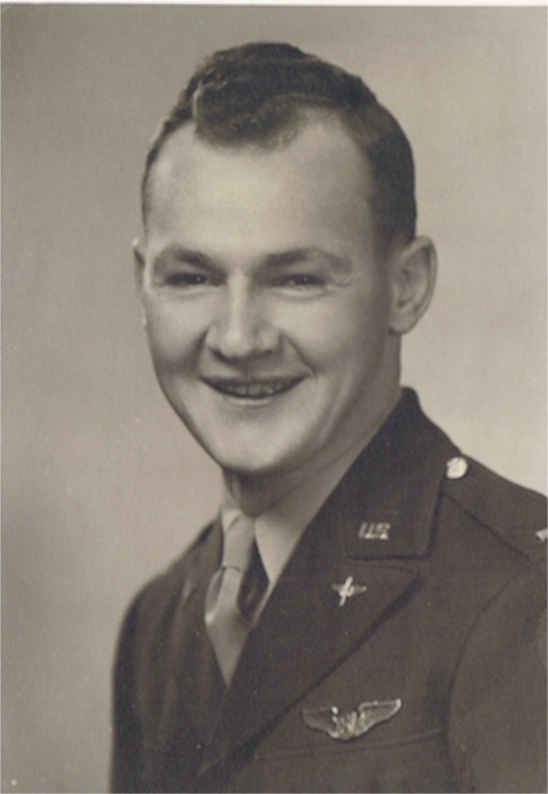
Not every father is as wonderful. I see examples of frightened fathers who run away from responsibility. I’ve witnessed selfish fathers who put their own wants ahead of the needs of their children. I can tell stories of fathers who lacked the skill to cope with the demands of their children. I know of men who became fathers before they were mature enough to provide what their children needed. I’ve seen children who were abused and neglected by their fathers.
I also know the stories of fathers who, through no fault of their own, were forced to leave their children all too soon. Accidents and illnesses have taken fathers away from families. Death sometimes comes all too soon. Families become reconfigured because of complex relationships. Divorces are not always the fault of the father. In fact, assigning blame in a failed relationship is a tricky business. When a relationship fails, it may be that neither individual has failed. Life is complicated. People make decisions that have huge consequences. Sometimes we make mistakes.
I was 28 when I became a father. It was just months after the death of my father. I had my doubts. I wanted to live up to the values I had been taught. I wondered if I would be equal to the task. But I don’t remember ever questioning my becoming a father. It seems to be something that I have always wanted to do and once I became a father, it seems like one of the most important parts of my identity.
Dreaming about something is not the same as the reality. There are things that you cannot imagine until they occur. I like to take my time getting to know someone. I used to scoff as people who talked about love at first sight. Loving someone involves getting to know that person. Love grows and develops over time and must be nurtured by active caring. But when I was handed my son and when I was handed my daughter it was absolutely love at first sight. It is an emotion that I cannot describe, but I instantly knew in both cases that this was someone with whom I wanted to become totally devoted without reservation. I got to repeat the experience with a grandson.
All along the journey of being a father there have been surprises. Most of them have been wonderful. There have been many occasions when I took my inspiration from my father and from my father-in-law. I had such good examples in my life that I frequently asked myself what would my father have done. There were many complex decisions in the seasons of separation when our children became adults. Sometimes I didn’t know how much or what ways to help. Sometimes I was letting go when my instinct was to hold tighter. Sometimes I had to allow our children to make their own decisions when I would have made a different decision. In this I had great examples from my father who taught me “fair isn’t always equal.” My father in law taught me, “no matter what we’re going to keep talking to each other.”
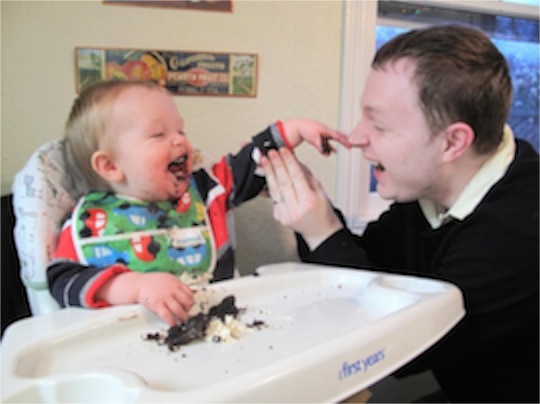
I know that the behavior of fathers can be a theological problem for some. When we pray the Lord’s Prayer, I find the beginning to be deeply meaningful. When I say “Our father,” I know that I am not addressing my own father. I also know that Jesus’ original address in the prayer was “Abba” which is closer to “Daddy,” than our formal “Our Father.” Having had a wonderful father and father-in-law gives me all kinds of positive associations with the greeting we use to address God. But I once spent a couple of hours talking with a woman who had been severely abused by her own father. The beginning of the prayer was a barrier. She said, “I just can’t think of God as father. God is good. God is love. My father was neither.” The conversation really opened my eyes. There is a remembrance of her witness in my prayers. I have found other modes of addressing God and sometimes when I am not leading public prayers, I begin Jesus’ prayer, “Creator, who art in heaven . . .” simply to honor those who have experienced pain at the hands of earthly fathers. I have used this woman’s story as a way of teaching about prayer and opening the minds of others to different ways of addressing God.
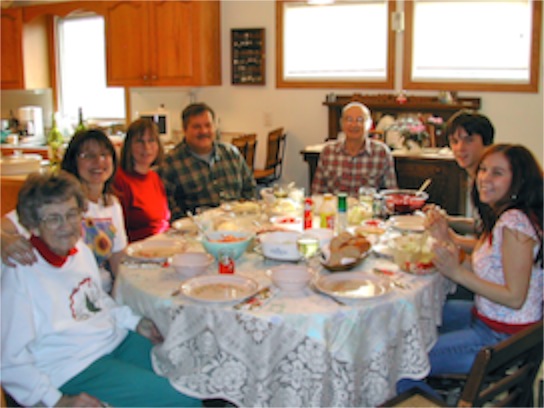
Happy father’s day! May this day bring you pleasant memories and the awareness of the legacy that is yours to share.
Copyright © 2012 by Ted Huffman. I wrote this. If you want to copy it, please ask for permission. There is a contact me button at the bottom of this page. If you want to share my blog a friend, please direct your friend to my web site.
Fifty-nine
16/06/12 05:20
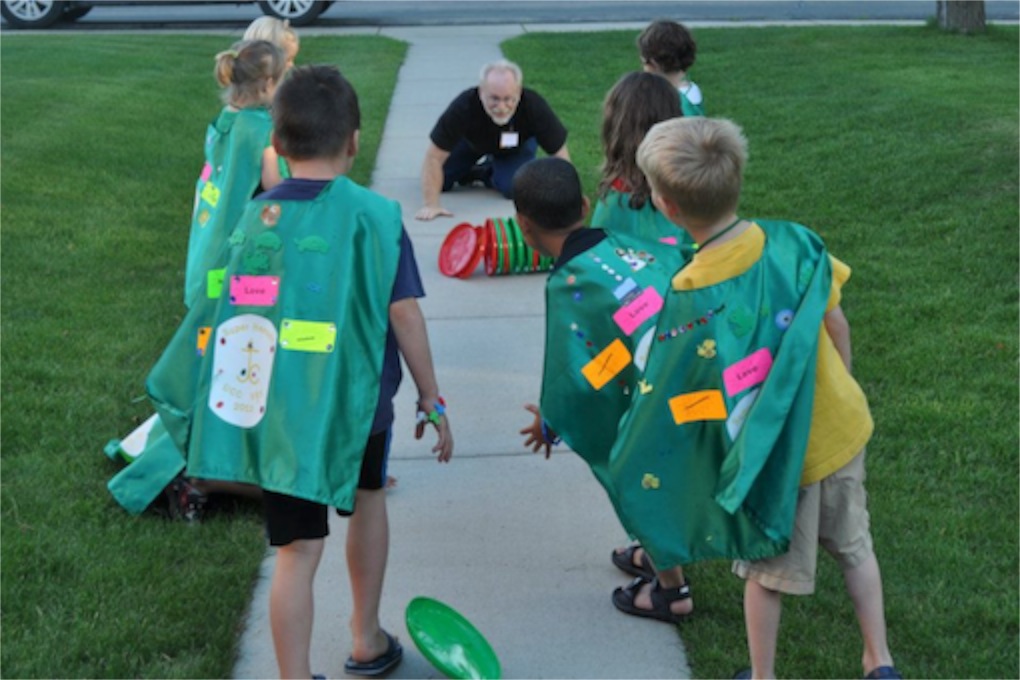
I suppose that there are other topics worthy of this morning’s blog, but the occasion of a birthday makes me a bit self-reflective and so I will indulge in a bit of narcissism this today. I’m not a big fan of navel-gazing and I find that I often learn more from looking at others than engaging in self-analysis. But this is a bit of a milestone year for me.
I guess there was a time when I thought 59 was old. I probably once thought that 50 was old. But I don’t feel old. My body is remarkably free from aches and pains. I have energy for my work and enthusiasm for recreational activities. I have been very fortunate in my health and have suffered very few diseases. I am not particularly subject to the various colds and viruses that go around and whatever allergies I had when I was younger seem to have abated. Life is good and I feel blessed.
Still there are several things about being 59. 59 means I have to get serious about planning for retirement. I have resisted thinking about retirement much. I love my work. The ministry doesn’t have a mandatory retirement age. Many pastors are allowed to engage in ministry for many years beyond the traditional 65. I don’t know exactly what I have been thinking about retiring, except that I haven’t been thinking about it much at all. I guess I always assumed that I would work a bit past 65 as long as my health and love for the ministry were strong.
But some things have changed. I am well past the age when it is easy for a minister to change jobs. The simple truth is that no church wants its “new” minister to be someone in their sixties. And 59 is easy to read as “almost sixty.” Jobs that I could have gotten a decade ago are no longer options for me. Older ministers who make moves usually end up doing interim and temporary work, changing jobs every couple of years. And they have to be willing to move a lot.
There is also the simple fact that new leadership cannot emerge when old leaders don’t step aside and share power. The job I have could be done by a younger person. A younger person won’t get a chance to do that job, however, until I step aside and make it available. In an economy where there is a shortage of jobs for young adults there is a bit of selfishness about hanging on to a job when one passes retirement age.
Being 59 means that I simply have fewer career options than I had a decade ago. This is not a complaint. I don’t think that there is something wrong with the world. It is simply the truth. The same factors that made it relatively easy for me to change churches at 32 and 42 years of age make it easier for the people who are now in their thirties and forties to make career changes. It would be sour grapes to enjoy the benefits and then begrudge someone else the same.
But career and calling aren’t the biggest challenge of being 59 for me. Here is the thing that I don’t talk about but that I think about from time to time: My father was 59 when he died. I am not a superstitious person. I don’t go around looking for signs. I know well the factors that make me much different from my father. The course of my life has been different from his, and my destination and ending story will be different as well.
Furthermore, I don’t lack for wonderful examples of men who live long and purposeful lives. I was blessed with the best father-in-law imaginable. Keith lived past his 90th birthday with dignity and grace. In the church I get the pleasure of working with lots of men who have forged meaningful lives into their eighties and nineties. I know that there is much purpose, joy, dignity, and meaning that is yet to emerge in my life. I have seen it in the lives of others.
Beyond that, I don’t think that I am afraid about dying. I know that this earthly journey is only part of the story and that the next adventures are literally beyond our capacity to imagine. I’ve been at the bedside of too many people as they have died. I’ve preached too many funeral sermons to think that death is something to be feared. It is one more of the big transitions of this life.
I’ve thought about it quite a bit and I have no sense that my life is coming to an end just because I’ve counted the same number of years as did my father. I know that counting days or months or years is a poor measure of the worth, the meaning and the beauty of human life.
Of course I cannot avoid comparisons. My father was far more financially successful than I. He had planned and arranged things so that our mother was well cared-for for 30 years of widowhood. His earnings were able to go to supporting several causes that were important to him and provide lasting legacy for others. My impact will be smaller, at least the part of the impact that can be counted in dollars and cents. I have no problem with that. I have chosen a different career path. And I have the good fortune of knowing that my father approved of my vocation and was fully supportive of my ordination. He would be proud, as they say.
So 59 is a year that is momentous for me in some way. There is much to learn. And, fortunately, there is less of me to do the learning. I have been successful in my plan to lose weight and gain stamina and endurance. It is easier for me to run and jump and get down on the ground to play with children than it was a year ago. I will launch a new boat within the next couple of weeks. I will have opportunities to play with my grandson and enjoy our children.
I pray that I have a couple of good sermons and a few more meaningful Bible studies to share. I hope that I have gained some wisdom that helps me avoid some of the mistakes I made when I was younger. And I plan to remain open to new ideas and the energy and enthusiasm of youth if not for my own sake, than at least for the sake of the good people I serve.
59 will likely surprise me. And I like surprises.
Copyright © 2012 by Ted Huffman. I wrote this. If you want to copy it, please ask for permission. There is a contact me button at the bottom of this page. If you want to share my blog a friend, please direct your friend to my web site.
Vacation Bible School
15/06/12 05:30
A quick drive around Rapid City will reveal a lot of signs in churches advertising their summer Vacation Bible School programs. The popular program in our town this year is called “Sky.” It is a packaged program from Group Publishing. The basic starter pack sells for $142.19. Of course the marketers hope that churches will purchase lots of the extras including nametags, name badge holders, “memory buddies” which are trinkets that can be used as prizes. They also sell supplies for the crafts and games. Their big selling point is that everything is available from the publisher so that all local leaders have to do is follow simple instructions. I sometimes refer to this style of program as “cookbook,” because it is designed to be replicated by following the written step-by-step instructions. The problem with cook book curricula is that you can get cookie cutter results.

 A church can produce excellent results from a program like Sky, but only if they add their own ingredients, especially caring and well trained adults with a variety of supplemental activities in reserve. There is no substitute in any program for really getting to know the participating children and listening carefully to their concerns.
A church can produce excellent results from a program like Sky, but only if they add their own ingredients, especially caring and well trained adults with a variety of supplemental activities in reserve. There is no substitute in any program for really getting to know the participating children and listening carefully to their concerns.

 There are a lot of other package VBS programs available. Group Publishing also has Babylon: Daniel’s Courage in Captivity. Gospel Light’s program this year is “Sonrise National Park,” not to be confused with Bogard Press’ “Sonlight Express.” There is “Promise Island” from Standard Press and “InrediWorld Amazement Park” from AIG. Baptist Press has a couple of revised versions of “Bug Zone.” You get the picture. Gimmicks and glossy posters are far more prominent than sound educational theory and consistent theology. Bug Zone, Fishin’ on a Mission, IncrediWorld and Sonlight Express all tout the fact that they use the King James Version of the Bible as if that was some kind of promise of theological consistency. Those who tout that particular version of the Bible as a sign of conservatism know very little about the history of Biblical Translations. I guess they just like it because it somehow sounds old. I love the KJV’s translations of the Psalms and find it to be a good bible for devotions and some worship uses. But it is not a children’s bible. The use of “Thee” and “Thou” makes the Bible sound foreign to young ears. The last thing needed in serious Biblical education is distance between the Bible and the reader.
There are a lot of other package VBS programs available. Group Publishing also has Babylon: Daniel’s Courage in Captivity. Gospel Light’s program this year is “Sonrise National Park,” not to be confused with Bogard Press’ “Sonlight Express.” There is “Promise Island” from Standard Press and “InrediWorld Amazement Park” from AIG. Baptist Press has a couple of revised versions of “Bug Zone.” You get the picture. Gimmicks and glossy posters are far more prominent than sound educational theory and consistent theology. Bug Zone, Fishin’ on a Mission, IncrediWorld and Sonlight Express all tout the fact that they use the King James Version of the Bible as if that was some kind of promise of theological consistency. Those who tout that particular version of the Bible as a sign of conservatism know very little about the history of Biblical Translations. I guess they just like it because it somehow sounds old. I love the KJV’s translations of the Psalms and find it to be a good bible for devotions and some worship uses. But it is not a children’s bible. The use of “Thee” and “Thou” makes the Bible sound foreign to young ears. The last thing needed in serious Biblical education is distance between the Bible and the reader.

 In general, package VBS programs are lightweight on education. They seem to choose their bible stories at random. Of course narrative stories are easier to teach. And there will always be teachers who want to teach only the things that are familiar to them, which results in an ever “shrinking” Bible as fewer and fewer stories are familiar.
In general, package VBS programs are lightweight on education. They seem to choose their bible stories at random. Of course narrative stories are easier to teach. And there will always be teachers who want to teach only the things that are familiar to them, which results in an ever “shrinking” Bible as fewer and fewer stories are familiar.

 A more detailed critique of VBS programs would get boring for a blog. The real tragedy is that virtually all of them are the result that churches no longer invest in curriculum for instruction. They expect educational resources to at least break even, and in the case of Group, Gospel Light and Standard, they are in the business of making money from their resources, which means that there has to be a difference between what it costs to produce and what the churches pay. From that perspective the most valued products are ones that are inexpensive to produce and sell in big volume. The highest quality rarely comes at the lowest price.
A more detailed critique of VBS programs would get boring for a blog. The real tragedy is that virtually all of them are the result that churches no longer invest in curriculum for instruction. They expect educational resources to at least break even, and in the case of Group, Gospel Light and Standard, they are in the business of making money from their resources, which means that there has to be a difference between what it costs to produce and what the churches pay. From that perspective the most valued products are ones that are inexpensive to produce and sell in big volume. The highest quality rarely comes at the lowest price.

 And none of these products addresses a couple of underlying problems in Christian Education. As families struggle with ever-busier schedules, the volunteer base for VBS leaders is shrinking. Most of our congregations have to plan programs that allow for substitutions because we can’t get people who are able to volunteer for five days in a row. Many congregations are resorting to younger and younger leaders in order to staff their programs.
And none of these products addresses a couple of underlying problems in Christian Education. As families struggle with ever-busier schedules, the volunteer base for VBS leaders is shrinking. Most of our congregations have to plan programs that allow for substitutions because we can’t get people who are able to volunteer for five days in a row. Many congregations are resorting to younger and younger leaders in order to staff their programs.
While VBS can be an opportunity for outreach into the community, it rarely produces committed members for a congregation. That doesn’t mean that it isn’t a good thing to do, it just means that some people in the congregation will have expectations that cannot be fulfilled.
Our VBS program for 2012 concludes with a big picnic this evening. In general, I think it was a success. We once again developed our own program after reviewing many packaged programs. We decided that substance and consistency were more attractive than trinkets. That meant that we had to do a lot of work to prepare. Opening activities and videos were not all on one easy DVD. We had to learn new songs well enough to teach them. We had to put together our sets and decorations. We had to design crafts and games and our story center. It was worth the investment.
But it is not without challenges. Some of the participants in our program are what I dub the “VBS Pros.” These are children whose parents sign them up for multiple programs each summer. One child in our program will participate in eight different VBS programs this summer. He obviously participated in quite a few last year as well. He knows how to work the volunteers for extra attention, has a system for pushing the edges of the rules, and doesn’t become too attached to other kids since he’ll be with a different group next week. We offer a high-quality program at no charge to these children along with the others because we know that kids like this boy will have lots of repetition throughout the summer. He’ll probably see the Sky curriculum in at least four of his eight weeks, based on the yard signs at the churches in town.
We have several children who are participating in our program whose separated or divorced parents are using our program as an exchange point for their children. One parent drops the kids off and the other picks them up. This allows the parents to make the kid exchange without actually having to talk to each other. It may be convenient for the parents, but it is a challenge for their children.
The world has changed a lot since I was a kid in VBS. But our commitment to the children of the community is no less than it was in those days. We work hard to create a safe learning environment and to provide quality experiences for all who come to participate. I continue to believe that it is worth the effort. Who knows, after eight VBS experiences in the same summer, perhaps one will stand out in the memory of a little boy whose parents see church as a modified form of childcare.
There is much that remains to be taught.










While VBS can be an opportunity for outreach into the community, it rarely produces committed members for a congregation. That doesn’t mean that it isn’t a good thing to do, it just means that some people in the congregation will have expectations that cannot be fulfilled.
Our VBS program for 2012 concludes with a big picnic this evening. In general, I think it was a success. We once again developed our own program after reviewing many packaged programs. We decided that substance and consistency were more attractive than trinkets. That meant that we had to do a lot of work to prepare. Opening activities and videos were not all on one easy DVD. We had to learn new songs well enough to teach them. We had to put together our sets and decorations. We had to design crafts and games and our story center. It was worth the investment.
But it is not without challenges. Some of the participants in our program are what I dub the “VBS Pros.” These are children whose parents sign them up for multiple programs each summer. One child in our program will participate in eight different VBS programs this summer. He obviously participated in quite a few last year as well. He knows how to work the volunteers for extra attention, has a system for pushing the edges of the rules, and doesn’t become too attached to other kids since he’ll be with a different group next week. We offer a high-quality program at no charge to these children along with the others because we know that kids like this boy will have lots of repetition throughout the summer. He’ll probably see the Sky curriculum in at least four of his eight weeks, based on the yard signs at the churches in town.
We have several children who are participating in our program whose separated or divorced parents are using our program as an exchange point for their children. One parent drops the kids off and the other picks them up. This allows the parents to make the kid exchange without actually having to talk to each other. It may be convenient for the parents, but it is a challenge for their children.
The world has changed a lot since I was a kid in VBS. But our commitment to the children of the community is no less than it was in those days. We work hard to create a safe learning environment and to provide quality experiences for all who come to participate. I continue to believe that it is worth the effort. Who knows, after eight VBS experiences in the same summer, perhaps one will stand out in the memory of a little boy whose parents see church as a modified form of childcare.
There is much that remains to be taught.
Copyright © 2012 by Ted Huffman. I wrote this. If you want to copy it, please ask for permission. There is a contact me button at the bottom of this page. If you want to share my blog a friend, please direct your friend to my web site.
Come to Pray
14/06/12 05:15
There are a lot of old songs that stick in my mind. I don’t know all of the verses to a lot of them, just the chorus or a little bit. But somehow these imperfect memories crowd my mind. I catch myself singing at all sorts of places in my life.
Yesterday, I had the song, “Don to the River to Pray” in my head all day long:
As I went down in the river to pray
Studying about that good ol’ way
And who shall wear the starry crown?
Good Lord show me the way!
O sisters let’s go down
Let’s go down, come on down
O sisters let’s go down
Down in the river to pray
The other verses are all a variation on the theme. One asks, “Who shall wear the rob & crown?” And the choruses go through sisters, brothers, mothers and fathers. I think the last chorus is “O sinners.” The tune really sticks with you once you start thinking about it.
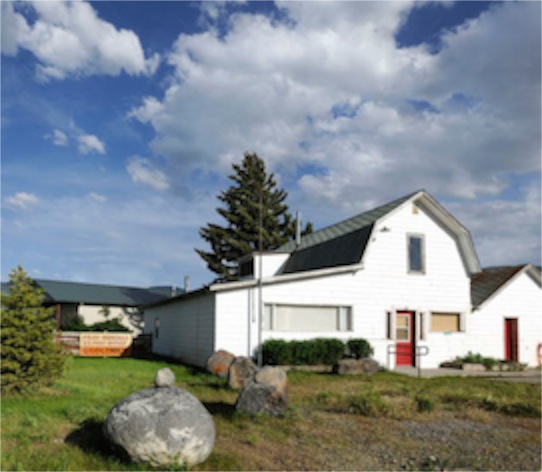 I often don’t know why a particular song is in my head, but I do know why I was singing that song yesterday. I had read an article about the sale of the town of Pray, Montana. The town has been listed as “for sale” for several months. The asking price is $1.4 million. That is quite a bit of money for five acres with the old bar and store and the post office.
I often don’t know why a particular song is in my head, but I do know why I was singing that song yesterday. I had read an article about the sale of the town of Pray, Montana. The town has been listed as “for sale” for several months. The asking price is $1.4 million. That is quite a bit of money for five acres with the old bar and store and the post office.
If you’ve never been there you might not understand. Pray sits in one of the most beautiful places in the world. Paradise valley is the general name given to the Yellowstone River Valley between Gardiner and Livingston, Montana. The river is the best of blue ribbon trout fishing, wonderful for canoeing, rafting, drift boating or just floating down on an inner tube. Be advised, however, the water is cold. It is coming straight from Yellowstone Lake, over the falls of the Yellowstone and out into the broader valley. The valley is rimmed with beautiful mountains, including Emigrant Peak. At 10,921 feet, we often flew around it when we were heading through the country in light airplanes. The valley floor ranges from 4,000 to 5,000 feet, so the peaks are dramatic and beautiful.
 If you ever watched the movie, “A River Runs Through It,” you know what Paradise Valley is like. Although Norman McLean’s autobiographical book is set in the Blackfoot River region near Missoula, most of the filming of the movie was done on the Gallatin and Yellowstone Rivers, much of it in Paradise Valley. They got the name right when they named the place.
If you ever watched the movie, “A River Runs Through It,” you know what Paradise Valley is like. Although Norman McLean’s autobiographical book is set in the Blackfoot River region near Missoula, most of the filming of the movie was done on the Gallatin and Yellowstone Rivers, much of it in Paradise Valley. They got the name right when they named the place.
Now, if the price is right on June 27, the town of Pray will be sold at auction.
Pray is just 3 miles from Chico Hot Springs. Back in the 1960’s and 1970’s the old hotel and resort at Chico was getting a bit run down. The swimming pool was still a lot of fun and there was a large area with even warmer water for sitting. We used to love to go to Chico in the winter. You could warm up in the pool, get out and roll in the snow and then get back into the pool. The warm water would make your skin tingle. It was worth doing over and over again. The steam rising off of the hot water made the entire place seem like it was shrouded in mystery. Often you could look through the steam to the crystal clear blue sky above and the mountains towering over the valley. The prices at Chico were reasonable and the food was good in those days. We had several family gatherings there.
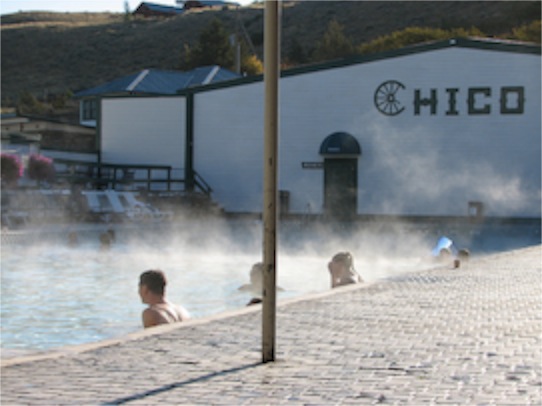 Chico was also a frequent place for church meetings. Back when the Montana Conference of the United Church of Christ held regular educator’s meetings, there was an annual retreat for Church educators held at Chico for several years. The Conference board would occasionally meet there. Special events with speakers from outside of the state also were held in that location. Our camp, Mimanagish, was a summer-only camp. The last 20 or so miles of the road weren’t plowed and the only access was by snowmobile. But Chico is open year-round and made a good gathering place.
Chico was also a frequent place for church meetings. Back when the Montana Conference of the United Church of Christ held regular educator’s meetings, there was an annual retreat for Church educators held at Chico for several years. The Conference board would occasionally meet there. Special events with speakers from outside of the state also were held in that location. Our camp, Mimanagish, was a summer-only camp. The last 20 or so miles of the road weren’t plowed and the only access was by snowmobile. But Chico is open year-round and made a good gathering place.
In those days, however, Chico was dry. They didn’t have a license to serve alcohol. There were differing perspectives on the situation. For my folks, who didn’t drink, it made Chico a great place for family gatherings and church events. For others, there was a desire to sip a glass of wine or drink a beer and no way to satisfy that desire.
There was one good option for church meetings: Hop into the car for the short drive to the Pray bar. You could tell your colleagues that you were going out to Pray and not be lying. Besides, everyone knew what “going to Pray” meant. Some Christians go to Pray a lot.
The stories, like the song, float around in my mind, but they are of another time and another place.
 I don’t know if you could earn back an investment of over a million dollars by running a business out of Pray. It has been a long time since the main road from Livingston to Yellowstone Park was built on the other side of the river. Pray is on an older secondary road and doesn’t get much traffic these days. People heading for the park never know that it is there. I suppose that a well-run and well-advertised bed and breakfast would see a lot of guests in the summer and a few in the winter. There are no downhill ski resorts in the Yellowstone Valley, but it is a great area for hunting, cross-country skiing and other activities and Yellowstone Park is gorgeous in the winter. They keep the road from Mammoth to Cook City plowed, including access to Tower Falls. You can see bighorn sheep, deer, elk, buffalo, coyotes, wolves, antelope and a lot of other game. The hot springs are dramatic in the winter. It is a great place to visit. But most folks will speed by on the opposite side of the valley on the modern highway. The old road is too windy and slow and it can be treacherous in the winter when it gets icy.
I don’t know if you could earn back an investment of over a million dollars by running a business out of Pray. It has been a long time since the main road from Livingston to Yellowstone Park was built on the other side of the river. Pray is on an older secondary road and doesn’t get much traffic these days. People heading for the park never know that it is there. I suppose that a well-run and well-advertised bed and breakfast would see a lot of guests in the summer and a few in the winter. There are no downhill ski resorts in the Yellowstone Valley, but it is a great area for hunting, cross-country skiing and other activities and Yellowstone Park is gorgeous in the winter. They keep the road from Mammoth to Cook City plowed, including access to Tower Falls. You can see bighorn sheep, deer, elk, buffalo, coyotes, wolves, antelope and a lot of other game. The hot springs are dramatic in the winter. It is a great place to visit. But most folks will speed by on the opposite side of the valley on the modern highway. The old road is too windy and slow and it can be treacherous in the winter when it gets icy.
On the other hand, if I had the money, I might be tempted to place a bid on Pray. It would be fun to appoint myself mayor. I would never tire of inviting people to “Come to Pray.” Then, again, I get to do that in my current lifestyle.
Yesterday, I had the song, “Don to the River to Pray” in my head all day long:
As I went down in the river to pray
Studying about that good ol’ way
And who shall wear the starry crown?
Good Lord show me the way!
O sisters let’s go down
Let’s go down, come on down
O sisters let’s go down
Down in the river to pray
The other verses are all a variation on the theme. One asks, “Who shall wear the rob & crown?” And the choruses go through sisters, brothers, mothers and fathers. I think the last chorus is “O sinners.” The tune really sticks with you once you start thinking about it.

If you’ve never been there you might not understand. Pray sits in one of the most beautiful places in the world. Paradise valley is the general name given to the Yellowstone River Valley between Gardiner and Livingston, Montana. The river is the best of blue ribbon trout fishing, wonderful for canoeing, rafting, drift boating or just floating down on an inner tube. Be advised, however, the water is cold. It is coming straight from Yellowstone Lake, over the falls of the Yellowstone and out into the broader valley. The valley is rimmed with beautiful mountains, including Emigrant Peak. At 10,921 feet, we often flew around it when we were heading through the country in light airplanes. The valley floor ranges from 4,000 to 5,000 feet, so the peaks are dramatic and beautiful.

Now, if the price is right on June 27, the town of Pray will be sold at auction.
Pray is just 3 miles from Chico Hot Springs. Back in the 1960’s and 1970’s the old hotel and resort at Chico was getting a bit run down. The swimming pool was still a lot of fun and there was a large area with even warmer water for sitting. We used to love to go to Chico in the winter. You could warm up in the pool, get out and roll in the snow and then get back into the pool. The warm water would make your skin tingle. It was worth doing over and over again. The steam rising off of the hot water made the entire place seem like it was shrouded in mystery. Often you could look through the steam to the crystal clear blue sky above and the mountains towering over the valley. The prices at Chico were reasonable and the food was good in those days. We had several family gatherings there.

In those days, however, Chico was dry. They didn’t have a license to serve alcohol. There were differing perspectives on the situation. For my folks, who didn’t drink, it made Chico a great place for family gatherings and church events. For others, there was a desire to sip a glass of wine or drink a beer and no way to satisfy that desire.
There was one good option for church meetings: Hop into the car for the short drive to the Pray bar. You could tell your colleagues that you were going out to Pray and not be lying. Besides, everyone knew what “going to Pray” meant. Some Christians go to Pray a lot.
The stories, like the song, float around in my mind, but they are of another time and another place.

On the other hand, if I had the money, I might be tempted to place a bid on Pray. It would be fun to appoint myself mayor. I would never tire of inviting people to “Come to Pray.” Then, again, I get to do that in my current lifestyle.
Copyright © 2012 by Ted Huffman. I wrote this. If you want to copy it, please ask for permission. There is a contact me button at the bottom of this page. If you want to share my blog a friend, please direct your friend to my web site.
Watching from a distance
13/06/12 05:56
According to the professional foresters, fire is a normal part of forest ecology. Those who have studied the cycles of life and rebirth in the forest know that there have always been fires in wooded areas. The fires clean up downed timber, inset-killed trees, and other fuels. They open up meadows for animal habitat. They burn in mosaic patterns that encourage the forest to have trees of many different ages growing in proximity to one another.
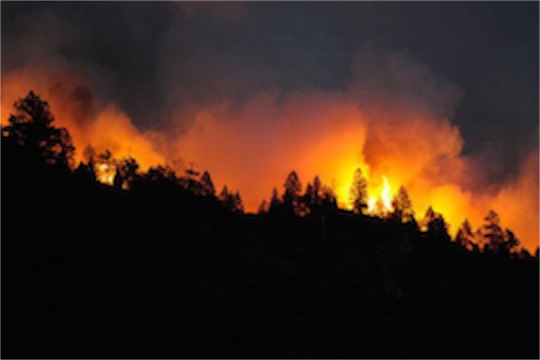 There has been a lot learned about fires in the span of my life. When I was younger, fire was always seen as the enemy. My father flew thousands of hours in a light airplane over the Gallatin National Forest and Yellowstone National Park, looking for smoke plumes, trying to locate fires before they got big. As soon as a fire was detected, crews were dispatched to put it out as soon as possible. They were remarkable effective in keeping fires from spreading.
There has been a lot learned about fires in the span of my life. When I was younger, fire was always seen as the enemy. My father flew thousands of hours in a light airplane over the Gallatin National Forest and Yellowstone National Park, looking for smoke plumes, trying to locate fires before they got big. As soon as a fire was detected, crews were dispatched to put it out as soon as possible. They were remarkable effective in keeping fires from spreading.
Then in 1988 and 1989, huge fires swept through Yellowstone National Park. The 1988 fire grew too big to be fought. It was finally extinguished by October snows. It was as if all of the stored energy of all of the previous fires that had been fought was combined into a giant unstoppable fire.
Fire is now seen as a useful forest management tool. Prescribed burns are ignited when conditions are right to help the forest recover balance and health. But fire is unpredictable. Controversy has arisen when prescribed burns have gotten out of control and spread to unintended places.
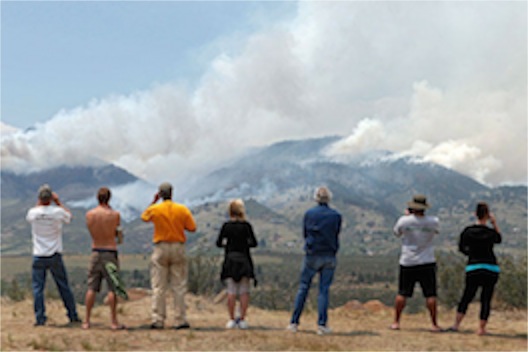 The theory of fire management, however, is not what people want to discuss when their homes are threatened or burned by wildfire. The High Park Fire now has destroyed 118 structures and the Larimer County Sheriff’s Office reported that a 62-year old woman died when she refused to leave her mountain cabin.
The theory of fire management, however, is not what people want to discuss when their homes are threatened or burned by wildfire. The High Park Fire now has destroyed 118 structures and the Larimer County Sheriff’s Office reported that a 62-year old woman died when she refused to leave her mountain cabin.
It is a really huge and aggressive fire. The Incident Information Web Site shows the fire has burned 43,372 acres as of 8 hours ago. That is just under 68 square miles. And the Interagency Fire Center has a lot of big fires going at the same time. The Honey Prairie Fire Complex in the Okefenokee National Wildlife Refuge in Georgia has scorched 309,200 acres. The Whitewater-Baldy Complex in New Mexico continues to grow at 280,075 acres. 438 square miles of fire is a lot of fire. In many western states, there are multiple fires burning at the same time. According to the Incident Information Web Site, there are 10 active fires in Arizona, 5 in Colorado, 22 in Idaho, 7 in Montana, 4 in New Mexico, 2 in Utah and 3 in Washington. The site does not show any active fires in South Dakota at the moment. We have had some heavy rains with the storms of the past few weeks and the hills are not as dry as we had feared in May.
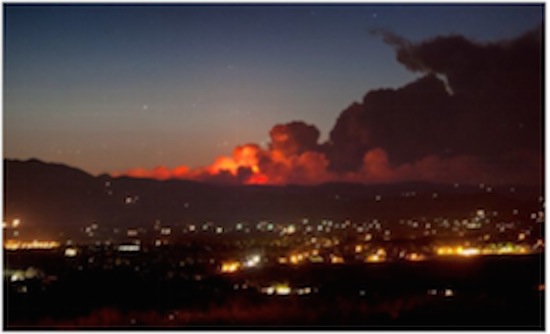 We don’t tend to think in terms of the big picture very often, especially when our homes are threatened. Instead of thinking of the nature of the forests, the ecology of fire, the distribution of resources among federal and state agencies, people think about their own home when fire threatens. It is natural to work hard to defend one’s home in any way that can be done. But when the big fires come about all a homeowner can do is to evacuate and watch from a safe distance. The hopes and dreams of decades become subject to the direction of the wind.
We don’t tend to think in terms of the big picture very often, especially when our homes are threatened. Instead of thinking of the nature of the forests, the ecology of fire, the distribution of resources among federal and state agencies, people think about their own home when fire threatens. It is natural to work hard to defend one’s home in any way that can be done. But when the big fires come about all a homeowner can do is to evacuate and watch from a safe distance. The hopes and dreams of decades become subject to the direction of the wind.
The Forest Service is scrambling to get air tankers into service. There are now 13 of the big planes working fires, with another in transit from Alaska, two nearing completion in California and four tankers from Canada on their way. But wind, weather and smoke conditions determine how the tankers can be deployed to drop retardant.
The really big fires, however, command lots of resources. Hundreds of firefighters, dozens and dozens of trucks, even a half dozen tankers can be dispatched to a single fire and the fire will continue to grow when the winds and weather are right. The woods are filled with fuel and once the fire burns out of control it is very difficult to stop its spread regardless of how many resources are available. Sometimes on the big fires so much equipment and so many personnel are dispatched that the firefighting efforts become crowded and inefficient. Not every problem can be solved by throwing more money and resources at it.
The dynamic for the homeowners is an emotional roller coaster. They try to determine where the fire is burning and how close it might be coming to their homes. Reports of which homes have burned and which have been spared come only after the fire has moved away from a particular area. As they watch the homeowners know they need to be prepared for the possibility of losing their homes. Even if their homes are spared, there will be a dramatic change in the scenery. A view of acres of fire scar is quite different from the forested beauty that attracted them to live in a particular location.
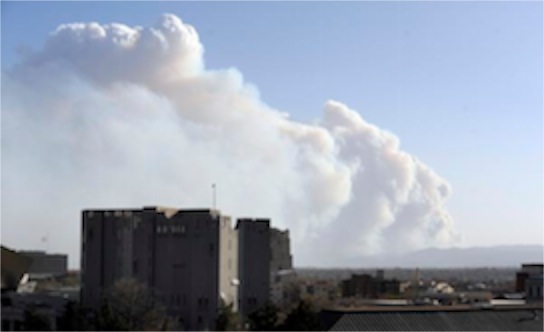 Downwind, Denver has been shrouded in smoke. People with severe allergies, asthma, and other breathing disorders are being advised to stay indoors and protect themselves. The Eastern Slopes of the Colorado Rockies are heavily populated. There will be a lot of people affected whose homes are not immediately threatened.
Downwind, Denver has been shrouded in smoke. People with severe allergies, asthma, and other breathing disorders are being advised to stay indoors and protect themselves. The Eastern Slopes of the Colorado Rockies are heavily populated. There will be a lot of people affected whose homes are not immediately threatened.
Some of us sit in our homes at the edge of the forest and know that our turn may come one day. When people live in forests, fire is always a possibility. So we watch and wait and pray and think about the people who live in other areas. And we remember and talk about the fires that have burned in the hills and the times when we watched the smoke plumes and the nightglow of the flames.
So add the families who wait and watch to your prayer list. May they find community in the support of others. May they continue to stay safe. And, when the fires have been extinguished, may they find courage and strength for rebuilding.

Then in 1988 and 1989, huge fires swept through Yellowstone National Park. The 1988 fire grew too big to be fought. It was finally extinguished by October snows. It was as if all of the stored energy of all of the previous fires that had been fought was combined into a giant unstoppable fire.
Fire is now seen as a useful forest management tool. Prescribed burns are ignited when conditions are right to help the forest recover balance and health. But fire is unpredictable. Controversy has arisen when prescribed burns have gotten out of control and spread to unintended places.

It is a really huge and aggressive fire. The Incident Information Web Site shows the fire has burned 43,372 acres as of 8 hours ago. That is just under 68 square miles. And the Interagency Fire Center has a lot of big fires going at the same time. The Honey Prairie Fire Complex in the Okefenokee National Wildlife Refuge in Georgia has scorched 309,200 acres. The Whitewater-Baldy Complex in New Mexico continues to grow at 280,075 acres. 438 square miles of fire is a lot of fire. In many western states, there are multiple fires burning at the same time. According to the Incident Information Web Site, there are 10 active fires in Arizona, 5 in Colorado, 22 in Idaho, 7 in Montana, 4 in New Mexico, 2 in Utah and 3 in Washington. The site does not show any active fires in South Dakota at the moment. We have had some heavy rains with the storms of the past few weeks and the hills are not as dry as we had feared in May.

The Forest Service is scrambling to get air tankers into service. There are now 13 of the big planes working fires, with another in transit from Alaska, two nearing completion in California and four tankers from Canada on their way. But wind, weather and smoke conditions determine how the tankers can be deployed to drop retardant.
The really big fires, however, command lots of resources. Hundreds of firefighters, dozens and dozens of trucks, even a half dozen tankers can be dispatched to a single fire and the fire will continue to grow when the winds and weather are right. The woods are filled with fuel and once the fire burns out of control it is very difficult to stop its spread regardless of how many resources are available. Sometimes on the big fires so much equipment and so many personnel are dispatched that the firefighting efforts become crowded and inefficient. Not every problem can be solved by throwing more money and resources at it.
The dynamic for the homeowners is an emotional roller coaster. They try to determine where the fire is burning and how close it might be coming to their homes. Reports of which homes have burned and which have been spared come only after the fire has moved away from a particular area. As they watch the homeowners know they need to be prepared for the possibility of losing their homes. Even if their homes are spared, there will be a dramatic change in the scenery. A view of acres of fire scar is quite different from the forested beauty that attracted them to live in a particular location.

Some of us sit in our homes at the edge of the forest and know that our turn may come one day. When people live in forests, fire is always a possibility. So we watch and wait and pray and think about the people who live in other areas. And we remember and talk about the fires that have burned in the hills and the times when we watched the smoke plumes and the nightglow of the flames.
So add the families who wait and watch to your prayer list. May they find community in the support of others. May they continue to stay safe. And, when the fires have been extinguished, may they find courage and strength for rebuilding.
Copyright © 2012 by Ted Huffman. I wrote this. If you want to copy it, please ask for permission. There is a contact me button at the bottom of this page. If you want to share my blog a friend, please direct your friend to my web site.
The Work of Prayer
12/06/12 05:37
If you spend time with the indigenous people of the plains, you will soon discover that the relationship between American Indians and the church is complex. The first missionaries who came to the plains came with the best of intentions. They sought to share the Gospel with people who had not heard of the Christian religion and tradition. In stark contrast to many European settlers who saw Native people as “savage” or “uncivilized,” the Christian missionaries saw them as people. They sought to serve those people by bringing them education, faith, and health care. They also unwittingly brought a level of cultural ignorance that resulted in complicity with some of the more destructive programs of the government including boarding schools. Not all the results of Christians among the Plains Indians were positive. But as the churches of the reservations celebrate their centennials, with some having served even longer, the relationship is long and deep.
 The great chief Sitting Bull requested that missionaries be sent to the area around Standing Rock. He was aware that the ways of his people were changing. The first Benedictine monks came to the Dakotas in 1876. They established schools and served as teachers. Along with the basics of education, they taught the English language, European cultural traditions and the Christian religion. The monks lived in community, establishing their homes wherever they could, sometimes staying in temporary structures such as tents, sometimes staying in more established places.
The great chief Sitting Bull requested that missionaries be sent to the area around Standing Rock. He was aware that the ways of his people were changing. The first Benedictine monks came to the Dakotas in 1876. They established schools and served as teachers. Along with the basics of education, they taught the English language, European cultural traditions and the Christian religion. The monks lived in community, establishing their homes wherever they could, sometimes staying in temporary structures such as tents, sometimes staying in more established places.
More than 60 years after arriving in the Dakotas, some of the monks established an Abbey near Martin, SD. They named it Blue Cloud after Chief Blue Cloud. They began by purchasing land and living in a barn. Over the years various buildings were constructed and they established hermitages, a retreat center, a summer camp, and an American Indian Culture Research Center. The monks continued to live simply, making prayer their primary vocation, but balancing it with other work and leisure activities.
 Blue Cloud became a place for religious people of all denominations and vocations to come to experience the warm hospitality of the Benedictine monks and to engage in the prayer life of the community. Retreats and pilgrimages provided spiritual renewal for pastors and laypersons alike.
Blue Cloud became a place for religious people of all denominations and vocations to come to experience the warm hospitality of the Benedictine monks and to engage in the prayer life of the community. Retreats and pilgrimages provided spiritual renewal for pastors and laypersons alike.
There were a lot of abbeys built in the 1950’s and ‘60’s. The church was experiencing growth in the United States following the Second World War. The Baby Boom children were being taken to church by their parents. Mainline Protestant and Catholic churches were growing by leaps and bounds and many church leaders envisioned continual growth. But that is not how things work. Unending growth in a finite world is not sustainable.
 We know how much the world has changed. The population of the Dakotas is shrinking as mechanized agriculture means that it requires fewer and fewer people to farm the land. Small towns are shrinking and fading away. There are fewer people. And of those people fewer and fewer participate in church activities. Less than half of the people in the Dakotas today regularly participate in life. South Dakota leads the nation in decrease in church activity with a decline of about 3% each year. That means that each year the percentage of South Dakotans who participate in church decreases by 3%. It is projected that within a decade, less than 25% of South Dakotans will participate in any church on a regular basis.
We know how much the world has changed. The population of the Dakotas is shrinking as mechanized agriculture means that it requires fewer and fewer people to farm the land. Small towns are shrinking and fading away. There are fewer people. And of those people fewer and fewer participate in church activities. Less than half of the people in the Dakotas today regularly participate in life. South Dakota leads the nation in decrease in church activity with a decline of about 3% each year. That means that each year the percentage of South Dakotans who participate in church decreases by 3%. It is projected that within a decade, less than 25% of South Dakotans will participate in any church on a regular basis.
The world is changing and the church has always found ways to change with the circumstances of the world.
Still, it was sad to hear yesterday the announcement of the closing of Blue Cloud Abbey. The monks have known that this announcement was coming for some time, but it required prayer and conversation within the community before it was time to make the announcement public. The decision was practical. The community at Blue Cloud had shrunk to 14 monks. Three are in their 90’s, two in their eighties and seven in their seventies. The two “young” monks are in their 40’s and 50’s. The formal closure of the Abbey will take place on August 5, 2012. Each monk of the monastery will move into another monastery of his choice. Sixty-two years of mission and ministry in that place will come to a close.
In the church we do not measure success or failure by the standards of the world. We do not aspire to become wealthy or powerful. We do not count faithfulness by numbers of people or amounts of dollars. We know that sometimes God calls us to serve in places that are difficult.
Being a resurrection people means that we sometimes have to face death squarely and honestly. This doesn’t make it easy. It does, however, remind us that we belong to something much bigger than the span of a single human life.
From a business perspective, you might say that Blue Cloud Abbey was a failure. A large amount of money was invested in creating a specific kind of place for prayer and retreat. It flourished in the beginning and then began a slow decline that eventually led to its closure. The assets of the monastery will never be fully recovered. Potential customers for the space are few and far between. The money received from the sale of the land and buildings will be far less than the amount invested. It will be enough to provide for the 14 remaining monks and to leave the majority to be donated to other mission and ministry, but businesspeople see all losses as failure.
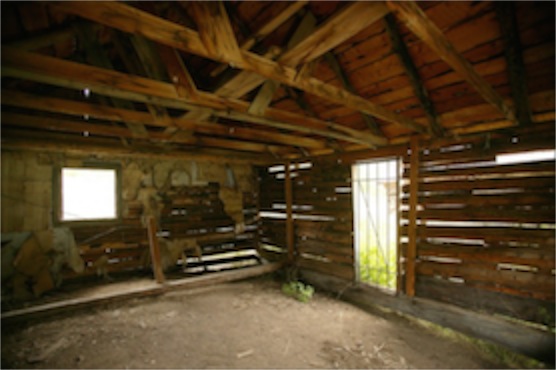 We do not. The world saw the crucifixion of Jesus as a failure. His active preaching ministry lasted about three years and ended with betrayal, abandonment, confusion and death. We, who follow Jesus, know that we belong to something much bigger than any particular building, something much greater than any particular institution. The buildings and institutional structures created by humans will come and go. The love of God is forever.
We do not. The world saw the crucifixion of Jesus as a failure. His active preaching ministry lasted about three years and ended with betrayal, abandonment, confusion and death. We, who follow Jesus, know that we belong to something much bigger than any particular building, something much greater than any particular institution. The buildings and institutional structures created by humans will come and go. The love of God is forever.
So I add my prayers to the prayers of the monks at Blue Cloud Abbey. I know that when all of the monks have moved, when the buildings are empty, when the retreats have ceased, when the campfire has gone cold and the lights have been turned out, the prayers will continue. The work of prayer and praise is the center of the Benedictine life. They’ve been observing their way of prayer for over 1500 years.
I have no doubt that the prayers will continue for thousands of years more.

More than 60 years after arriving in the Dakotas, some of the monks established an Abbey near Martin, SD. They named it Blue Cloud after Chief Blue Cloud. They began by purchasing land and living in a barn. Over the years various buildings were constructed and they established hermitages, a retreat center, a summer camp, and an American Indian Culture Research Center. The monks continued to live simply, making prayer their primary vocation, but balancing it with other work and leisure activities.

There were a lot of abbeys built in the 1950’s and ‘60’s. The church was experiencing growth in the United States following the Second World War. The Baby Boom children were being taken to church by their parents. Mainline Protestant and Catholic churches were growing by leaps and bounds and many church leaders envisioned continual growth. But that is not how things work. Unending growth in a finite world is not sustainable.

The world is changing and the church has always found ways to change with the circumstances of the world.
Still, it was sad to hear yesterday the announcement of the closing of Blue Cloud Abbey. The monks have known that this announcement was coming for some time, but it required prayer and conversation within the community before it was time to make the announcement public. The decision was practical. The community at Blue Cloud had shrunk to 14 monks. Three are in their 90’s, two in their eighties and seven in their seventies. The two “young” monks are in their 40’s and 50’s. The formal closure of the Abbey will take place on August 5, 2012. Each monk of the monastery will move into another monastery of his choice. Sixty-two years of mission and ministry in that place will come to a close.
In the church we do not measure success or failure by the standards of the world. We do not aspire to become wealthy or powerful. We do not count faithfulness by numbers of people or amounts of dollars. We know that sometimes God calls us to serve in places that are difficult.
Being a resurrection people means that we sometimes have to face death squarely and honestly. This doesn’t make it easy. It does, however, remind us that we belong to something much bigger than the span of a single human life.
From a business perspective, you might say that Blue Cloud Abbey was a failure. A large amount of money was invested in creating a specific kind of place for prayer and retreat. It flourished in the beginning and then began a slow decline that eventually led to its closure. The assets of the monastery will never be fully recovered. Potential customers for the space are few and far between. The money received from the sale of the land and buildings will be far less than the amount invested. It will be enough to provide for the 14 remaining monks and to leave the majority to be donated to other mission and ministry, but businesspeople see all losses as failure.

So I add my prayers to the prayers of the monks at Blue Cloud Abbey. I know that when all of the monks have moved, when the buildings are empty, when the retreats have ceased, when the campfire has gone cold and the lights have been turned out, the prayers will continue. The work of prayer and praise is the center of the Benedictine life. They’ve been observing their way of prayer for over 1500 years.
I have no doubt that the prayers will continue for thousands of years more.
Copyright © 2012 by Ted Huffman. I wrote this. If you want to copy it, please ask for permission. There is a contact me button at the bottom of this page. If you want to share my blog a friend, please direct your friend to my web site.
Taking in the world
11/06/12 05:11
Somehow, I never developed a taste for science fiction. I’ve read a few novels of the genre, but seem to prefer other books for my casual reading. I’m not a big fan of television or of the movies, so I haven’t seen very many of the great science fiction movies that have been produced. Still, I think I appreciate science fiction. Just because it isn’t my choice for my free time doesn’t mean that I can’t see its value.
Some people think that science fiction is relatively accurate at predicting the future. The imaginative novelist Ray Bradbury, who recently passed away at the age of 91, wrote of several things that later came to be true. He describes a world where people are obsessed with their flat screens, where the news has a short attention span and where there is increased surveillance – in short, his novels describe a world very much like the one in which we live today. Bradbury and other writers of the genre often explore not only the devices and gadgets of the future, but the inner workings of human relationships. I think that one of the appeals of science fiction is the simple fact that it explores issues that matter to people like social isolation, the power of government, and the manipulative trends of news media.
 I am pretty sure that I wouldn’t have any gift for writing science fiction. Every time I try to imagine the future, I am either really far from what occurs or I am describing something that has already happened. When I was younger, I was absolutely convinced that we would all use private airplanes as our primary method of transportation. That one doesn’t seem to be on the horizon. I also believed that space travel would be common for everyday people. I fully expected that I would have the opportunity to travel in space, at least to near objects such as the moon. It doesn’t seem like either of those predictions will come to pass anytime soon.
I am pretty sure that I wouldn’t have any gift for writing science fiction. Every time I try to imagine the future, I am either really far from what occurs or I am describing something that has already happened. When I was younger, I was absolutely convinced that we would all use private airplanes as our primary method of transportation. That one doesn’t seem to be on the horizon. I also believed that space travel would be common for everyday people. I fully expected that I would have the opportunity to travel in space, at least to near objects such as the moon. It doesn’t seem like either of those predictions will come to pass anytime soon.
On the other hand, were I to write about how people behave in the future, I might focus on personal communications devices such as portable wireless phones with small devices that could be inserted into the ear for hands free communication or homes wired with remotes for everything from turning on and off the lights to opening and closing the blinds. I might be tempted to write about hidden surveillance cameras in gas stations and grocery stores or devices that allowed individuals to watch movies whenever and wherever they wanted. None of these things belong to the future – they surround us every day.
The world as it is seems to me to be a sort of science fiction story every day. I learned to type on a manual typewriter. There were no computers in my high school and only a couple of electric typewriters. The cell phone in my pocket has more computing power than the computer that occupied an entire basement at the state university when I was in college. That device was far to expensive for the small liberal arts college I attended to afford. Scientific advances and world-changing events are so common that I don’t seem to need fiction to have a sense of a futuristic society.
 I remember some of my early experiences with walls that were totally covered with televisions. It used to be a relatively common marketing technique for a large electronics store to line up a large number of televisions on shelves on the wall and turn them all on at the same time. I guess this was to enable customers to compare image quality. The practice is not as common as it was a few years ago simply because the screens on the televisions are getting bigger and bigger. At any rate, I remember walking into an electronics superstore in Portland Oregon and having a sensation that was similar to vertigo. There were so many moving images that my brain couldn’t figure out where to focus. The motion of the images on the screen was overwhelming. I felt a little bit queasy. I simply couldn’t take it all in.
I remember some of my early experiences with walls that were totally covered with televisions. It used to be a relatively common marketing technique for a large electronics store to line up a large number of televisions on shelves on the wall and turn them all on at the same time. I guess this was to enable customers to compare image quality. The practice is not as common as it was a few years ago simply because the screens on the televisions are getting bigger and bigger. At any rate, I remember walking into an electronics superstore in Portland Oregon and having a sensation that was similar to vertigo. There were so many moving images that my brain couldn’t figure out where to focus. The motion of the images on the screen was overwhelming. I felt a little bit queasy. I simply couldn’t take it all in.
I have heard the experience described as “sensory overload.”
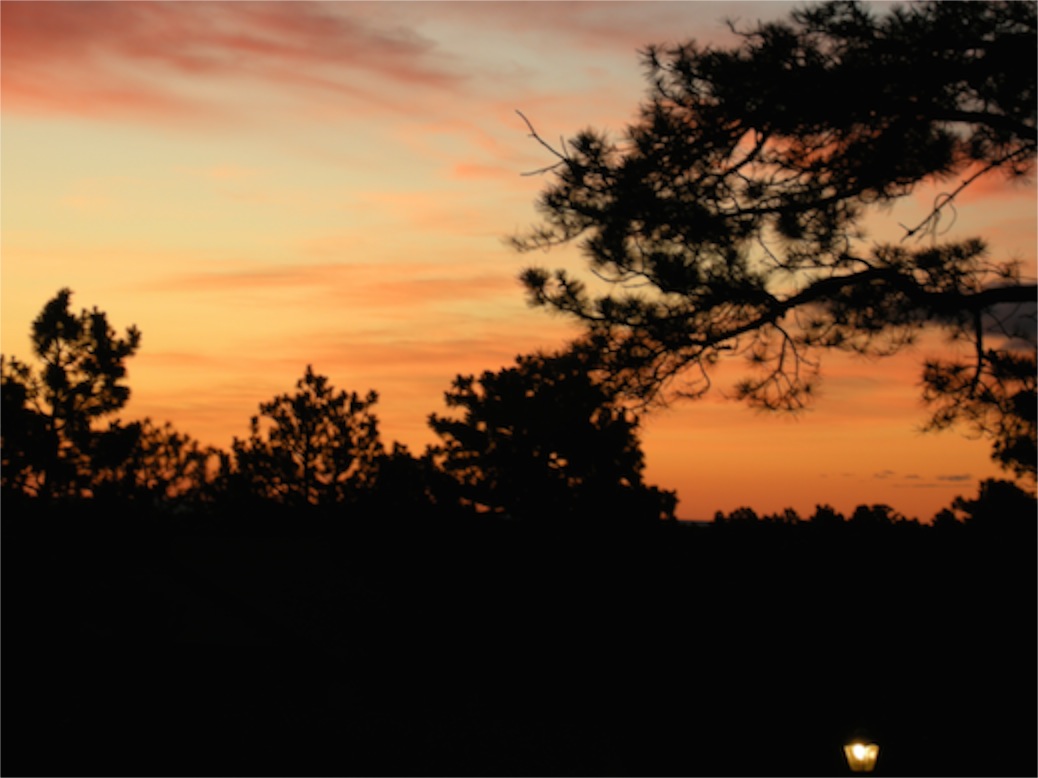
It doesn’t take a roomful of electronic devices for my senses to be filled. A few minutes ago I stepped out of the house into the sunrise. My bare feet could feel the chilly dampness of the grass underneath and between my toes. My ears were straining to distinguish individual calls from the songs of hundreds of birds greeting the sunrise. My eyes caught the bright yellow-orange-pink of the predawn glow on the east, spreading to the north. But I could also make out the needles on the trees. I took a picture, but the camera, a modern digital device, couldn’t see as much as I. I have a wider field of vision. And my eyes could see in a wider range of light. The camera had to either wash out the colors of the sky, or turn the foreground into black silhouettes. My brain was sorting out many different smells. Wet pine trees have a wonderful aroma, but I could also smell the distinctive savor of blooming marigolds and the loamy smell of the cedar mulch. The sage in the neighbor’s back yard came to my mind as well along with a thousand different smells that I have yet to identify. The chill of the breeze surrounded my body. My senses were working overtime. I wasn’t connected to any electronic device.
 I think that too often people who are totally wired aren’t really overloaded, but rather that they fail to take in so much of the world that surrounds them. Instead of sensory overload, they may be experiencing sensory poverty. I watch people walking on the greenbelt with their ear buds plugged in. I’ve done it before. I can listen to a radio program or podcast and get exercise at the same time. But it drives me nuts to try to walk on a treadmill in a health club. The blaring televisions distract me far too much. The best way to walk for me is outside where I can’t control the temperature and where the television is left behind.
I think that too often people who are totally wired aren’t really overloaded, but rather that they fail to take in so much of the world that surrounds them. Instead of sensory overload, they may be experiencing sensory poverty. I watch people walking on the greenbelt with their ear buds plugged in. I’ve done it before. I can listen to a radio program or podcast and get exercise at the same time. But it drives me nuts to try to walk on a treadmill in a health club. The blaring televisions distract me far too much. The best way to walk for me is outside where I can’t control the temperature and where the television is left behind.
I think that constantly connected people who never stray from their devices may, in fact be experiencing sensory deprivation. They listen to only one sound when they are surrounded by thousands of melodies. They look at only a small screen when the world surrounds them with ultra-wide screen vistas.
I suspect that multi tasking is just another way of saying: “not paying attention.”
I love stories. But I don’t seem to need science fiction. The real world is exciting enough for me.
Some people think that science fiction is relatively accurate at predicting the future. The imaginative novelist Ray Bradbury, who recently passed away at the age of 91, wrote of several things that later came to be true. He describes a world where people are obsessed with their flat screens, where the news has a short attention span and where there is increased surveillance – in short, his novels describe a world very much like the one in which we live today. Bradbury and other writers of the genre often explore not only the devices and gadgets of the future, but the inner workings of human relationships. I think that one of the appeals of science fiction is the simple fact that it explores issues that matter to people like social isolation, the power of government, and the manipulative trends of news media.

On the other hand, were I to write about how people behave in the future, I might focus on personal communications devices such as portable wireless phones with small devices that could be inserted into the ear for hands free communication or homes wired with remotes for everything from turning on and off the lights to opening and closing the blinds. I might be tempted to write about hidden surveillance cameras in gas stations and grocery stores or devices that allowed individuals to watch movies whenever and wherever they wanted. None of these things belong to the future – they surround us every day.
The world as it is seems to me to be a sort of science fiction story every day. I learned to type on a manual typewriter. There were no computers in my high school and only a couple of electric typewriters. The cell phone in my pocket has more computing power than the computer that occupied an entire basement at the state university when I was in college. That device was far to expensive for the small liberal arts college I attended to afford. Scientific advances and world-changing events are so common that I don’t seem to need fiction to have a sense of a futuristic society.

I have heard the experience described as “sensory overload.”

It doesn’t take a roomful of electronic devices for my senses to be filled. A few minutes ago I stepped out of the house into the sunrise. My bare feet could feel the chilly dampness of the grass underneath and between my toes. My ears were straining to distinguish individual calls from the songs of hundreds of birds greeting the sunrise. My eyes caught the bright yellow-orange-pink of the predawn glow on the east, spreading to the north. But I could also make out the needles on the trees. I took a picture, but the camera, a modern digital device, couldn’t see as much as I. I have a wider field of vision. And my eyes could see in a wider range of light. The camera had to either wash out the colors of the sky, or turn the foreground into black silhouettes. My brain was sorting out many different smells. Wet pine trees have a wonderful aroma, but I could also smell the distinctive savor of blooming marigolds and the loamy smell of the cedar mulch. The sage in the neighbor’s back yard came to my mind as well along with a thousand different smells that I have yet to identify. The chill of the breeze surrounded my body. My senses were working overtime. I wasn’t connected to any electronic device.

I think that constantly connected people who never stray from their devices may, in fact be experiencing sensory deprivation. They listen to only one sound when they are surrounded by thousands of melodies. They look at only a small screen when the world surrounds them with ultra-wide screen vistas.
I suspect that multi tasking is just another way of saying: “not paying attention.”
I love stories. But I don’t seem to need science fiction. The real world is exciting enough for me.
Copyright © 2012 by Ted Huffman. I wrote this. If you want to copy it, please ask for permission. There is a contact me button at the bottom of this page. If you want to share my blog a friend, please direct your friend to my web site.
40 years later
10/06/12 05:23
40 years ago today, the people of Rapid City woke to scenes of amazing destruction. During the night of June 9 – 10, 1972 one of the deadliest flash floods in history roared through the city. When they were able to count, the numbers were staggering. 238 people had died. 5 of the victims were never recovered. Among the rescuers who were lost in the attempt to save others were 3 national guardsmen, 3 firefighters, 7 airmen from Ellsworth Air Force Base, 1 police reserve officer and others who attempted to lend a hand to the victims. 565 mobile homes were destroyed 770 permanent homes were destroyed. Thousands of homes were damaged. Over 5,000 vehicles were destroyed.
 I wasn’t there, though I did visit after the flood and see the parking lots full of destroyed vehicles awaiting transport away from the city, the mountains of mud in many places, the houses transported to unusual locations, the debris, the paint marks on buildings showing that they had been searched for bodies. It was grim. It showed the power of natural disaster.
I wasn’t there, though I did visit after the flood and see the parking lots full of destroyed vehicles awaiting transport away from the city, the mountains of mud in many places, the houses transported to unusual locations, the debris, the paint marks on buildings showing that they had been searched for bodies. It was grim. It showed the power of natural disaster.
I’ve lived in Rapid City since before the 25th anniversary, and each anniversary brings a few more stories. Our library serves as an official place to collect the stories of the survivors and the Journey Museum has an excellent display on the flood. This year’s anniversary has sparked a radio series, a series of articles in the newspaper public commemoration events and other activities that spark memories.

I was thinking of the flood and its victims as I approached Rapid City last night. I was coming into town from the East. At about 9:30, as I drove past Wall, I could see the dark storm clouds. The lightning was putting on quite a light show all across the hills. I knew I was driving into a storm of some force, but I wanted to get home and there was a steady stream of cars heading east, so I knew others had driven through the storm. It was raining pretty hard at Wall. After I passed the second Wall exit, the hail started. There weren’t any exits for quite a few miles so I slowed down, but kept going. I’ve been caught out in the hail before. I know how loud it sounds on the roof of a vehicle. Fortunately, I reminded myself, the pickup I was driving had been hailed upon last year and sported dents from hail much larger than what I was experiencing. I kept checking the size of the hail by looking at the highway in the headlights of the pickup. Pea-sized hail probably won’t take the windshield out of a pickup at 25 miles per hour. I took consolation in the small size of the hail, in having had the experience of being out in hail before, and the fact that the pickup probably wouldn’t suffer too much additional damage. But I also know that I could have been sitting in a café in Wall with my hands wrapped around a hot mug of tea as I waited out the storm had I not been so eager to get home.
Before Wasta, I was out of the hail and had sped up quite a bit, though there were some periods of heavy rain. I was just coming up to Jensen Road when the second wave of hail came. I was able exit and park under the underpass until the hail passed. The third wave of hail, between New Underwood and Box Elder was mild and short-lived and by then I could see the lights of Rapid City.
It wasn’t like that for the victims of the flood. Although they didn’t report hail, they did report the flashes of lightning. The lightning was the only light they could see. The city was dark as electrical systems failed. Their car headlights faded as the engines were flooded and the batteries gave out. Many of them were not outside because they had made poor decisions, but rather because they were forced to flee the floodwaters. Unlike me, heading toward home in conditions I had experienced before, they had nothing in their experience to prepare them for the night that lay ahead. They didn’t know whether or not they would be alive to greet the morning.
Some of the people whose stories I have heard reported that the hardest part of the night was hearing the cries and screams of other victims and not having any way to respond to them. They didn’t have ropes or other rescue equipment. They were stranded by the waters and wondering how to stay alive themselves. As the night wore on the cries faded and there were fewer and fewer screams for help. That was even worse because they could imagine what had happened. In the morning’s light the discovered that it was even worse than they had imagined.
 Those who survived speak of how the flashes of lightning throughout the night illuminated the scenes of destruction. Trees had been ripped from their roots. Houses had been moved from original locations and crushed. Cars had been stacked up on top of each other. Streets looked like rivers. Rooftops and trees held people clinging on for dear life. They were wet, they were cold, they were miserable. And after the brief flash of light they were alone in the dark once again. Except for the screaming. They knew there were others out there.
Those who survived speak of how the flashes of lightning throughout the night illuminated the scenes of destruction. Trees had been ripped from their roots. Houses had been moved from original locations and crushed. Cars had been stacked up on top of each other. Streets looked like rivers. Rooftops and trees held people clinging on for dear life. They were wet, they were cold, they were miserable. And after the brief flash of light they were alone in the dark once again. Except for the screaming. They knew there were others out there.
It was what they call a 500-year flood event. The rumors that Pactola Dam had failed were not true, but water enough to fill the reservoir 14 times over had fallen on the hills. In Keystone over 15 inches of rain fell in 6 hours. One location reported 4 inches in 30 minutes. The dam at Canyon Lake did fail. Contrary to rumors circulating over the next week, none of the crocodiles escaped from Reptile Gardens. There were enough other dangers lurking in the water and the mud.
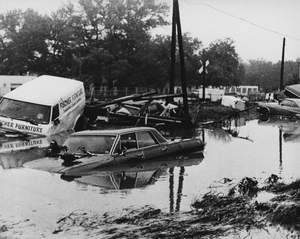 40 years later our city has recovered in many ways. Fortunately we have not forgotten. A 500 year flood doesn’t mean it won’t happen again for five centuries. It means that every year we have a 1 in 500 chance it could happen this year. Remembering is essential to making the kind of plans that will keep people safe the next time the hills are drenched by a huge storm.
40 years later our city has recovered in many ways. Fortunately we have not forgotten. A 500 year flood doesn’t mean it won’t happen again for five centuries. It means that every year we have a 1 in 500 chance it could happen this year. Remembering is essential to making the kind of plans that will keep people safe the next time the hills are drenched by a huge storm.
I was not here, but I have heard the stories. That is close enough for me. An occasional drive through a thundershower is enough to remind me of the power of nature. It is a lesson not to be forgotten.

I’ve lived in Rapid City since before the 25th anniversary, and each anniversary brings a few more stories. Our library serves as an official place to collect the stories of the survivors and the Journey Museum has an excellent display on the flood. This year’s anniversary has sparked a radio series, a series of articles in the newspaper public commemoration events and other activities that spark memories.

I was thinking of the flood and its victims as I approached Rapid City last night. I was coming into town from the East. At about 9:30, as I drove past Wall, I could see the dark storm clouds. The lightning was putting on quite a light show all across the hills. I knew I was driving into a storm of some force, but I wanted to get home and there was a steady stream of cars heading east, so I knew others had driven through the storm. It was raining pretty hard at Wall. After I passed the second Wall exit, the hail started. There weren’t any exits for quite a few miles so I slowed down, but kept going. I’ve been caught out in the hail before. I know how loud it sounds on the roof of a vehicle. Fortunately, I reminded myself, the pickup I was driving had been hailed upon last year and sported dents from hail much larger than what I was experiencing. I kept checking the size of the hail by looking at the highway in the headlights of the pickup. Pea-sized hail probably won’t take the windshield out of a pickup at 25 miles per hour. I took consolation in the small size of the hail, in having had the experience of being out in hail before, and the fact that the pickup probably wouldn’t suffer too much additional damage. But I also know that I could have been sitting in a café in Wall with my hands wrapped around a hot mug of tea as I waited out the storm had I not been so eager to get home.
Before Wasta, I was out of the hail and had sped up quite a bit, though there were some periods of heavy rain. I was just coming up to Jensen Road when the second wave of hail came. I was able exit and park under the underpass until the hail passed. The third wave of hail, between New Underwood and Box Elder was mild and short-lived and by then I could see the lights of Rapid City.
It wasn’t like that for the victims of the flood. Although they didn’t report hail, they did report the flashes of lightning. The lightning was the only light they could see. The city was dark as electrical systems failed. Their car headlights faded as the engines were flooded and the batteries gave out. Many of them were not outside because they had made poor decisions, but rather because they were forced to flee the floodwaters. Unlike me, heading toward home in conditions I had experienced before, they had nothing in their experience to prepare them for the night that lay ahead. They didn’t know whether or not they would be alive to greet the morning.
Some of the people whose stories I have heard reported that the hardest part of the night was hearing the cries and screams of other victims and not having any way to respond to them. They didn’t have ropes or other rescue equipment. They were stranded by the waters and wondering how to stay alive themselves. As the night wore on the cries faded and there were fewer and fewer screams for help. That was even worse because they could imagine what had happened. In the morning’s light the discovered that it was even worse than they had imagined.

It was what they call a 500-year flood event. The rumors that Pactola Dam had failed were not true, but water enough to fill the reservoir 14 times over had fallen on the hills. In Keystone over 15 inches of rain fell in 6 hours. One location reported 4 inches in 30 minutes. The dam at Canyon Lake did fail. Contrary to rumors circulating over the next week, none of the crocodiles escaped from Reptile Gardens. There were enough other dangers lurking in the water and the mud.

I was not here, but I have heard the stories. That is close enough for me. An occasional drive through a thundershower is enough to remind me of the power of nature. It is a lesson not to be forgotten.
Copyright © 2012 by Ted Huffman. I wrote this. If you want to copy it, please ask for permission. There is a contact me button at the bottom of this page. If you want to share my blog a friend, please direct your friend to my web site.
The teenage mind
09/06/12 04:25
For nearly two weeks now, family and authorities have been searching for Justin Lewis, whose 16th birthday was Wednesday. Many believe that the effort at this point will turn out to be the recovery of his body. Hope comes and goes for others. He was dropped off to kayak on Deerfield Lake to kayak on May 28. The next day his kayak was found, filled with water. His unfastened lifejacket was also found.
 We can make up several plausible theories about what happened. Some speculated that the kayak and lifejacket were props in an elaborate runaway scheme. Others imagined that Justin got hot paddling in the wind and waves and paused to take off his jacket, which required removing his lifejacket. In the process the kayak was rolled or swamped by the water. Others speculate that Justin was a typical 15-year-old who lacked sufficient experience with his own mortality to think rationally about safety gear. We may have to face the fact that we will never know exactly what happened.
We can make up several plausible theories about what happened. Some speculated that the kayak and lifejacket were props in an elaborate runaway scheme. Others imagined that Justin got hot paddling in the wind and waves and paused to take off his jacket, which required removing his lifejacket. In the process the kayak was rolled or swamped by the water. Others speculate that Justin was a typical 15-year-old who lacked sufficient experience with his own mortality to think rationally about safety gear. We may have to face the fact that we will never know exactly what happened.
I don’t know if the speculation is of any help to the family. I know it does give searchers some possible leads to explore in their search to find the missing boy. I know that this is a tragedy for our community. I know that these weeks must have been an incredible emotional roller coaster for his family.
Thinking about him just breaks my heart.
The teenage brain is significantly different from the adult brain. We used to suspect this, but prior to functional MRI imaging, we had no way to document this. We simply observed that they thought differently, chose differently, and had less impulse control.
 Interestingly, much of what we know about brain development and impulse control didn’t come from the study of teens. It came from the study of artists. In one breakthrough study, 12 classical pianists were studied by researchers from Harvard University. The researchers rigged up an elaborate system of mirrors that allowed the pianists to play music while lying in an MRI machine so that their brains could be imaged. The researchers were trying to discover the brain activity associated with creativity. What part of the brain allows for improvisation? How does the brain function to create musical expression?
Interestingly, much of what we know about brain development and impulse control didn’t come from the study of teens. It came from the study of artists. In one breakthrough study, 12 classical pianists were studied by researchers from Harvard University. The researchers rigged up an elaborate system of mirrors that allowed the pianists to play music while lying in an MRI machine so that their brains could be imaged. The researchers were trying to discover the brain activity associated with creativity. What part of the brain allows for improvisation? How does the brain function to create musical expression?
Researchers discovered that expert musicians experience a surge of activity in a variety of neural areas including the premotor cortex and the inferior frontal gyrus – areas associated with language and the production of speech. The mental processes used to create music are very similar to those used to create speech. And when the pianists were improvising, the activity in the brain was intense.
The researchers discovered that it wasn’t only what was happening in the brain that influenced the music – it is what wasn’t happening. The musicians were able to effectively silence their inhibitions. The things that normally hold us back from public outbursts seemed to be turned off in the brains of the artists as they performed.
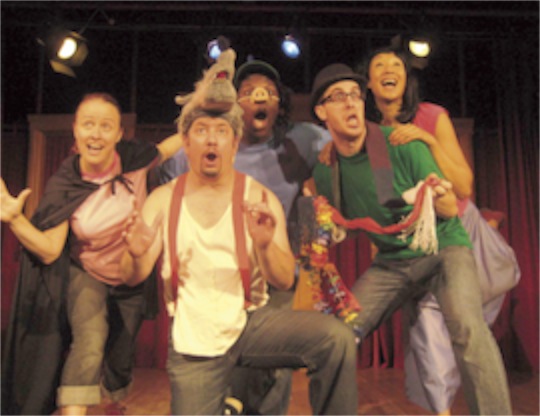 Without the aid of fancy brain scanners, the instructors at the Second City Training Center have learned that comedy demands teaching students to suppress their normal instinct to think before speaking – to self edit their remarks. The tendency to exert self-control must be suppressed. The instructors have, over the years, developed a series of exercises to help the actors to let go of their control in the pursuit of comic moments.
Without the aid of fancy brain scanners, the instructors at the Second City Training Center have learned that comedy demands teaching students to suppress their normal instinct to think before speaking – to self edit their remarks. The tendency to exert self-control must be suppressed. The instructors have, over the years, developed a series of exercises to help the actors to let go of their control in the pursuit of comic moments.
Impulse control is associated with the dorsolateral prefrontal cortex (DLPFC). This area of our brain has many talents that are valued by society. It keeps us from making embarrassing confessions, or grabbing at food, or stealing from a store. It is a neural restraint system that holds us back. Such a system is very valuable for humans. It keeps us from hurling insults at someone who is capable of doing us harm. It reminds us that reckless and random behavior can be risky and even life threatening. It is essential to human survival.
The dorsolateral prefrontal cortex is one of the last areas of the brain to fully develop. We know that it is not yet fully functional in teens. This fact allows for amazing bursts of creativity from these young people. Athletic performance, mathematical genius, musical and artistic talent can blossom in teenage years in ways that are absolutely astounding and literally impossible for older persons.
 The not-fully-formed DLPFC, however, means that teens lack all of the abilities of self-control and impulse control that appear in later life. They literally do not think the way that adults think.
The not-fully-formed DLPFC, however, means that teens lack all of the abilities of self-control and impulse control that appear in later life. They literally do not think the way that adults think.
The same brain functions that allow for the amazing creativity of teens also allow for amazingly self-destructive acts at time.
From Lord of the Flies to The Hunger Games, writers of fiction have speculated on what the world would be like if teens were left to themselves. Most of these fictional accounts end up with surprising amounts of violence and destructive behavior. When we try to imagine a world populated by only teens, our imaginations frighten us. At the core of our being, we know that our world is better when we have a variety of ages of people who work together. Teens are at their best when influenced by adults. We older people are more creative when we are in contact with teens.
The DLPFC can, in fact, be trained. Studies of artists and comedians have shown how people can train their brains to turn off the limiting factors when creating artwork. Studies of the victims of brain injuries and certain forms of brain cancer have shown that creative talents can be enhanced in later life when certain events occur in the DLPFC. This is a very complex way of saying that not only can our teens learn from exposure to adults – the opposite is also true. Adults can learn from spending time with teens.
Our society is not arranged for optimal interaction between teens and adults. We tend to gather teens into large groups in high schools, sporting and music programs and have them work with relatively few adults. Programs of one-on-one mentoring are relatively rare. Many parents of teens spend amazingly little time with their children. The entire society loses in this arrangement. Far more productive for teens and for adults are occasions when teens are integrated fully into activities where adults are also full participants. Internships not only teach young adults, they revitalize companies.
We have a unique opportunity in the church. Our opportunity does not require large numbers of teens. In fact large youth groups tend to isolate youth from the rest of the congregation. Rather we need to discover ways to more fully integrate teens into our life and allow ourselves to be transformed by their presence.
There is still so much that we do not understand.

I don’t know if the speculation is of any help to the family. I know it does give searchers some possible leads to explore in their search to find the missing boy. I know that this is a tragedy for our community. I know that these weeks must have been an incredible emotional roller coaster for his family.
Thinking about him just breaks my heart.
The teenage brain is significantly different from the adult brain. We used to suspect this, but prior to functional MRI imaging, we had no way to document this. We simply observed that they thought differently, chose differently, and had less impulse control.

Researchers discovered that expert musicians experience a surge of activity in a variety of neural areas including the premotor cortex and the inferior frontal gyrus – areas associated with language and the production of speech. The mental processes used to create music are very similar to those used to create speech. And when the pianists were improvising, the activity in the brain was intense.
The researchers discovered that it wasn’t only what was happening in the brain that influenced the music – it is what wasn’t happening. The musicians were able to effectively silence their inhibitions. The things that normally hold us back from public outbursts seemed to be turned off in the brains of the artists as they performed.

Impulse control is associated with the dorsolateral prefrontal cortex (DLPFC). This area of our brain has many talents that are valued by society. It keeps us from making embarrassing confessions, or grabbing at food, or stealing from a store. It is a neural restraint system that holds us back. Such a system is very valuable for humans. It keeps us from hurling insults at someone who is capable of doing us harm. It reminds us that reckless and random behavior can be risky and even life threatening. It is essential to human survival.
The dorsolateral prefrontal cortex is one of the last areas of the brain to fully develop. We know that it is not yet fully functional in teens. This fact allows for amazing bursts of creativity from these young people. Athletic performance, mathematical genius, musical and artistic talent can blossom in teenage years in ways that are absolutely astounding and literally impossible for older persons.

The same brain functions that allow for the amazing creativity of teens also allow for amazingly self-destructive acts at time.
From Lord of the Flies to The Hunger Games, writers of fiction have speculated on what the world would be like if teens were left to themselves. Most of these fictional accounts end up with surprising amounts of violence and destructive behavior. When we try to imagine a world populated by only teens, our imaginations frighten us. At the core of our being, we know that our world is better when we have a variety of ages of people who work together. Teens are at their best when influenced by adults. We older people are more creative when we are in contact with teens.
The DLPFC can, in fact, be trained. Studies of artists and comedians have shown how people can train their brains to turn off the limiting factors when creating artwork. Studies of the victims of brain injuries and certain forms of brain cancer have shown that creative talents can be enhanced in later life when certain events occur in the DLPFC. This is a very complex way of saying that not only can our teens learn from exposure to adults – the opposite is also true. Adults can learn from spending time with teens.
Our society is not arranged for optimal interaction between teens and adults. We tend to gather teens into large groups in high schools, sporting and music programs and have them work with relatively few adults. Programs of one-on-one mentoring are relatively rare. Many parents of teens spend amazingly little time with their children. The entire society loses in this arrangement. Far more productive for teens and for adults are occasions when teens are integrated fully into activities where adults are also full participants. Internships not only teach young adults, they revitalize companies.
We have a unique opportunity in the church. Our opportunity does not require large numbers of teens. In fact large youth groups tend to isolate youth from the rest of the congregation. Rather we need to discover ways to more fully integrate teens into our life and allow ourselves to be transformed by their presence.
There is still so much that we do not understand.
Copyright © 2012 by Ted Huffman. I wrote this. If you want to copy it, please ask for permission. There is a contact me button at the bottom of this page. If you want to share my blog a friend, please direct your friend to my web site.
Walking
08/06/12 05:11
Tomorrow night is a grim anniversary in Rapid City. On the night of June 9 – 10, 1972, a devastating flood roared through our city, killing hundred and wreaking havoc in one of our nation’s deadliest flash floods. I will write more about the flood in a later blog, but the night is also the time for a walk of hope. To date, more than 2,100 walkers have registered for the San Francisco Overnight, an 18-mile walk through the city, from dusk until dawn. More than 450 volunteers will provide support and security for the walkers. They begin their dark as the sun departs from sight and walk into the darkness. Then they walk through the darkness into the dawn of a new day.
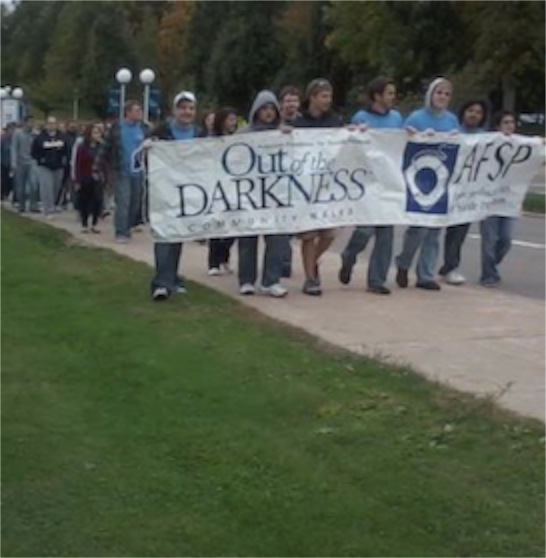 The walk is symbolic of the grief those walkers have experienced. Sometimes, it gets darker before the hope becomes visible.
The walk is symbolic of the grief those walkers have experienced. Sometimes, it gets darker before the hope becomes visible.
Out of the Darkness walks are designed to bring together survivors of suicide loss, people with depression and other mental disorders, mental health professionals and advocates to walk side-by-side, arm-in-arm, hand-in-hand. The purpose of the walks is to assist those who are grieving loss from suicide and to prevent future suicides by public education and awareness.
There is still an awful stigma attached to suicide in our country. Too many people do not want to talk about the subject. The things we refuse to talk about do not go away. They go underground. And underground they become surrounded by myth and rumor and the truth is not told. Out of the Darkness provides people with an opportunity to tell their story – and the story of a loved one who died as a victim of mental illness. “To me, the Overnight has given me much more than a chance to tell my story. It’s given me a chance to tell that story in a way that makes it safe for others to tell theirs, too.” Said Andrew Nelson, 28, of Lenexa, Kansas. Walking with his sister, Jenny, they have formed the group “Mom Squad” to connect with others who have lost a mother to suicide.
Since 2008, the American Foundation for Suicide Prevention has hosted Out of the Darkness walks to provide grieving people with a forum for healing. I have yet to participate in an overnight. Constraints on time and travel have kept me from the urban areas where the walks are held. But I have participated in suicide awareness walks. I have a complete set of t-shirts from the annual Rapid City suicide awareness walks.
There is something important about walking and working through grief. I did not lose my mother to suicide. She died only at the end of along and meaningful life. But the grief was real. Unlike those who lose loved ones to suicide, there was an outpouring of understanding and support from my community. However, the pain was real. I found that crucial to my healing were long walks along the Chehalis Trail in Washington State taken during our sabbatical in May of 2011. We simply walked, allowed our minds to wander and our bodies to grow naturally tired. And with every step we pounded a bit of our grief into the ground. With every step we began to release the past and open ourselves to the future. It was one of the most therapeutic things I have ever done.
 I have been following the pilgrimage of another walker. On April 24, Dennis Asselin, 63, stepped out of his front door. For 45 days he walked. He walked from Philadelphia to Boston. He walked in memory of his son, Nathaniel, who suffered from a severe form of a rare mental illness called dysmorphic disorder. He arrived in Boston yesterday.
I have been following the pilgrimage of another walker. On April 24, Dennis Asselin, 63, stepped out of his front door. For 45 days he walked. He walked from Philadelphia to Boston. He walked in memory of his son, Nathaniel, who suffered from a severe form of a rare mental illness called dysmorphic disorder. He arrived in Boston yesterday.
A Pilgrimage is a journey undertaken for the spiritual transformation of the individual and of the community to which the individual belongs. For centuries faithful people have believed that not only is the traveler transformed by a pilgrimage, so too is the community from which the traveler has left and to which the traveler will return. A pilgrimage may have a specific goal, but the pilgrimage is about the journey, not the destination. The journey includes separation and reunion and acknowledges that we are changed and transformed by both. The traveler has experiences that are distinct from that of the community. The community changes in the absence of the traveler. When the reconnect and tell their stories, they experience the spiritual truth that love transcends both time and space. It is an opportunity for an encounter with the eternal.
Dennis Asselin walked every day until he reached Boston yesterday. “I did it really to pound a lot of my grief into the ground, and I really did kind of let go of the feeling of loss,” he said. “To let go of the anger about that, the injustice of that, and the cruelty of all that, and the beautiful metaphor of moving forward is what it is.”
The walkers are on a pilgrimage. They transform our community.
Suicide grief is unique. People do not understand suicide. They fear it. They blame the victim. Our language reflects our attitudes. When someone says, “committed suicide,” they use the same verb that is used for “committed a crime.” Suicide is still considered a crime in many states. It is considered by some to be the result of weakness or a moral failing. It is neither. Suicide is the result of untreated or inadequately treated mental illness. Like other illnesses mental illnesses can be chronic. They can also have a sudden onset. Like other illnesses, there are effective treatments for many mental illnesses. Over 80% of persons who are treated for chronic depression experience relief from their symptoms.
We can be more supportive of those who have lost loved ones to suicide. We can raise funds to increase research for more effective treatment and prevention of mental illness. We can join in campaigns to stop bullying and educate children and youth about the dangers of certain behaviors. We can talk to one another.
One man walked from Philadelphia to Boston.
He was never alone, even when he could not see anyone by his side. That is the nature of pilgrimage. There is no place to which a pilgrim can journey where God is not present. As an ancient saying about pilgrimage goes, “God is at the departure. God is at the destination. God is alongside the journey.”
We all have an opportunity to take steps out of the darkness and into the dawn.

Out of the Darkness walks are designed to bring together survivors of suicide loss, people with depression and other mental disorders, mental health professionals and advocates to walk side-by-side, arm-in-arm, hand-in-hand. The purpose of the walks is to assist those who are grieving loss from suicide and to prevent future suicides by public education and awareness.
There is still an awful stigma attached to suicide in our country. Too many people do not want to talk about the subject. The things we refuse to talk about do not go away. They go underground. And underground they become surrounded by myth and rumor and the truth is not told. Out of the Darkness provides people with an opportunity to tell their story – and the story of a loved one who died as a victim of mental illness. “To me, the Overnight has given me much more than a chance to tell my story. It’s given me a chance to tell that story in a way that makes it safe for others to tell theirs, too.” Said Andrew Nelson, 28, of Lenexa, Kansas. Walking with his sister, Jenny, they have formed the group “Mom Squad” to connect with others who have lost a mother to suicide.
Since 2008, the American Foundation for Suicide Prevention has hosted Out of the Darkness walks to provide grieving people with a forum for healing. I have yet to participate in an overnight. Constraints on time and travel have kept me from the urban areas where the walks are held. But I have participated in suicide awareness walks. I have a complete set of t-shirts from the annual Rapid City suicide awareness walks.
There is something important about walking and working through grief. I did not lose my mother to suicide. She died only at the end of along and meaningful life. But the grief was real. Unlike those who lose loved ones to suicide, there was an outpouring of understanding and support from my community. However, the pain was real. I found that crucial to my healing were long walks along the Chehalis Trail in Washington State taken during our sabbatical in May of 2011. We simply walked, allowed our minds to wander and our bodies to grow naturally tired. And with every step we pounded a bit of our grief into the ground. With every step we began to release the past and open ourselves to the future. It was one of the most therapeutic things I have ever done.

A Pilgrimage is a journey undertaken for the spiritual transformation of the individual and of the community to which the individual belongs. For centuries faithful people have believed that not only is the traveler transformed by a pilgrimage, so too is the community from which the traveler has left and to which the traveler will return. A pilgrimage may have a specific goal, but the pilgrimage is about the journey, not the destination. The journey includes separation and reunion and acknowledges that we are changed and transformed by both. The traveler has experiences that are distinct from that of the community. The community changes in the absence of the traveler. When the reconnect and tell their stories, they experience the spiritual truth that love transcends both time and space. It is an opportunity for an encounter with the eternal.
Dennis Asselin walked every day until he reached Boston yesterday. “I did it really to pound a lot of my grief into the ground, and I really did kind of let go of the feeling of loss,” he said. “To let go of the anger about that, the injustice of that, and the cruelty of all that, and the beautiful metaphor of moving forward is what it is.”
The walkers are on a pilgrimage. They transform our community.
Suicide grief is unique. People do not understand suicide. They fear it. They blame the victim. Our language reflects our attitudes. When someone says, “committed suicide,” they use the same verb that is used for “committed a crime.” Suicide is still considered a crime in many states. It is considered by some to be the result of weakness or a moral failing. It is neither. Suicide is the result of untreated or inadequately treated mental illness. Like other illnesses mental illnesses can be chronic. They can also have a sudden onset. Like other illnesses, there are effective treatments for many mental illnesses. Over 80% of persons who are treated for chronic depression experience relief from their symptoms.
We can be more supportive of those who have lost loved ones to suicide. We can raise funds to increase research for more effective treatment and prevention of mental illness. We can join in campaigns to stop bullying and educate children and youth about the dangers of certain behaviors. We can talk to one another.
One man walked from Philadelphia to Boston.
He was never alone, even when he could not see anyone by his side. That is the nature of pilgrimage. There is no place to which a pilgrim can journey where God is not present. As an ancient saying about pilgrimage goes, “God is at the departure. God is at the destination. God is alongside the journey.”
We all have an opportunity to take steps out of the darkness and into the dawn.
Copyright © 2012 by Ted Huffman. I wrote this. If you want to copy it, please ask for permission. There is a contact me button at the bottom of this page. If you want to share my blog a friend, please direct your friend to my web site.
From Dull to Boring
07/06/12 05:35
In the midst of all of the elections that were held Tuesday, it is possible that some people might have missed one of the west coast votes. Citizens of the town of Boring, Oregon, voted overwhelmingly to form a paring with Dull, a village in Perthshire in Scotland. Actually, it wasn’t a vote of the entire community. The action was the result of a vote of the Boring Community Planning Organization. Presumably, the majority of the meetings of the group focus on Boring business. The relationship is called a “pairing” because the two communities do not qualify for a “sister city” designation.
Here in Rapid City, we have two sister cities. Both relationships were established by official actions of the City Council in 1994. Rapid City’s relationship with Imaichi in Japan began in the early 1990’s before the official designation. In 2006, Imaichi combined with four other cities to form Nikko City, which in turn selected Rapid City as its sister city.
Rapid City is also sister city with Apolda, Germany. Several exchanges and visits have taken place between Apolda and Rapid City, including exchanges of firefighters, law enforcement and medical personnel. Rapid City has official associations to promote the sister city relationships with Apolda and Nikko City.
Boring and Dull cannot have a sister city relationship. The rules of the sister cities association require that communities be of a similar size in order to be sister cities. Dull boasts 84 residents. 12,000 people call Boring their home. When it comes to numbers, more people are attracted to Boring than to Dull.


I’m not sure about this, but one gets the impression that folks are getting excited in both places about their new relationship. One wonders what might be the result of Boring and Dull people getting excited. Planners hope that the pairing will result in increased tourism for both cities. The possibilities of such tourism seem limitless:
“Where did you go on your vacation?”
“Um . . . Just a minute, I’ll remember . . . Oh! It was Boring!”
“How was your trip to Scotland?”
“Well, it was Dull.”
If conversations like those don’t spark increased tourism, I don’t know what will.
 Residents of Dull are hoping that the paring might result in a new sign. According to Marjorie Keddle, chairperson of the Dull and Weem Community Council, the community plans to get together with the Perth and Kiniross Council to make an appeal for a new sign. They are hoping to get the names of both cities on their new sign. Right now the city has only a sing that says, “Dull ¼.” Just imagine how many more tourists might flock into the community if the sign said “Dull and Boring.” It is enough to get Dull and Boring people excited.
Residents of Dull are hoping that the paring might result in a new sign. According to Marjorie Keddle, chairperson of the Dull and Weem Community Council, the community plans to get together with the Perth and Kiniross Council to make an appeal for a new sign. They are hoping to get the names of both cities on their new sign. Right now the city has only a sing that says, “Dull ¼.” Just imagine how many more tourists might flock into the community if the sign said “Dull and Boring.” It is enough to get Dull and Boring people excited.
OK, it is a cheap shot to make fun of the names of the towns. After all, each has a rich and varied history.
The city of Boring, Oregon, was named in honor of one of its early residents, William Boring. It seems that there were several people with that name. William Alciphron Boring (1859-1937) was an American architect. He was one of the codesigners of the Immigration Station at Ellis Island iin New York Harbor. He is also credited with the design of the American Seamen’s Friend Society Sailors’ Home and Institute in New York City. Both buildings feature red brick with extensive use of granite. New York City also boasts several Boring apartment buildings and a Boring school. There is even a Boring warehouse in that city. But that Willima Boring is not the same William Boring for whom the city in Oregon is named. I couldn’t find much information about William H. Boring, who was a Union Veteran who was mustered out of the Illinois Infantry in 1865 due to a disability after serving for approximately 4 years during the Civil War. He moved west and settled in an Oregon timber town that eventually was named for him. There just doesn’t seem to be much information about him other than his military records. I guess after the excitement of the War, the rest of his life was, well . . . boring.
In Scotland, the reason for the name of Dull is not quite as clear. The place has had that name for a long time and the most popular theory is that the city was named for a word of the ancient Pictish language. In that language, dull means “field.” Dull is, after all, pretty much out in the fields.
The idea for the partnership of the two communities did not originate with the residents of either town. Elizabeth Leighton lives in Aberfeldy, a town near to Dull in Scotland. Ms. Leighton decided to take a bicycling vacation in the United States. On her trip she passed through Boring, Oregon. She w as so excited to discover the town that she immediately phoned her friend Emma Burtles, a resident of Dull. Together they came up with the idea of linking the two communities. Aberfeldy posted pictures of the community signs on her Facebook page and within weeks dozens of people had viewed her photos.
The main businesses in Dull are guest lodges and chalets. Tourists come to the area for a bit of vacation and down time. Highland Safaris also operates out of the town and caters to the tourist market. Recently residents of the village noticed that four cyclists from overseas stopped in their town. They were on a trip from John O Groats to Lands End. Dull wasn’t on their original route, but they decided to change their plans in order to be able to say that they had cycled to Dull and beyond.
 An official street party is planned for Saturday, June 23, in Dull. All of the citizens of Dull are invited. It is hoped that a few Boring people will also be on hand for the party. It should be quite an affair.
An official street party is planned for Saturday, June 23, in Dull. All of the citizens of Dull are invited. It is hoped that a few Boring people will also be on hand for the party. It should be quite an affair.
And who knows? Perhaps the Dull people will get a new sign. They are hoping that it will say, “Dull, in association with Boring.” That ought to really bring the tourists. After all, it sounds like a dream vacation.
Here in Rapid City, we have two sister cities. Both relationships were established by official actions of the City Council in 1994. Rapid City’s relationship with Imaichi in Japan began in the early 1990’s before the official designation. In 2006, Imaichi combined with four other cities to form Nikko City, which in turn selected Rapid City as its sister city.
Rapid City is also sister city with Apolda, Germany. Several exchanges and visits have taken place between Apolda and Rapid City, including exchanges of firefighters, law enforcement and medical personnel. Rapid City has official associations to promote the sister city relationships with Apolda and Nikko City.
Boring and Dull cannot have a sister city relationship. The rules of the sister cities association require that communities be of a similar size in order to be sister cities. Dull boasts 84 residents. 12,000 people call Boring their home. When it comes to numbers, more people are attracted to Boring than to Dull.


I’m not sure about this, but one gets the impression that folks are getting excited in both places about their new relationship. One wonders what might be the result of Boring and Dull people getting excited. Planners hope that the pairing will result in increased tourism for both cities. The possibilities of such tourism seem limitless:
“Where did you go on your vacation?”
“Um . . . Just a minute, I’ll remember . . . Oh! It was Boring!”
“How was your trip to Scotland?”
“Well, it was Dull.”
If conversations like those don’t spark increased tourism, I don’t know what will.

OK, it is a cheap shot to make fun of the names of the towns. After all, each has a rich and varied history.
The city of Boring, Oregon, was named in honor of one of its early residents, William Boring. It seems that there were several people with that name. William Alciphron Boring (1859-1937) was an American architect. He was one of the codesigners of the Immigration Station at Ellis Island iin New York Harbor. He is also credited with the design of the American Seamen’s Friend Society Sailors’ Home and Institute in New York City. Both buildings feature red brick with extensive use of granite. New York City also boasts several Boring apartment buildings and a Boring school. There is even a Boring warehouse in that city. But that Willima Boring is not the same William Boring for whom the city in Oregon is named. I couldn’t find much information about William H. Boring, who was a Union Veteran who was mustered out of the Illinois Infantry in 1865 due to a disability after serving for approximately 4 years during the Civil War. He moved west and settled in an Oregon timber town that eventually was named for him. There just doesn’t seem to be much information about him other than his military records. I guess after the excitement of the War, the rest of his life was, well . . . boring.
In Scotland, the reason for the name of Dull is not quite as clear. The place has had that name for a long time and the most popular theory is that the city was named for a word of the ancient Pictish language. In that language, dull means “field.” Dull is, after all, pretty much out in the fields.
The idea for the partnership of the two communities did not originate with the residents of either town. Elizabeth Leighton lives in Aberfeldy, a town near to Dull in Scotland. Ms. Leighton decided to take a bicycling vacation in the United States. On her trip she passed through Boring, Oregon. She w as so excited to discover the town that she immediately phoned her friend Emma Burtles, a resident of Dull. Together they came up with the idea of linking the two communities. Aberfeldy posted pictures of the community signs on her Facebook page and within weeks dozens of people had viewed her photos.
The main businesses in Dull are guest lodges and chalets. Tourists come to the area for a bit of vacation and down time. Highland Safaris also operates out of the town and caters to the tourist market. Recently residents of the village noticed that four cyclists from overseas stopped in their town. They were on a trip from John O Groats to Lands End. Dull wasn’t on their original route, but they decided to change their plans in order to be able to say that they had cycled to Dull and beyond.

And who knows? Perhaps the Dull people will get a new sign. They are hoping that it will say, “Dull, in association with Boring.” That ought to really bring the tourists. After all, it sounds like a dream vacation.
Copyright © 2012 by Ted Huffman. I wrote this. If you want to copy it, please ask for permission. There is a contact me button at the bottom of this page. If you want to share my blog a friend, please direct your friend to my web site.
Politics, Hats and Houses
06/06/12 05:28
Politics is a bitter topic in Wisconsin. Yesterday’s failed attempt to recall Governor Scott Walker did little to change that fact. As passionate as people were before the election, their feelings won’t quickly subside. The side that lost the election garnered 44% of the vote. That means that there are a whole lot of unhappy people. The same would have been true had the vote gone the other way. Pundits will be re-hashing the election for generations it seems. Wisconsin voters are waking up to something we in South Dakota have been experiencing for many years: the winners are those who raise most of their money out of state. To put it in other words, out of state interests have a lot, and sometimes more influence than locals. To put it even more bluntly, elections are bought and sold by out-of-state interests.
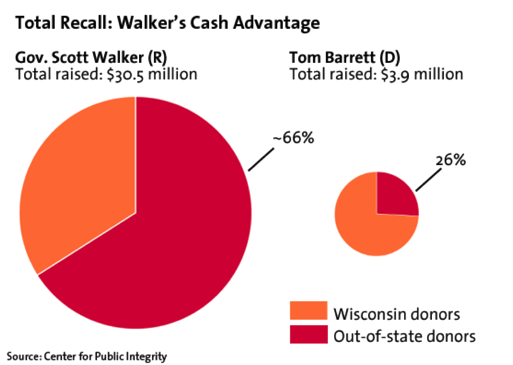
The monies raised by the campaigns are only part of the picture. Independent expenditure groups spent an estimated $29 million on advertisements, over $22 million in support of Governor Walker. Not all of Barrett’s money was spent on the general election as he had an opponent in the primary.
This is all legal. Economic times may be tough. Candidates may be making speeches about fiscal responsibility, austerity measures, and cutbacks. But when it comes to getting elected, apparently a 70% increase in the amount spent on the election over the 2010 race between the same two candidates is an acceptable figure. Cutting taxes is so lucrative for the nation’s most wealthy citizens that they are willing to spend millions to keep from having to pay more taxes. It seems to them to be a good investment.
You can’t help but wonder what $63.5 million might have done for Wisconsin if it had been available to invest in education, highways, law enforcement and other priorities of state government.
The era of unlimited funding for elections seems to be upon us. There are plenty of candidates who say they want to cut the cost of government, but none who are trying to cut the cost of elections.
The system is inherently unfair. And Americans are pretty conscious about fairness. I suspect that we will find ways to restore fairness to our tax codes and to our electoral processes, but it might take quite a bit of time.
In the meantime, talking about politics in Wisconsin means encountering a large amount of anger. The state is sadly divided and the divide is bitter.
 If I were in Wisconsin today, I think I’d try to change the subject to hats. The United Kingdom has just finished several days of celebration of the diamond jubilee anniversary of the queen. And those Brits certainly do like their hats. Some of the hats are iconic and make you think of Britain, like the distinctive helmet of a bobby.
If I were in Wisconsin today, I think I’d try to change the subject to hats. The United Kingdom has just finished several days of celebration of the diamond jubilee anniversary of the queen. And those Brits certainly do like their hats. Some of the hats are iconic and make you think of Britain, like the distinctive helmet of a bobby.
 The queen herself is well known for her hats. She sported several different hats during the festivities, choosing a white number for the barge float down the River Thames, a blue one for other activities, and a pink hat for still different events. One never gets the impression that the queen is having a bad hair day. Then of course, the queen doesn’t have to take her hat off for anyone, so there aren’t that many people who have seen her without a hat.
The queen herself is well known for her hats. She sported several different hats during the festivities, choosing a white number for the barge float down the River Thames, a blue one for other activities, and a pink hat for still different events. One never gets the impression that the queen is having a bad hair day. Then of course, the queen doesn’t have to take her hat off for anyone, so there aren’t that many people who have seen her without a hat.
 The Duchess of Cambridge is already becoming known for her hats, though she seems to try to avoid upstaging the queen.
The Duchess of Cambridge is already becoming known for her hats, though she seems to try to avoid upstaging the queen.
There were some hats, however, that were a lot more elaborate. Sported on the streets of London during the jubilee were a lot of hats that featured flags and the red, white and blue of the union jack.

And there were plenty of hats with images of the queen in celebration of her 60 years as reigning monarch.
Some people got carried away.

 The hats the Brits wore for the jubilee paled, however, in comparison with the hat that Princess Beatrice wore to the royal wedding. Now that was a hat to remember. It was, without a doubt, a fashion statement that never needs to be repeated.
The hats the Brits wore for the jubilee paled, however, in comparison with the hat that Princess Beatrice wore to the royal wedding. Now that was a hat to remember. It was, without a doubt, a fashion statement that never needs to be repeated.
Folks in Wisconsin might do well to talk about hats this morning. Whether they are pleased or dismayed with the election results, it is unlikely that they will have any impact on the thinking of their opponents. And the task for folks in Wisconsin today is learning to live with each other once again. The state is deeply divided. Passions are high. People are angry. And they have to learn to live with one another. How they deal with the aftermath of this divisive election may be a model for the rest of us.
In a deeply polarized political environment, it is likely that we will face political divisions that pit family member against family member and neighbor against neighbor. It is too easy to forget that we are all in this together. We need each other.
Maybe it would be best if the folks of Wisconsin don’t speak of politics for a few days. Sometimes the deepest divisions are not healed by words. So after my silly suggestion for Wisconsin citizens, here is a serious one.
Habitat for Humanity of Dane County, UW-Madison Habitat for Humanity, and Milwaukee Habitat for Humanity are all in need of volunteers for home construction in Wisconsin. There are probably dozens of other affiliates of Habitat for Humanity International across the state. Imagine what would happen if one person who voted for Barrett identified a person who voted for Walker to join them for a day of volunteering this Saturday. They could spend the day working side-by-side and shoulder-to-shoulder on a worthwhile project. They would end the day tired and dirty and feeling like they had accomplished something.
Imagine what would happen if hundreds of people who had worked against each other in the election worked together for just one day. It won’t be a top-down effort. Don’t expect the governor’s candidates to be seen in public together. If it is going to happen, it will happen in neighborhoods and families.
The advice is good for us all. Perhaps each of us needs to think of a person with whom we have had deep disagreements and invite that person to share a day of volunteer service.
We could do more to change the tone of politics in our communities than the millions of dollars that out of state interests are willing to spend. There are plenty of things that are worth more than money when it comes to building our future together.

The monies raised by the campaigns are only part of the picture. Independent expenditure groups spent an estimated $29 million on advertisements, over $22 million in support of Governor Walker. Not all of Barrett’s money was spent on the general election as he had an opponent in the primary.
This is all legal. Economic times may be tough. Candidates may be making speeches about fiscal responsibility, austerity measures, and cutbacks. But when it comes to getting elected, apparently a 70% increase in the amount spent on the election over the 2010 race between the same two candidates is an acceptable figure. Cutting taxes is so lucrative for the nation’s most wealthy citizens that they are willing to spend millions to keep from having to pay more taxes. It seems to them to be a good investment.
You can’t help but wonder what $63.5 million might have done for Wisconsin if it had been available to invest in education, highways, law enforcement and other priorities of state government.
The era of unlimited funding for elections seems to be upon us. There are plenty of candidates who say they want to cut the cost of government, but none who are trying to cut the cost of elections.
The system is inherently unfair. And Americans are pretty conscious about fairness. I suspect that we will find ways to restore fairness to our tax codes and to our electoral processes, but it might take quite a bit of time.
In the meantime, talking about politics in Wisconsin means encountering a large amount of anger. The state is sadly divided and the divide is bitter.



There were some hats, however, that were a lot more elaborate. Sported on the streets of London during the jubilee were a lot of hats that featured flags and the red, white and blue of the union jack.

And there were plenty of hats with images of the queen in celebration of her 60 years as reigning monarch.
Some people got carried away.


Folks in Wisconsin might do well to talk about hats this morning. Whether they are pleased or dismayed with the election results, it is unlikely that they will have any impact on the thinking of their opponents. And the task for folks in Wisconsin today is learning to live with each other once again. The state is deeply divided. Passions are high. People are angry. And they have to learn to live with one another. How they deal with the aftermath of this divisive election may be a model for the rest of us.
In a deeply polarized political environment, it is likely that we will face political divisions that pit family member against family member and neighbor against neighbor. It is too easy to forget that we are all in this together. We need each other.
Maybe it would be best if the folks of Wisconsin don’t speak of politics for a few days. Sometimes the deepest divisions are not healed by words. So after my silly suggestion for Wisconsin citizens, here is a serious one.
Habitat for Humanity of Dane County, UW-Madison Habitat for Humanity, and Milwaukee Habitat for Humanity are all in need of volunteers for home construction in Wisconsin. There are probably dozens of other affiliates of Habitat for Humanity International across the state. Imagine what would happen if one person who voted for Barrett identified a person who voted for Walker to join them for a day of volunteering this Saturday. They could spend the day working side-by-side and shoulder-to-shoulder on a worthwhile project. They would end the day tired and dirty and feeling like they had accomplished something.
Imagine what would happen if hundreds of people who had worked against each other in the election worked together for just one day. It won’t be a top-down effort. Don’t expect the governor’s candidates to be seen in public together. If it is going to happen, it will happen in neighborhoods and families.
The advice is good for us all. Perhaps each of us needs to think of a person with whom we have had deep disagreements and invite that person to share a day of volunteer service.
We could do more to change the tone of politics in our communities than the millions of dollars that out of state interests are willing to spend. There are plenty of things that are worth more than money when it comes to building our future together.
Copyright © 2012 by Ted Huffman. I wrote this. If you want to copy it, please ask for permission. There is a contact me button at the bottom of this page. If you want to share my blog a friend, please direct your friend to my web site.
Numbers
05/06/12 05:45

The standard automobile license plate in the State of South Dakota has six digits. The first one or two digits designate the county in which the automobile is registered. The second or third digit is generally a letter. The remaining digits are numbers until a county has used all of the letter and number combinations afforded by the space. Then a subsequent digit is also assigned a letter. This system provides a unique number for each automobile registered in the state.
We love numbering things. We have numbers for our bank accounts, our credit cards, the accounts we have with doctors. We have numbers for our addresses, for multiple telephones and fax machines. We have serial numbers on the items we purchase and personal identification numbers for the bank. We have combination locks and computer passwords that involve numbers.
Most of us have a reasonable ability to remember multiple numbers. I used to be good at telephone numbers. I can still recite the phone numbers of my childhood home and of most of the places I have lived since then. I know the number for the church, our home, our cell phones, and a few others. But these days we store numbers in the memories of our phones and there is less need to have memorized numbers in our brains. I call people by selecting their name from a list these days. My cell phone even has a way to look up the numbers that I haven’t stored in its memory so I rarely use a conventional telephone book any more.
There is a bit of brain science in our telephone numbers. A phone number is ten digits, which is a number that most people can retain in short term memory. A longer string of digits might make it more difficult for the average person to dial the number. Except, of course, we don’t “dial” numbers any more. The use of that term belongs to the technology of the past.
But there are plenty of numbers that are too long to easily learn or memorize.
I was thinking about numbers yesterday as I filled out the paperwork to obtain a Hull Identification Number for the rowboat that I am building in my garage. I learned about Hull Identification Numbers shortly after I moved to South Dakota. I was launching my canoe at Deerfield Lake when an officer of the South Dakota Fish, Game and Parks Commission approached me and informed me that I could not paddle on the lake without having first registered my boat. Unlike the other states in which I had previously lived, South Dakota requires registration of all boats over 12 feet in length regardless of design or method of propulsion. In other states, non-motorized canoes and kayaks are exempt from registration.
I went to the courthouse to register the boat, where I was informed that I needed to have a hull identification number permanently affixed to the boat, have that number inspected by a South Dakota Peace Officer, and bring a form certifying that the boat had been inspected back to the court house where I could pay the fee and obtain a license for the boat. Then I would be issued a different set of numbers and letters to affix to the bow of the boat and a boat license with yet another number.
I was not very happy with having to affix all of these numbers to a hand-made cedar strip canoe. I asked if this procedure was required of a factory-made boat and was informed that the manufacturer assigns a Serial Number at the factory that can be used. Since I am familiar with Old Town Canoes, I know that Old Town Serial Numbers are simple numbers stamped into the wooden stem of the canoe. I suggested that my canoe was serial number 1 because it was the first canoe I had made and I intended to make others. My attempt at humor was not appreciated by the person at the DMV, who had a long line of others waiting to see her. I was curtly informed that my Hull Identification Number had to follow a specific formula.
I sighed, grumbled a bit beneath my breath, and went through the procedure. I have gone through the procedure, with a bit less grumbling and a lot less time taken from the harried DMV employees, for each boat that I have built since, with the exception of one kayak that I shortened to 11 feet 11 inches just to avoid having to go through the procedure.
There can’t possibly be enough boats in South Dakota to require 12 digits to assign a unique number to each boat. With that scheme, the state could theoretically register 999,999,999,999 boats before having to use a letter. One letter in the formula for each trillion boats means that the state would literally fill up with boats and have no room for anything else before they ran out of numbers. Counting, however, would be too simple for the state. The first three designators of the HIN are the state designator. Never mind that the Post Office can identify all 50 states with two digits, when it comes to boats, South Dakota wants each to begin with “SDZ.” I have no idea what the Z stands for. That is followed by 5 digits that are numbers and letters assigned by the state. This is the part of the number that is presumably unique. The remaining four digits are for the date in which the boat was completed, or in the case of boats brought in from other states without hull identification numbers, the date the boat arrived in South Dakota. There is one digit for the month. The state has assigned letters for each month. Then, for reasons that escape me, the formula specifies that you use the last digit of the current year followed by the last two digits of the current year. So 2012 is assigned 212. I guess they aren’t worried that their year numbers repeat every century.
So this entire blog has been a rant about the absurdity of numbers. And I haven’t even begun to wonder why business account numbers are so long.
At least I can still remember my social security number. If each state issued their own numbers who knows how many digits that might require?
Copyright © 2012 by Ted Huffman. I wrote this. If you want to copy it, please ask for permission. There is a contact me button at the bottom of this page. If you want to share my blog a friend, please direct your friend to my web site.
Planes and Fires
04/06/12 04:09
After World War II, there was a brief surplus of pilots in the Untied States. The efforts to train crews for service in Europe and the Pacific had produced a lot of pilots. These pilots came home with their lives changed by the war and many sought different jobs and career paths than their parents. Some, like my father who had been an instructor pilot and service pilot, based in California, were determined to make aviation their life. My parents set up operations in Big Timber, Montana, just north of Yellowstone National Park, a short flight from the Gallatin National Forest. They envisioned that they could earn their living from airport operations, fuel and mechanical services to other pilots, charter work, air ambulance, agricultural chemical spraying and other aviation services. Important to their operation were contracts earned with the Forest Service and the National Park Service. They used light aircraft to fly into the mountains to spot forest fires. After a night of thundershowers, dad would be in the air before 6 a.m., flying around the high country in search of smoke plumes.
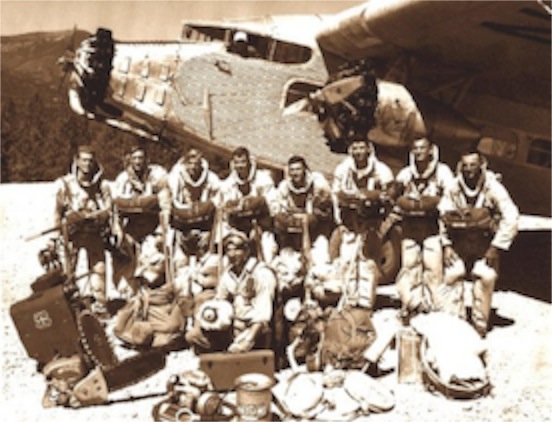 Our operation wasn’t as large as Johnson Brothers Flying Service, based in Missoula, Montana. It was over in Missoula where a lot of innovation in airborne fire fighting took place. It was from there that the first smokejumpers parachuted to serve as ground crews in remote locations. Before long, there were air tankers dropping water and retardant on fires. In those days, the air tankers were World War II bombers, purchased from a bone yard in Arizona, retrofitted with equipment and flown by private contractors.
Our operation wasn’t as large as Johnson Brothers Flying Service, based in Missoula, Montana. It was over in Missoula where a lot of innovation in airborne fire fighting took place. It was from there that the first smokejumpers parachuted to serve as ground crews in remote locations. Before long, there were air tankers dropping water and retardant on fires. In those days, the air tankers were World War II bombers, purchased from a bone yard in Arizona, retrofitted with equipment and flown by private contractors.
 I was a kid growing up around airplanes in those days. Occasionally, I got a ride in one of them. I’ve flown fire patrol with my dad in a Piper Super Cub. I got a ride in a Ford Tri-motor that was used to carry smokejumpers. And I watched a lot of ground operations as tankers were filled, fueled and headed out to fight fires. At one point in my life I thought that I might pursue such a career. I couldn’t pass the eye test to become a smokejumper. I was called in a different direction. But I have kept up watching the skies and paying attention to the operations of the aerial firefighters.
I was a kid growing up around airplanes in those days. Occasionally, I got a ride in one of them. I’ve flown fire patrol with my dad in a Piper Super Cub. I got a ride in a Ford Tri-motor that was used to carry smokejumpers. And I watched a lot of ground operations as tankers were filled, fueled and headed out to fight fires. At one point in my life I thought that I might pursue such a career. I couldn’t pass the eye test to become a smokejumper. I was called in a different direction. But I have kept up watching the skies and paying attention to the operations of the aerial firefighters.
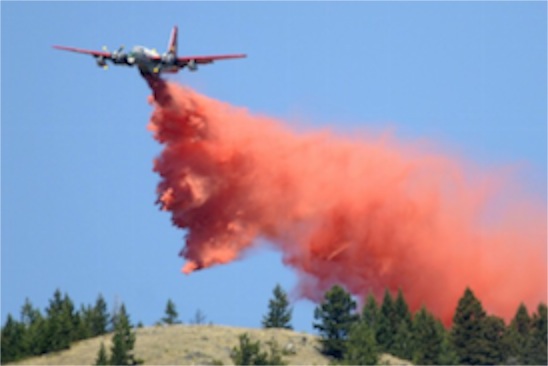 I am saddened to read this morning that a P-2V, owned by Neptune Aviation Services of Missoula, Montana, crashed yesterday while fighting a 5,000-acre blaze along the Nevada-Utah border. Two crewmembers were killed in the accident. The P-2 was originally developed in the 1940’s for use by the Navy. The version flown by Neptune was a more recent model, but it was likely nearing 50 years old. They are tough old birds, and the Forest Service has a rigorous inspection program designed to assure that any planes used in such operations are safe.
I am saddened to read this morning that a P-2V, owned by Neptune Aviation Services of Missoula, Montana, crashed yesterday while fighting a 5,000-acre blaze along the Nevada-Utah border. Two crewmembers were killed in the accident. The P-2 was originally developed in the 1940’s for use by the Navy. The version flown by Neptune was a more recent model, but it was likely nearing 50 years old. They are tough old birds, and the Forest Service has a rigorous inspection program designed to assure that any planes used in such operations are safe.
But accidents happen.
Fires also happen. And we are seeing more frequent and larger fires in recent years. Whether or not they are caused by a change in global weather patterns, it is clear that the fires are becoming larger and more dangerous. Already this year, wildfires have burned over 700,000 acres in the US. The Whitewater-Baldy Fire in New Mexico has already spread to an area bigger than Dallas, Texas. It has consumed dozens of homes and is only 15% contained. The fire could burn for weeks, or even months in the tinder-dry conditions.
And there are not enough aircraft in the firefighting fleet to handle the blazes currently burning.
In 2002 a tanker crashed in California, killing 3. Stress cracks in the main wing spar were blamed for the accident. Then in 2004, there were two more planes lost. The entire fleet was grounded for inspections. A plan was developed to replace the aging fleet. Neptune has been planning since then to replace its P-2’s with BAe-146 aircraft. But at $7 million to $8 million per airplane such a move is financially challenging, if not impossible.
 In 2006, there were 44 heavy air tankers available for firefighting operations in the West. Yesterday there were 11. Today there are 10, if they don’t decide to ground the P-2’s and P-3’s. The fires are going to get bigger while the Forest Service and its private contractors figure out what to do.
In 2006, there were 44 heavy air tankers available for firefighting operations in the West. Yesterday there were 11. Today there are 10, if they don’t decide to ground the P-2’s and P-3’s. The fires are going to get bigger while the Forest Service and its private contractors figure out what to do.
There are possibilities for the fleet to include both bigger and smaller airplanes. The P-2 that crashed yesterday carried just over 2,300 gallons of retardant. It was classified as a medium tanker. Smaller airplanes, originally designed for agricultural operations can take up some of the slack. The Air Tractor AT comes in two versions. One carries 807 gallons, the other a thousand. We’ve seen air tractors used in fire operations in the Black Hills National Forest.
On the other end of the spectrum, 10 Tanker Air Carrier has flown nearly 400 missions on fires with a modified DC-10 jet that carries 12,000 gallons. Evergreen Air has one 747 supertanker that carries 20,500 gallons. These heavy aircraft are incredibly expensive to own and operate. There is some speculation that they simply are too expensive to be practical.
 For this fire season, however, the options for the Forest Service are very limited. There simply are not enough aircraft. It can take years to come up with financing and after that months and months to perform inspections and prepare aircraft for their role in fighting fires. There are a few National Guard MAFFS units in the west that have C-130 Hercules tankers capable of carrying 3,000 gallons. They will need to be called into firefighting service this year.
For this fire season, however, the options for the Forest Service are very limited. There simply are not enough aircraft. It can take years to come up with financing and after that months and months to perform inspections and prepare aircraft for their role in fighting fires. There are a few National Guard MAFFS units in the west that have C-130 Hercules tankers capable of carrying 3,000 gallons. They will need to be called into firefighting service this year.
I used to be able to tell you what kind of airplane was being used by the sound of its engines. But those days are past. I can still identify a P-2 or P-3 with a combination of sound and sight. And I recognize the Air Tractor; though have to see one to know if it is being used for firefighting. So I’ll be watching and listening as the summer progresses. In the west, it is not a matter of “if” we will have a fire, just a matter of “when.”
As I look up, I’ll keep sniffing the air for smoke. And I’ll pray for the crews who risk their lives daily to protect homes from the fires.



But accidents happen.
Fires also happen. And we are seeing more frequent and larger fires in recent years. Whether or not they are caused by a change in global weather patterns, it is clear that the fires are becoming larger and more dangerous. Already this year, wildfires have burned over 700,000 acres in the US. The Whitewater-Baldy Fire in New Mexico has already spread to an area bigger than Dallas, Texas. It has consumed dozens of homes and is only 15% contained. The fire could burn for weeks, or even months in the tinder-dry conditions.
And there are not enough aircraft in the firefighting fleet to handle the blazes currently burning.
In 2002 a tanker crashed in California, killing 3. Stress cracks in the main wing spar were blamed for the accident. Then in 2004, there were two more planes lost. The entire fleet was grounded for inspections. A plan was developed to replace the aging fleet. Neptune has been planning since then to replace its P-2’s with BAe-146 aircraft. But at $7 million to $8 million per airplane such a move is financially challenging, if not impossible.

There are possibilities for the fleet to include both bigger and smaller airplanes. The P-2 that crashed yesterday carried just over 2,300 gallons of retardant. It was classified as a medium tanker. Smaller airplanes, originally designed for agricultural operations can take up some of the slack. The Air Tractor AT comes in two versions. One carries 807 gallons, the other a thousand. We’ve seen air tractors used in fire operations in the Black Hills National Forest.
On the other end of the spectrum, 10 Tanker Air Carrier has flown nearly 400 missions on fires with a modified DC-10 jet that carries 12,000 gallons. Evergreen Air has one 747 supertanker that carries 20,500 gallons. These heavy aircraft are incredibly expensive to own and operate. There is some speculation that they simply are too expensive to be practical.

I used to be able to tell you what kind of airplane was being used by the sound of its engines. But those days are past. I can still identify a P-2 or P-3 with a combination of sound and sight. And I recognize the Air Tractor; though have to see one to know if it is being used for firefighting. So I’ll be watching and listening as the summer progresses. In the west, it is not a matter of “if” we will have a fire, just a matter of “when.”
As I look up, I’ll keep sniffing the air for smoke. And I’ll pray for the crews who risk their lives daily to protect homes from the fires.
Copyright © 2012 by Ted Huffman. I wrote this. If you want to copy it, please ask for permission. There is a contact me button at the bottom of this page. If you want to share my blog a friend, please direct your friend to my web site.
Pageants and Celebrations
03/06/12 05:26
As I sit down to write this morning, it is about 11:30 a.m. in London, where crowds are braving wind and rain to get to just the right spot on the River Thames to watch the River pageant. Some of the people have been camped out alongside the river for 24 hours or more. The flotilla of over 1,000 boats festooned with flowers will feature the royal barge with the royal family as its centerpiece. Commentators say that there has been nothing like it for centuries along the river. As many as 20,000 people will be on the boats themselves. The entire show is being coordinated and some boats were turned away from the flotilla in order to make the show run smoothly. The pace of the flotilla will be set by rowing craft that will lead the procession down the river, followed by the royal barge with the Queen and over 10,000 flowers. Next will come historic craft of many different kinds. It should be quite a show.
 Although bright sunlight might show off all of the gold leaf that has been used to festoon the royal barge, rainy weather probably won’t dampen the spirits of all of those gathered to celebrate. Londoners are used to the rain.
Although bright sunlight might show off all of the gold leaf that has been used to festoon the royal barge, rainy weather probably won’t dampen the spirits of all of those gathered to celebrate. Londoners are used to the rain.
We had a wonderful and sunny drive home from Aberdeen yesterday. The weather was perfect for our little South Dakota road trip. Good conversation made the miles pass quickly and we were at our home by 8 p.m. As we approached the hills, we could see that they were shrouded with thunderclouds. We didn’t notice many flashes of lightning, but we could see that it was raining in many areas. We had the car unloaded before the rain started here. It was just right to freshen the grass and trees and garden.
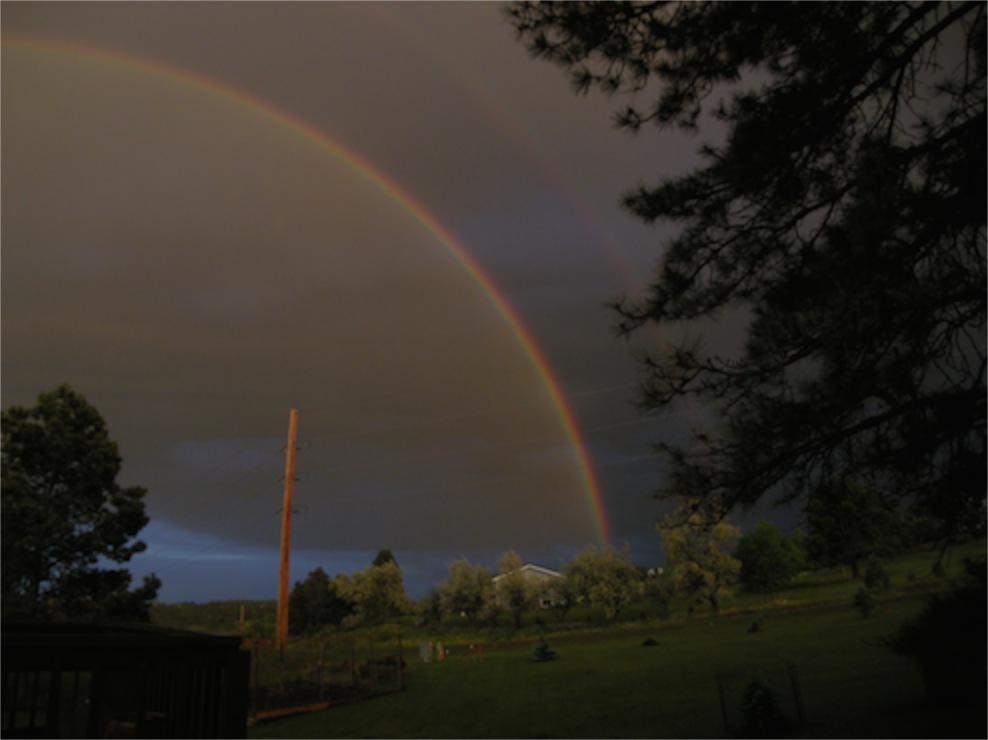
Next came the real treat. As the storm clouds blew off to the east, the sky was very dark in that direction. Meanwhile there was a sliver of sunset under the clouds to the west, which set up a gorgeous horizon-to-horizon double rainbow. It was stunning. I reached for my camera, but I’m not the most skilled of photographers, and I don’t have a lens that captures as wide an angle as would be required to get the entire rainbow in a single frame. Still the pictures are a reminder of how beautiful it was.
Even the grandest of our celebrations pales in comparison to the spectacle of nature.
I am not a big follower of British royals. I have no aspirations to live in a monarchy. I think that much of the expense and attention paid to the jubilee seems a bit silly. But I do like boats. I would have gone to some effort to look at the procession of boats if I happened to be in London for the celebration. I did check out some of the pictures on the live camera from BBC this morning.
It seems as if the people of England are simply looking for a reason to celebrate. The Queen’s diamond jubilee gives them an opportunity to come together for a party. In a time of economic stress, high unemployment, long deployments of troops in a war that seems to have no end, and other problems people need some ways to come together and celebrate. It is a demonstration of British patriotism and the celebration of the long life of a popular queen.
 We all look forward to events and occasions to celebrate. It is one of the joys of living a life immersed in the cycles of the Christian year. We know that there are festival days that come each year. My life is organized by anticipation of Christmas and Easter, but also by the coming of Pentecost and the long journey leading up to the celebration of the reign of Christ.
We all look forward to events and occasions to celebrate. It is one of the joys of living a life immersed in the cycles of the Christian year. We know that there are festival days that come each year. My life is organized by anticipation of Christmas and Easter, but also by the coming of Pentecost and the long journey leading up to the celebration of the reign of Christ.
Reign of Christ Sunday, the last Sunday before the beginning of Advent, has been deeply influenced by the Church of England and the authority of the royals. In England, the Queen is not only the head of state. She is also the head of the Church of England. Although this queen doesn’t take a very heavy-handed role in the day-to-day operations of the church, there have been, in the past, kings who assumed direct leadership, sometimes in conflict with bishops and other church leaders. The language we use in our churches is deeply influenced by the language of the British monarchy. The King James Version of the Bible, commissioned to use language that would reflect the structure of British hierarchy and the authority of earthly kings, remains very popular in our churches today despite the fact that it was banned from the Mayflower and its use was frowned upon in the Massachusetts Bay Colony. The roots of our church were an attempt to protest against the structure of authority in the Church of England, but we cannot deny the influence of that church that remains in our everyday life. The use of the word “Lord” as an English translation for the Hebrew YHWH and as a title for Jesus is directly related to medieval social order in Europe, but has come to have much different meaning for most contemporary Christians in our country.
What we do know is that as individuals we long to belong to something that is bigger than ourselves. We want to be a part of a history that began before our birth and will continue long beyond the span of our earthly life. We want to stand in line with previous generations and look forward to generations yet to come. It has been the desire of people from the beginnings of Biblical history. The story of Abram and Sarai begins with a mention of those who came before and is driven by the promise of future generations. Thousands of years later we tell their story as a way of identifying our family of faith and rekindling our sense of promise and hope for the future.
I won’t be celebrating the jubilee. I won’t be paddling or rowing today. But I will be paying a little bit of attention.
Everybody enjoys a good party.

We had a wonderful and sunny drive home from Aberdeen yesterday. The weather was perfect for our little South Dakota road trip. Good conversation made the miles pass quickly and we were at our home by 8 p.m. As we approached the hills, we could see that they were shrouded with thunderclouds. We didn’t notice many flashes of lightning, but we could see that it was raining in many areas. We had the car unloaded before the rain started here. It was just right to freshen the grass and trees and garden.

Next came the real treat. As the storm clouds blew off to the east, the sky was very dark in that direction. Meanwhile there was a sliver of sunset under the clouds to the west, which set up a gorgeous horizon-to-horizon double rainbow. It was stunning. I reached for my camera, but I’m not the most skilled of photographers, and I don’t have a lens that captures as wide an angle as would be required to get the entire rainbow in a single frame. Still the pictures are a reminder of how beautiful it was.
Even the grandest of our celebrations pales in comparison to the spectacle of nature.
I am not a big follower of British royals. I have no aspirations to live in a monarchy. I think that much of the expense and attention paid to the jubilee seems a bit silly. But I do like boats. I would have gone to some effort to look at the procession of boats if I happened to be in London for the celebration. I did check out some of the pictures on the live camera from BBC this morning.
It seems as if the people of England are simply looking for a reason to celebrate. The Queen’s diamond jubilee gives them an opportunity to come together for a party. In a time of economic stress, high unemployment, long deployments of troops in a war that seems to have no end, and other problems people need some ways to come together and celebrate. It is a demonstration of British patriotism and the celebration of the long life of a popular queen.

Reign of Christ Sunday, the last Sunday before the beginning of Advent, has been deeply influenced by the Church of England and the authority of the royals. In England, the Queen is not only the head of state. She is also the head of the Church of England. Although this queen doesn’t take a very heavy-handed role in the day-to-day operations of the church, there have been, in the past, kings who assumed direct leadership, sometimes in conflict with bishops and other church leaders. The language we use in our churches is deeply influenced by the language of the British monarchy. The King James Version of the Bible, commissioned to use language that would reflect the structure of British hierarchy and the authority of earthly kings, remains very popular in our churches today despite the fact that it was banned from the Mayflower and its use was frowned upon in the Massachusetts Bay Colony. The roots of our church were an attempt to protest against the structure of authority in the Church of England, but we cannot deny the influence of that church that remains in our everyday life. The use of the word “Lord” as an English translation for the Hebrew YHWH and as a title for Jesus is directly related to medieval social order in Europe, but has come to have much different meaning for most contemporary Christians in our country.
What we do know is that as individuals we long to belong to something that is bigger than ourselves. We want to be a part of a history that began before our birth and will continue long beyond the span of our earthly life. We want to stand in line with previous generations and look forward to generations yet to come. It has been the desire of people from the beginnings of Biblical history. The story of Abram and Sarai begins with a mention of those who came before and is driven by the promise of future generations. Thousands of years later we tell their story as a way of identifying our family of faith and rekindling our sense of promise and hope for the future.
I won’t be celebrating the jubilee. I won’t be paddling or rowing today. But I will be paying a little bit of attention.
Everybody enjoys a good party.
Copyright © 2012 by Ted Huffman. I wrote this. If you want to copy it, please ask for permission. There is a contact me button at the bottom of this page. If you want to share my blog a friend, please direct your friend to my web site.
The Body of Christ
02/06/12 03:42
It is 335 miles from Rapid City to Aberdeen. That’s not bad for those of us who live in this part of the world. We don’t consider it to be a full day’s drive. Still it takes time to cover the distance – about 5½ hours. And there is no direct route. There are several options. Yesterday we went to Pierre and then headed north for highway 12. North of Pierre we drive right through the middle of a pretty good thunderstorm. We got a little lightning show and the rain fell so hard that we slowed down a little for a few miles. All in all, it was a beautiful drive. Those who follow my blog know that I’m not beyond driving. I do quite a bit of it. It is what we do in order to get together with others.
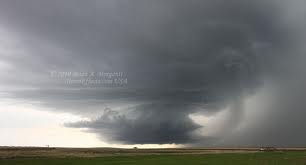 We are in Aberdeen for the Annual Meeting of the South Dakota Conference of the United Church of Christ. There are six of us from our congregation participating. And I suspect that the others all feel like I do. Already it has been worth the drive.
We are in Aberdeen for the Annual Meeting of the South Dakota Conference of the United Church of Christ. There are six of us from our congregation participating. And I suspect that the others all feel like I do. Already it has been worth the drive.
I’m not a big fan of meetings. That should come as a surprise to people who know what I do, because I go to a lot of meetings. Meetings are in the nature of my work. And I participate in additional volunteer activities that involve meetings. Still, I think that the real work of the church rarely occurs in meetings. We are at our best when we are engaged in hands-on service, working side-by-side and shoulder-to-shoulder to help others. We shine in worship when we offer the best of our words, music, motion and presence to God.
Maybe that is what made the trip worth it. We began our time together last evening with a wonderful meal and then went into the sanctuary to worship together. As a regular worship leader, I don’t have too many opportunities for worship when I can just sit in the pew and participate without having to think about how much time has passed, what comes next, and what I am going to have to say. Last night I could just worship as a member of the congregation. The service was carefully planned, well crafted and inclusive of the wide diversity of our gathering. There were prayers in the Dakota language, songs both old and new, piano, organ, guitar and vocal numbers. We even had a song accompanied by the rattling of deer antlers. And we heard a powerful and well-delivered sermon my David Greenhaw. David is the president of Eden Theological Seminary and a good friend. He is also a gifted preacher. He is one of the few people I know who shines at keynote, lecture, study-leadership and preaching. He knows the different forms of speaking and excels at them all.
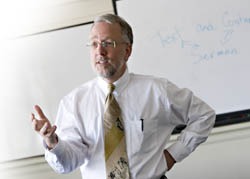 David says, “I always want to remind my students of the ‘dangers of preaching.’ Because preaching can change people’s lives, it is important not to misuse this authority. Everyone who has been called to the ministry and given the power to preach must carefully consider what they are doing.”
David says, “I always want to remind my students of the ‘dangers of preaching.’ Because preaching can change people’s lives, it is important not to misuse this authority. Everyone who has been called to the ministry and given the power to preach must carefully consider what they are doing.”
He practices what he preaches.
But there is another reason why we have come so many miles to gather. Being the church simply isn’t something that we can do all by ourselves. This applies to individuals and it applies to congregations. Not only can I be a church all by myself as an individual, our congregation cannot be the church in isolation as if we were the only congregation. We belong to each other. And that belonging is a strong tie that compels us to get together and to share on a regular basis. Paul put it this way to the people at Corinth: “Now you are the body of Christ and individually members of it.” (I Cor. 12:27)
This calling to which we have responded is one that brings us together again and again. Of course there are great joys to gathering. After 17 years in the South Dakota Conference, most of the faces are familiar to me. There are a few that I don’t get to see regularly and so our annual meetings have a bit of the quality of a reunion for me. There are people that I want to see and I enjoy catching up with what is going on in their lives.
There is also a great deal of work that needs to be done. The meetings today will be challenging as we continue to figure out what God is calling us to do in a time of decreased membership and decreased revenues. We know in our heads that God will provide the resources necessary for us to be the church, but sometimes we come close to despair when we try to balance a budget. It is easy to see that we want to do more work together than our resources allow and it is difficult to think of any particular project or ministry going unfunded. Still we are finite. Our resources are not unlimited. We are able to imagine more than we can accomplish. So there is frustration.
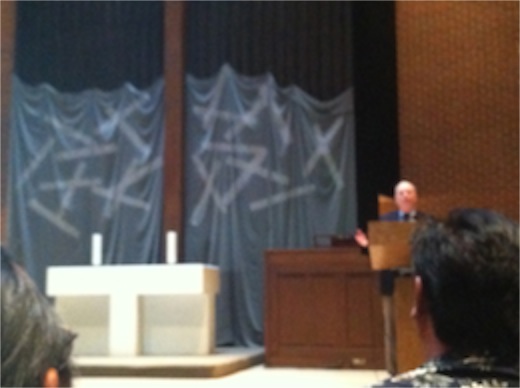 And we are a gathering that includes a lot of preachers. That means that some will overstep their access to the microphone. Some will feel compelled to teach or preach or admonish others when silence may be the better part. Some will simply keep talking even after others are in agreement. We all are prone to be a bit careless with the gift of time that has been offered by others. In the midst of all of this, I am sure that there will be moments when my mind wanders. I don’t always stay completely focused on the business at hand. Sometimes the business of our gathering doesn’t seem as important to me as it does to someone else.
And we are a gathering that includes a lot of preachers. That means that some will overstep their access to the microphone. Some will feel compelled to teach or preach or admonish others when silence may be the better part. Some will simply keep talking even after others are in agreement. We all are prone to be a bit careless with the gift of time that has been offered by others. In the midst of all of this, I am sure that there will be moments when my mind wanders. I don’t always stay completely focused on the business at hand. Sometimes the business of our gathering doesn’t seem as important to me as it does to someone else.
We are, after all, a gathering of humans: imperfect, perplexing, complex, frustrating, and wonderful. Our church, as we were reminded last night, is really wonderful. Our connections are really powerful. Our ministry is really meaningful. But, as Paul writes, “we carry this treasure in earthen vessels.” (2 Cor. 4:7) This wonderful church is trusted to our imperfect lives in this sometimes-troubled generation.
All in all, I’m still up for a road trip. 670 miles round trip is a short distance week for me. And all of the miles seem to me to be worth it when we worship together.

I’m not a big fan of meetings. That should come as a surprise to people who know what I do, because I go to a lot of meetings. Meetings are in the nature of my work. And I participate in additional volunteer activities that involve meetings. Still, I think that the real work of the church rarely occurs in meetings. We are at our best when we are engaged in hands-on service, working side-by-side and shoulder-to-shoulder to help others. We shine in worship when we offer the best of our words, music, motion and presence to God.
Maybe that is what made the trip worth it. We began our time together last evening with a wonderful meal and then went into the sanctuary to worship together. As a regular worship leader, I don’t have too many opportunities for worship when I can just sit in the pew and participate without having to think about how much time has passed, what comes next, and what I am going to have to say. Last night I could just worship as a member of the congregation. The service was carefully planned, well crafted and inclusive of the wide diversity of our gathering. There were prayers in the Dakota language, songs both old and new, piano, organ, guitar and vocal numbers. We even had a song accompanied by the rattling of deer antlers. And we heard a powerful and well-delivered sermon my David Greenhaw. David is the president of Eden Theological Seminary and a good friend. He is also a gifted preacher. He is one of the few people I know who shines at keynote, lecture, study-leadership and preaching. He knows the different forms of speaking and excels at them all.

He practices what he preaches.
But there is another reason why we have come so many miles to gather. Being the church simply isn’t something that we can do all by ourselves. This applies to individuals and it applies to congregations. Not only can I be a church all by myself as an individual, our congregation cannot be the church in isolation as if we were the only congregation. We belong to each other. And that belonging is a strong tie that compels us to get together and to share on a regular basis. Paul put it this way to the people at Corinth: “Now you are the body of Christ and individually members of it.” (I Cor. 12:27)
This calling to which we have responded is one that brings us together again and again. Of course there are great joys to gathering. After 17 years in the South Dakota Conference, most of the faces are familiar to me. There are a few that I don’t get to see regularly and so our annual meetings have a bit of the quality of a reunion for me. There are people that I want to see and I enjoy catching up with what is going on in their lives.
There is also a great deal of work that needs to be done. The meetings today will be challenging as we continue to figure out what God is calling us to do in a time of decreased membership and decreased revenues. We know in our heads that God will provide the resources necessary for us to be the church, but sometimes we come close to despair when we try to balance a budget. It is easy to see that we want to do more work together than our resources allow and it is difficult to think of any particular project or ministry going unfunded. Still we are finite. Our resources are not unlimited. We are able to imagine more than we can accomplish. So there is frustration.

We are, after all, a gathering of humans: imperfect, perplexing, complex, frustrating, and wonderful. Our church, as we were reminded last night, is really wonderful. Our connections are really powerful. Our ministry is really meaningful. But, as Paul writes, “we carry this treasure in earthen vessels.” (2 Cor. 4:7) This wonderful church is trusted to our imperfect lives in this sometimes-troubled generation.
All in all, I’m still up for a road trip. 670 miles round trip is a short distance week for me. And all of the miles seem to me to be worth it when we worship together.
Copyright © 2012 by Ted Huffman. I wrote this. If you want to copy it, please ask for permission. There is a contact me button at the bottom of this page. If you want to share my blog a friend, please direct your friend to my web site.
Keep Looking Up
01/06/12 05:50
Today’s blog takes a look at things that have been falling from the sky. There have been several headlines about falling things that have caught my attention.

For over a month now, clouds of steam and ash have been rising from Popocatepetl, a dramatic 17,800-foot volcano that is visible from Mexico City. The mountain, called “Popo” by locals, was completely dormant for more than fifty years before reawakening in 1994, but the activity has been relatively minor until April 12 when it began to be rocked by earthquakes. Since then it has spewed out plumes of gas and multiple explosions have shot glowing rocks from the summit. According to geologists, the mountain has the potential to erupt violently every 2,000 or 3,000 years.
Perhaps the biggest danger from the mountain is of mudflow, also called debris flows or lahars. Such flows occur when water suddenly mixes with volcanic ash near a volcano’s summit. Water can come from melting glaciers or from heavy rains. The results can be devastating. The 1985 eruption of Nevado del Ruiz in Columbia killed more than 23,000 in the mudflow. It is technically accurate to describer such flows as “mud,” but it probably makes more sense to think of them as “cement.” The wall of debris is extremely sticky. People who are caught in flows are unable to extract themselves. Even trained workers have a difficult time extracting people from the flows.
There is a lot of geological evidence of massive mudflows from Popocatepeti about 11,000 years ago that inundated surrounding valleys. Popocatepeti sits roughly halfway between Mexico City and the city of Puebla. That means that 25 million people live within a 60-mile radius of the mountain. If additional activity creates a need for evacuations, there are a lot of people who might have to move. No country has the infrastructure to handle 25 million refugees.
The alert level has been raised and Mexican authorities have been preparing evacuation routes and shelters. Authorities say that they have shelters prepared for up to 60,000 people if evacuations are required. However, more than half of the people who live near the volcano say that they will not move. For generations, villagers have seen volcanic activity as acts of God. Attendance at local churches, where prayers are regularly offered that there be no further eruptions, goes up every time there is more activity on the mountain.
So the scientists and urban planners are watching the volcano with care hoping that this round of eruptions will calm without any signs of more massive events. Predictions are, however, that the eruptions will become greater as time passes. For now they watch, wait and pray. And then they pray again.
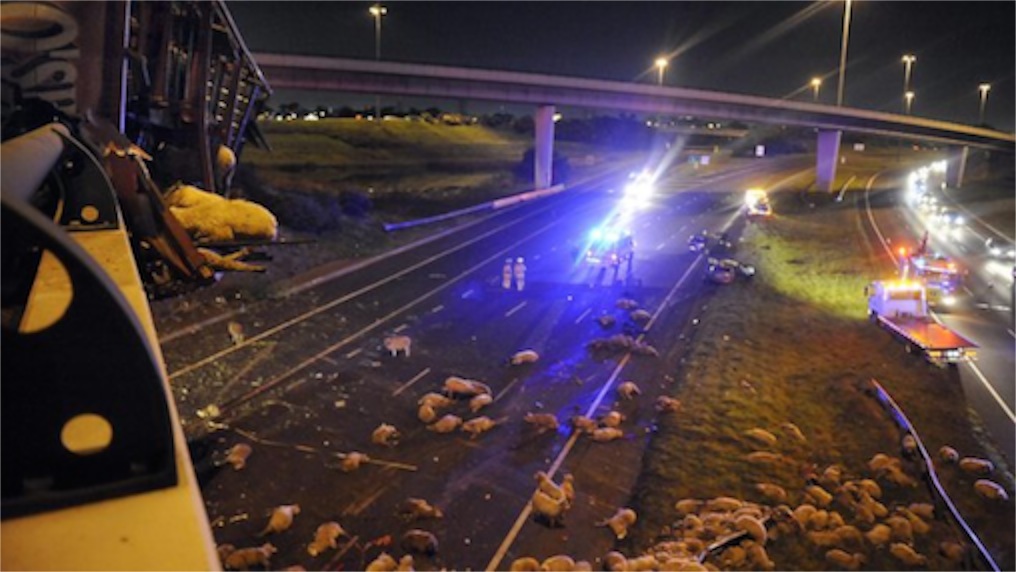
Halfway around the world, it wasn’t falling ash from a volcano that caused havoc on a busy highway in Melbourne, Australia. It was falling sheep. People who know me will understand how the headline caught my attention when it declared, “Hundreds of sheep ‘rain’ on Melbourne motorists.”
At the intersection of two major motorways in Melbourne, a truck carrying 400 sheep rolled on its side and hung over the edge of an overpass. Unsuspecting people driving on the highway below were caught by surprise as sheep fell from the truck. At least two cars took sheep directly in the windshield. One rolled multiple times in the median after swerving amidst the falling sheep. Several cars struck sheep carcasses on the highway. Fortunately no people were injured in the accidents.
The inbound Princes Highway was blocked and one outbound land of the Westgate Freeway also had to be closed as council rangers cleaned up the sheep, rescuing those that survived and loading carcasses onto trucks.
One eyewitness described it this way: “First of all we looked up and we could see the truck flip on its side and the next minute we were underneath and well yea it rained sheep.”
 Meanwhile SpaceX’s Dragon spacecraft dropped to earth as planned. It landed in the Pacific Ocean very close to the planned splashdown point, completing a historic first commercial mission to the International Space Station. The capsule took a half-ton of food and supplies up to the ISS astronauts and brought down about 2/3 ton of completed experiments and unneeded equipment. The plan is for the capsules to begin regular missions to and from the space station. Eventually SpaceX will be also transporting people to and from the station.
Meanwhile SpaceX’s Dragon spacecraft dropped to earth as planned. It landed in the Pacific Ocean very close to the planned splashdown point, completing a historic first commercial mission to the International Space Station. The capsule took a half-ton of food and supplies up to the ISS astronauts and brought down about 2/3 ton of completed experiments and unneeded equipment. The plan is for the capsules to begin regular missions to and from the space station. Eventually SpaceX will be also transporting people to and from the station.
The successful landing of the capsule opens the door for a large contract to provide cargo services and another possible contract later this decade for crew transport services. It is the beginning of private commercial space ventures.
Private ventures were always at the heart of the development of aviation. The first airplanes were largely private ventures. Space exploration, however, has been much more costly. Previously only governments could amass the large amount of funds required for ventures into space. It is clear, however, that a new era is beginning. SpaceX has demonstrated that it is possible for a private company to engage in space travel.
Well, that is about the list of things that have been falling from the sky. As one who was raised around airplanes, I am often looking up. Perhaps I’ll see something falling one of these days.
J. Foley A. Horkheimer, who passed away in 2010, was known for his Star Gazer series on PBS television. He always signed off his show by saying, “Keep looking up!” He wrote a small reflection once that I have kept and refer to from time to time:

For over a month now, clouds of steam and ash have been rising from Popocatepetl, a dramatic 17,800-foot volcano that is visible from Mexico City. The mountain, called “Popo” by locals, was completely dormant for more than fifty years before reawakening in 1994, but the activity has been relatively minor until April 12 when it began to be rocked by earthquakes. Since then it has spewed out plumes of gas and multiple explosions have shot glowing rocks from the summit. According to geologists, the mountain has the potential to erupt violently every 2,000 or 3,000 years.
Perhaps the biggest danger from the mountain is of mudflow, also called debris flows or lahars. Such flows occur when water suddenly mixes with volcanic ash near a volcano’s summit. Water can come from melting glaciers or from heavy rains. The results can be devastating. The 1985 eruption of Nevado del Ruiz in Columbia killed more than 23,000 in the mudflow. It is technically accurate to describer such flows as “mud,” but it probably makes more sense to think of them as “cement.” The wall of debris is extremely sticky. People who are caught in flows are unable to extract themselves. Even trained workers have a difficult time extracting people from the flows.
There is a lot of geological evidence of massive mudflows from Popocatepeti about 11,000 years ago that inundated surrounding valleys. Popocatepeti sits roughly halfway between Mexico City and the city of Puebla. That means that 25 million people live within a 60-mile radius of the mountain. If additional activity creates a need for evacuations, there are a lot of people who might have to move. No country has the infrastructure to handle 25 million refugees.
The alert level has been raised and Mexican authorities have been preparing evacuation routes and shelters. Authorities say that they have shelters prepared for up to 60,000 people if evacuations are required. However, more than half of the people who live near the volcano say that they will not move. For generations, villagers have seen volcanic activity as acts of God. Attendance at local churches, where prayers are regularly offered that there be no further eruptions, goes up every time there is more activity on the mountain.
So the scientists and urban planners are watching the volcano with care hoping that this round of eruptions will calm without any signs of more massive events. Predictions are, however, that the eruptions will become greater as time passes. For now they watch, wait and pray. And then they pray again.

Halfway around the world, it wasn’t falling ash from a volcano that caused havoc on a busy highway in Melbourne, Australia. It was falling sheep. People who know me will understand how the headline caught my attention when it declared, “Hundreds of sheep ‘rain’ on Melbourne motorists.”
At the intersection of two major motorways in Melbourne, a truck carrying 400 sheep rolled on its side and hung over the edge of an overpass. Unsuspecting people driving on the highway below were caught by surprise as sheep fell from the truck. At least two cars took sheep directly in the windshield. One rolled multiple times in the median after swerving amidst the falling sheep. Several cars struck sheep carcasses on the highway. Fortunately no people were injured in the accidents.
The inbound Princes Highway was blocked and one outbound land of the Westgate Freeway also had to be closed as council rangers cleaned up the sheep, rescuing those that survived and loading carcasses onto trucks.
One eyewitness described it this way: “First of all we looked up and we could see the truck flip on its side and the next minute we were underneath and well yea it rained sheep.”

The successful landing of the capsule opens the door for a large contract to provide cargo services and another possible contract later this decade for crew transport services. It is the beginning of private commercial space ventures.
Private ventures were always at the heart of the development of aviation. The first airplanes were largely private ventures. Space exploration, however, has been much more costly. Previously only governments could amass the large amount of funds required for ventures into space. It is clear, however, that a new era is beginning. SpaceX has demonstrated that it is possible for a private company to engage in space travel.
Well, that is about the list of things that have been falling from the sky. As one who was raised around airplanes, I am often looking up. Perhaps I’ll see something falling one of these days.
J. Foley A. Horkheimer, who passed away in 2010, was known for his Star Gazer series on PBS television. He always signed off his show by saying, “Keep looking up!” He wrote a small reflection once that I have kept and refer to from time to time:
Uncharted suns and planets past all counting,
whirling, twirling down unnumbered years,
nations by the trillion, faintly guessed at,
come and gone and still more yet to be;
Incomprehensible.
Far as man made eyes can reach
and farther . . .
perched and poised peer through the night
and seem to beg, plead, cry in our stead
Peace
If only for one Speck of Time
. . . Speck of Space
tonight
HOPE
It seems that the advice “Keep looking up” is still valid.